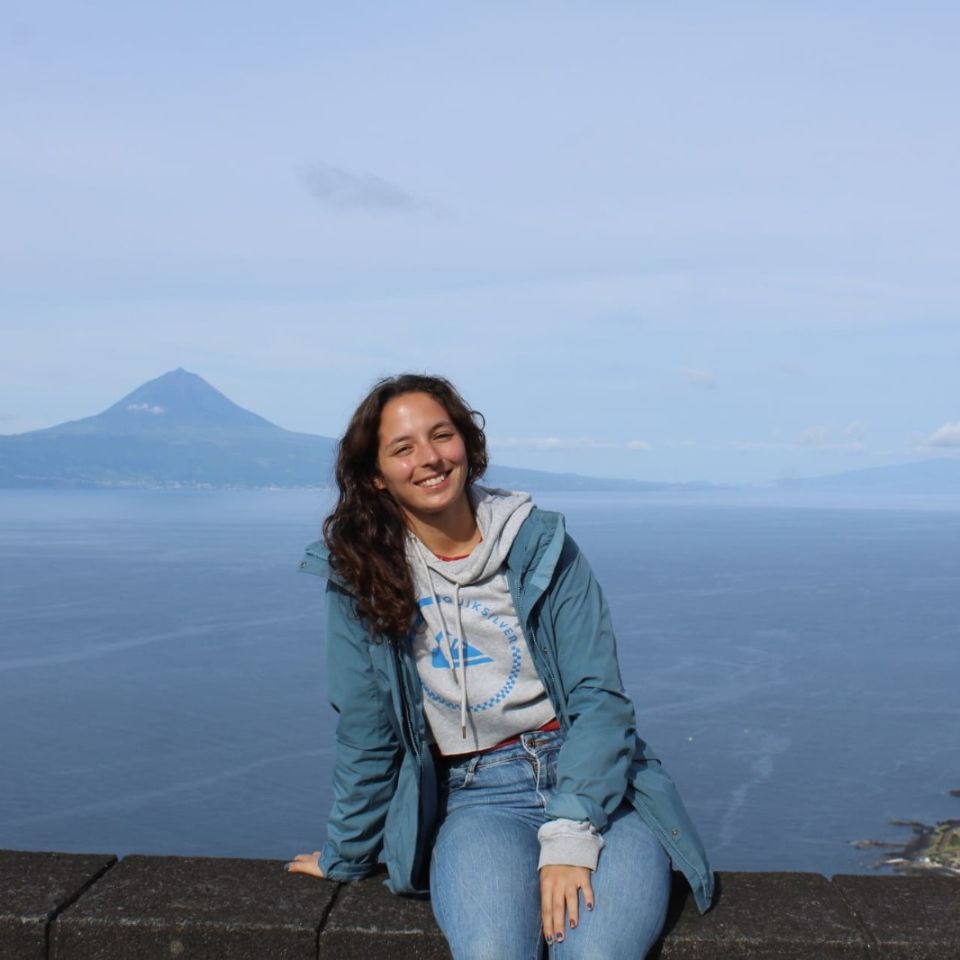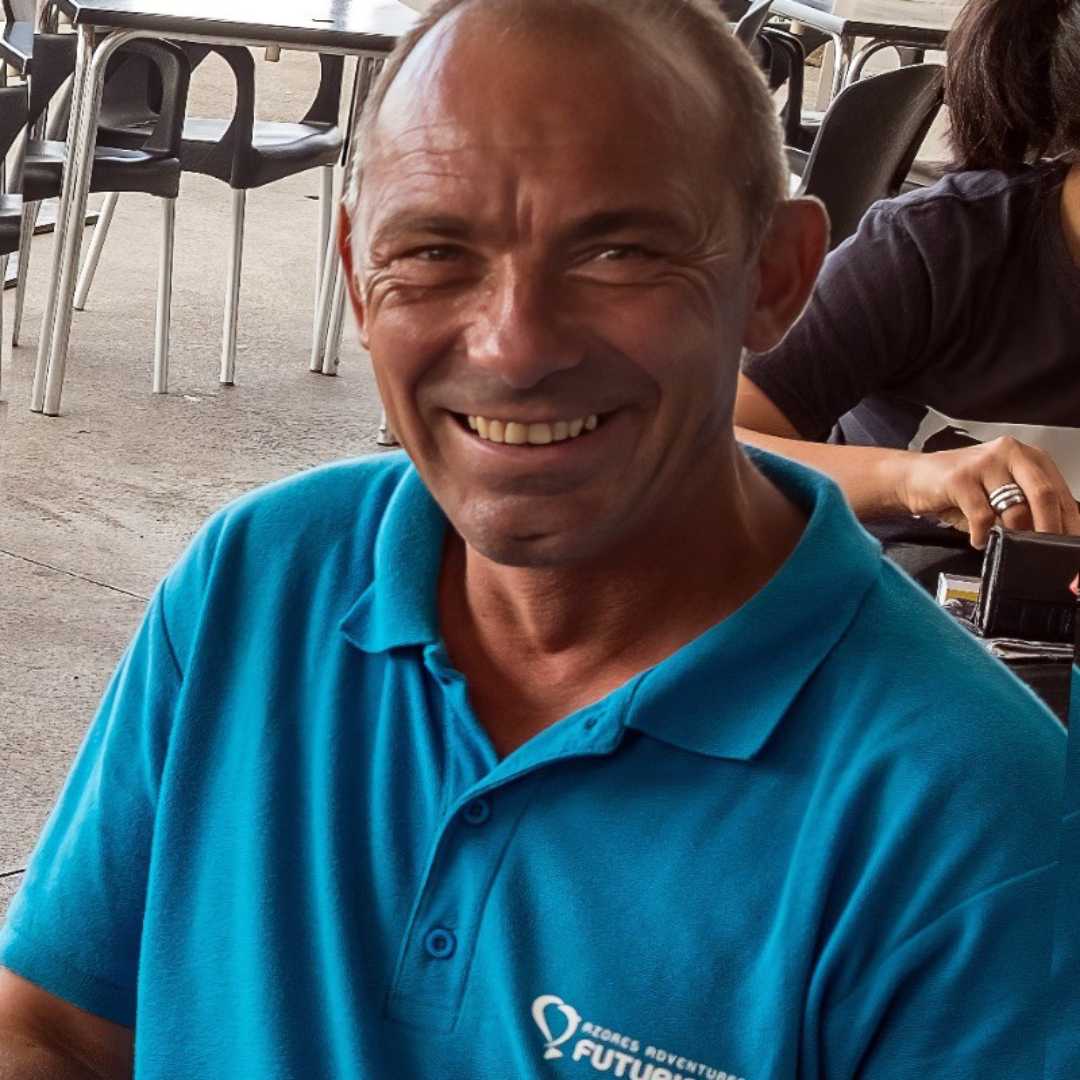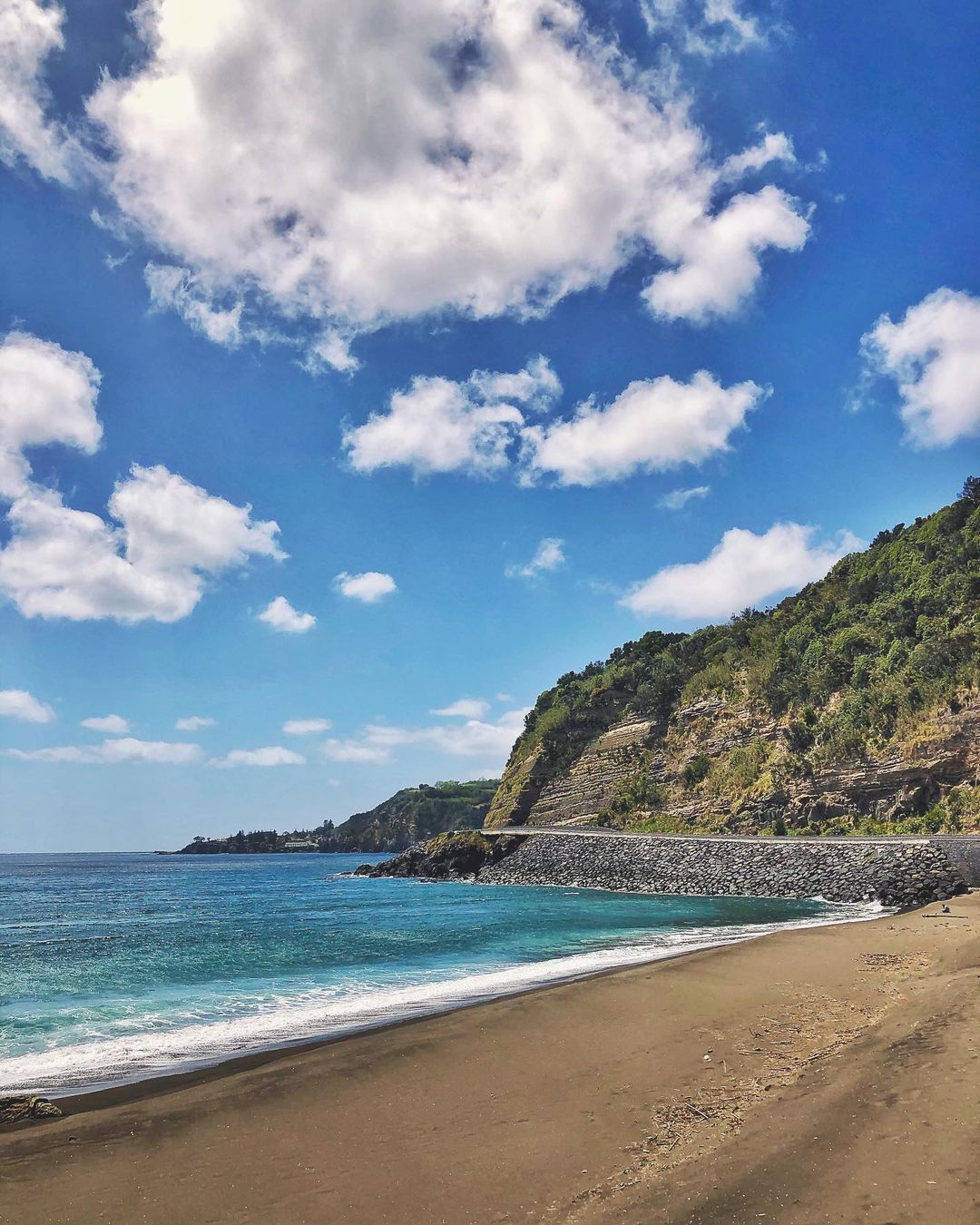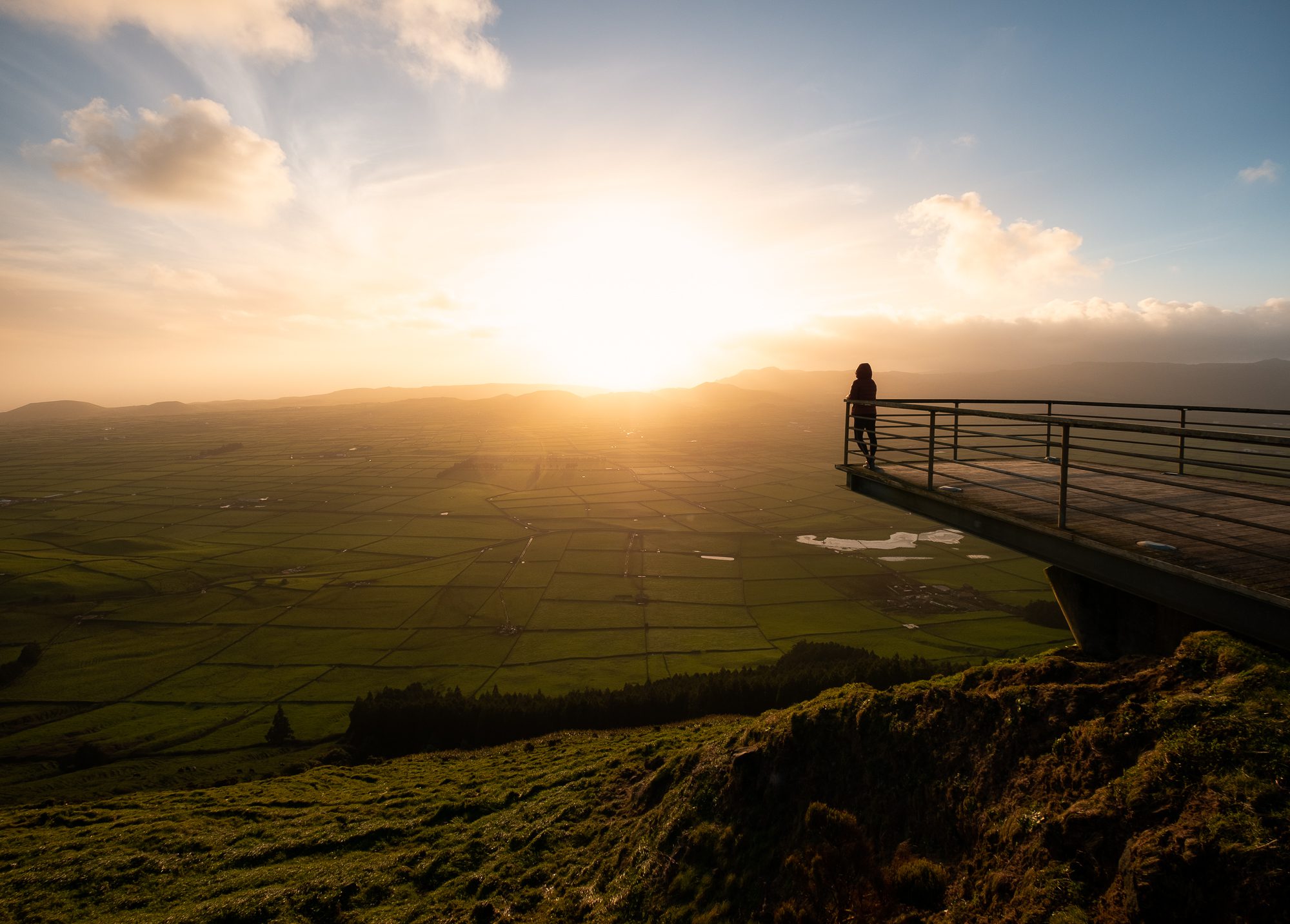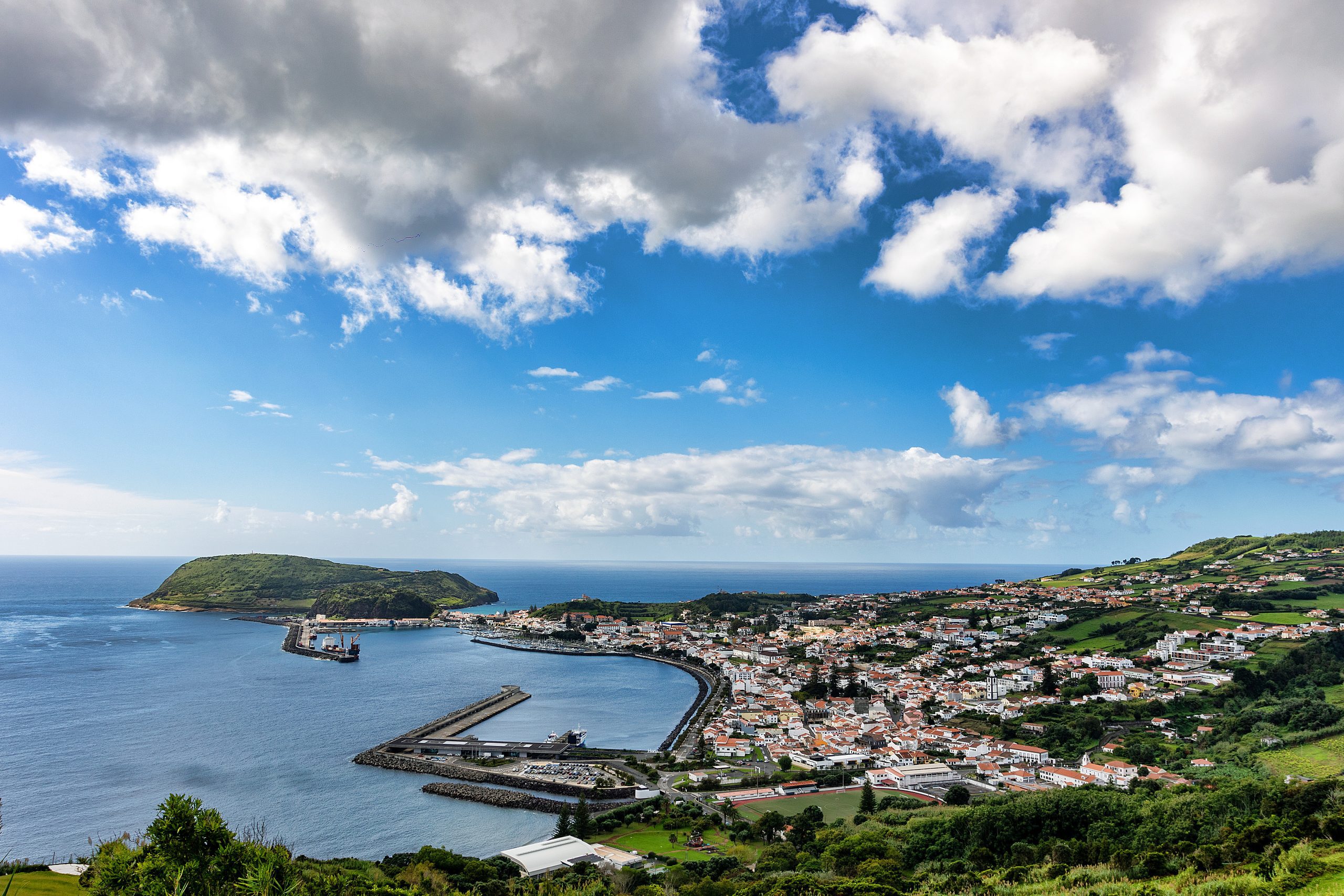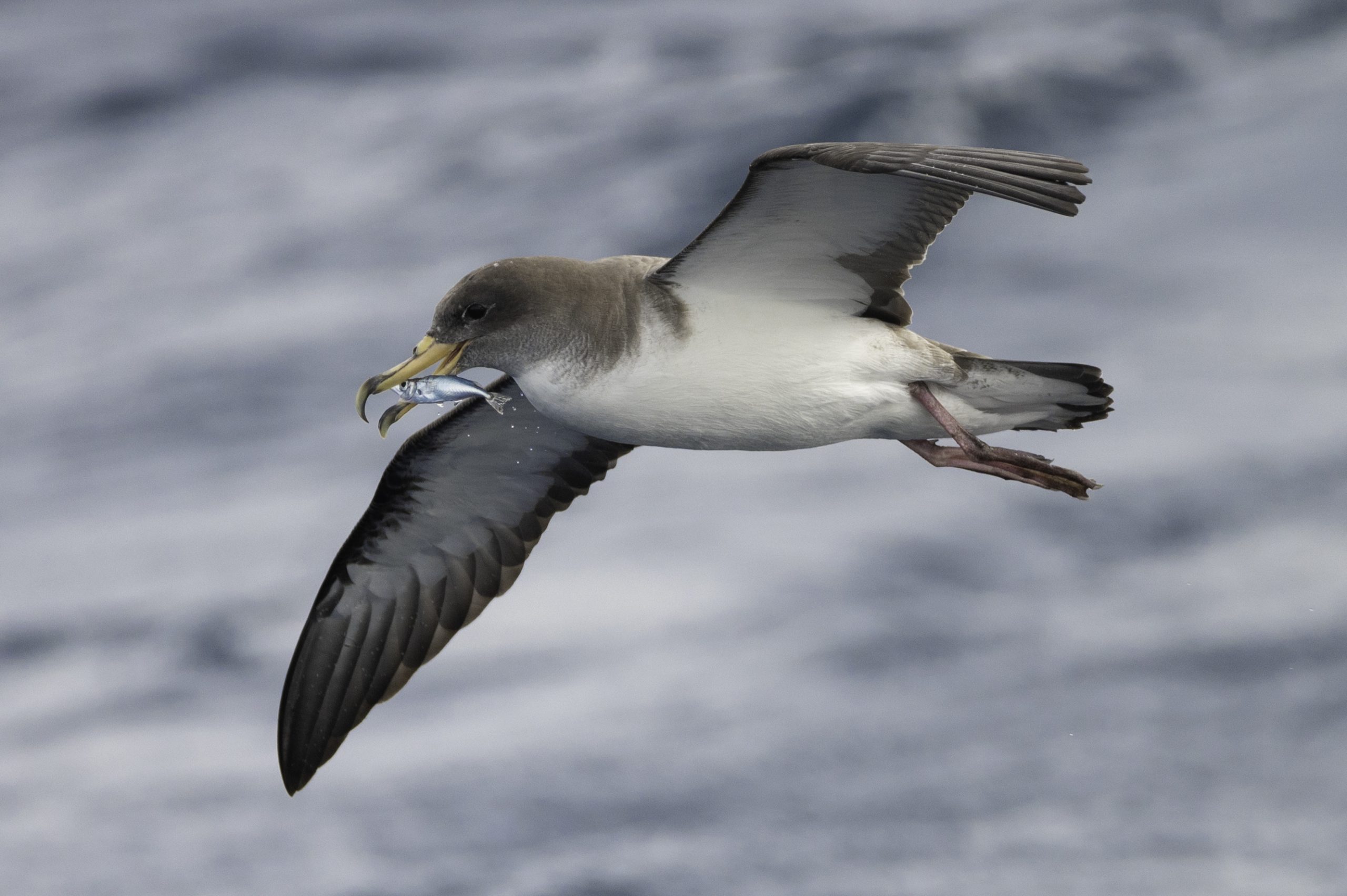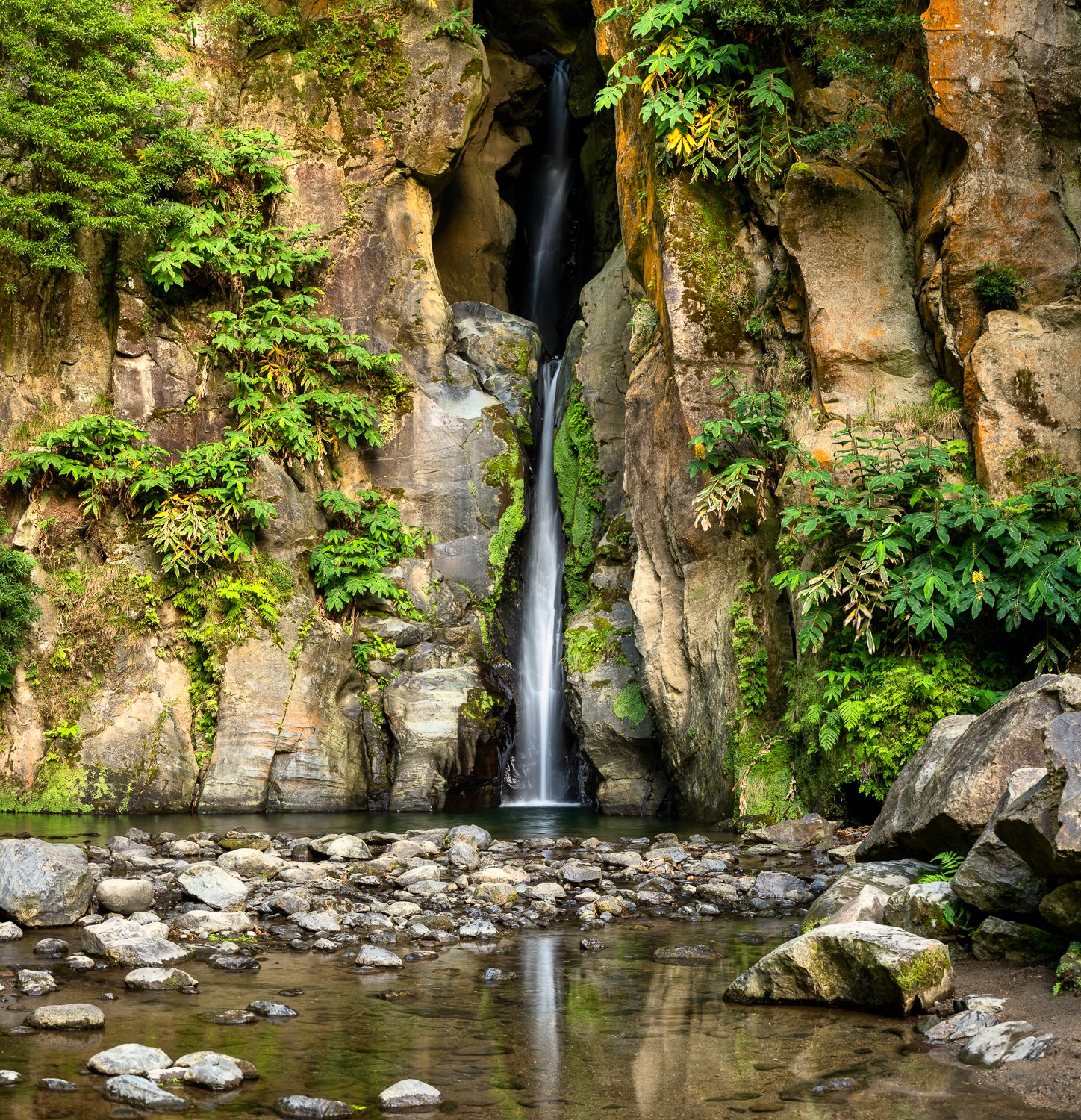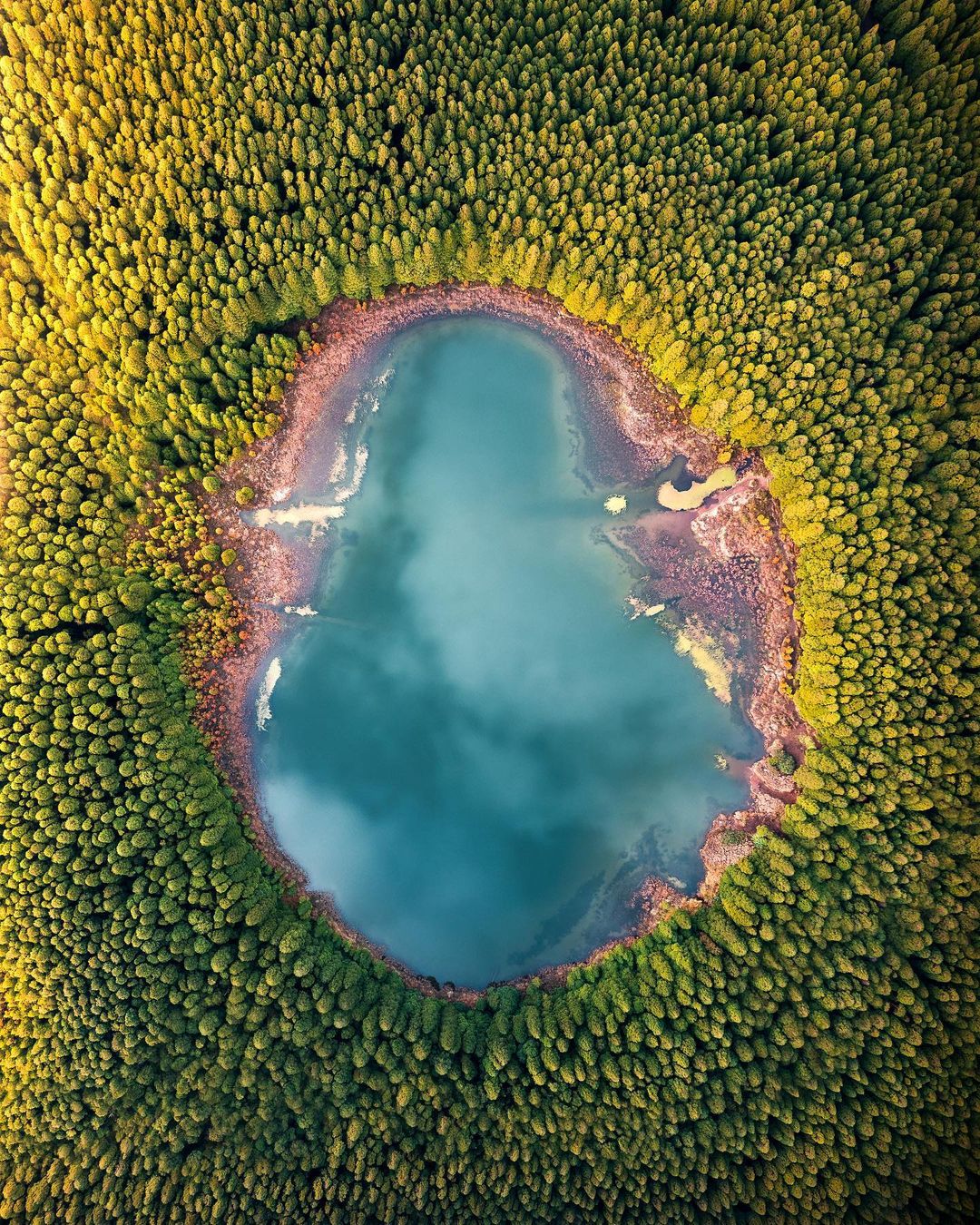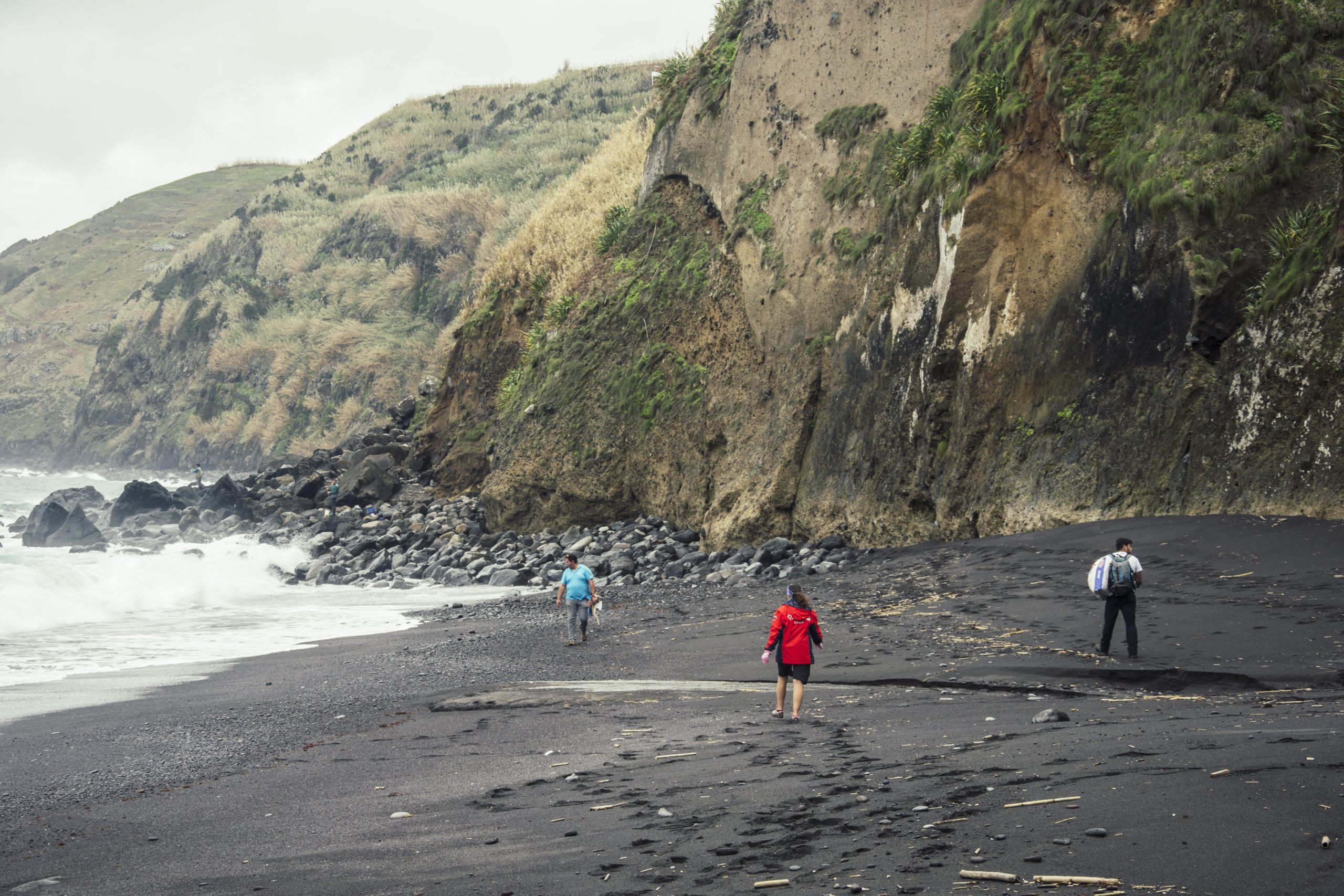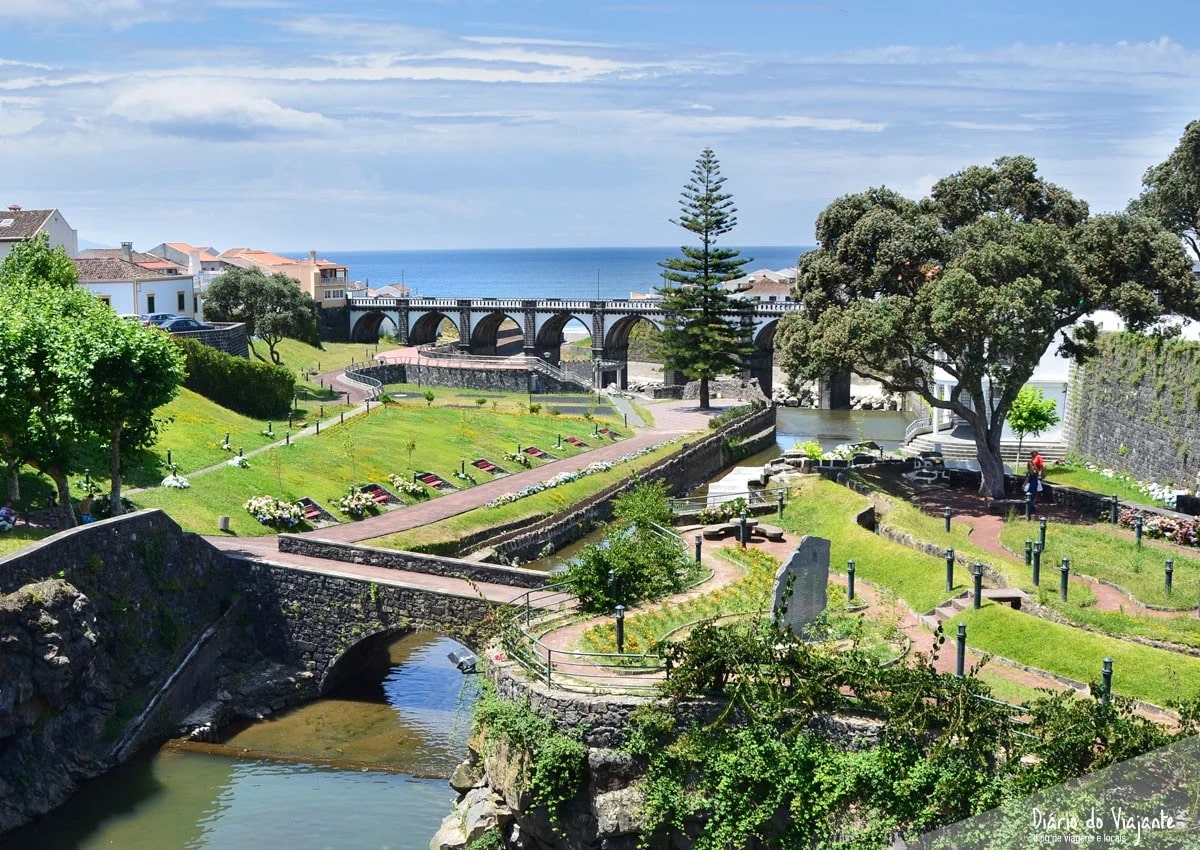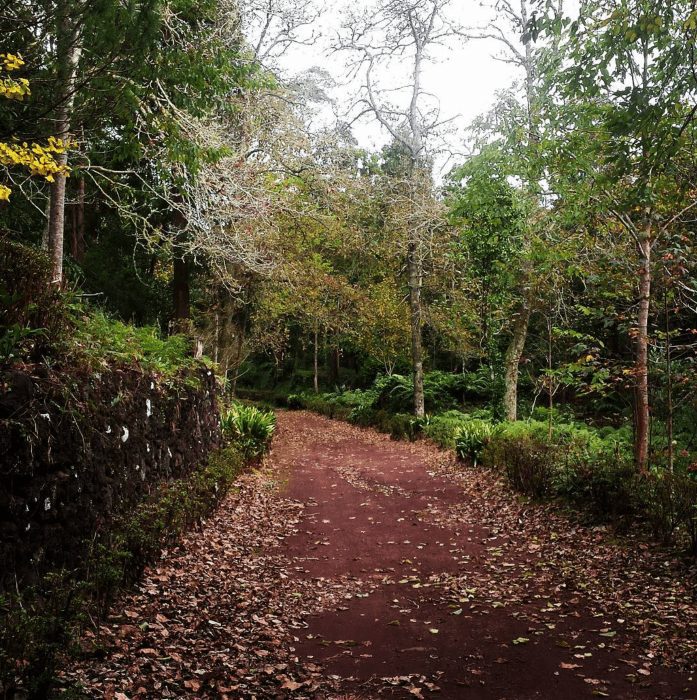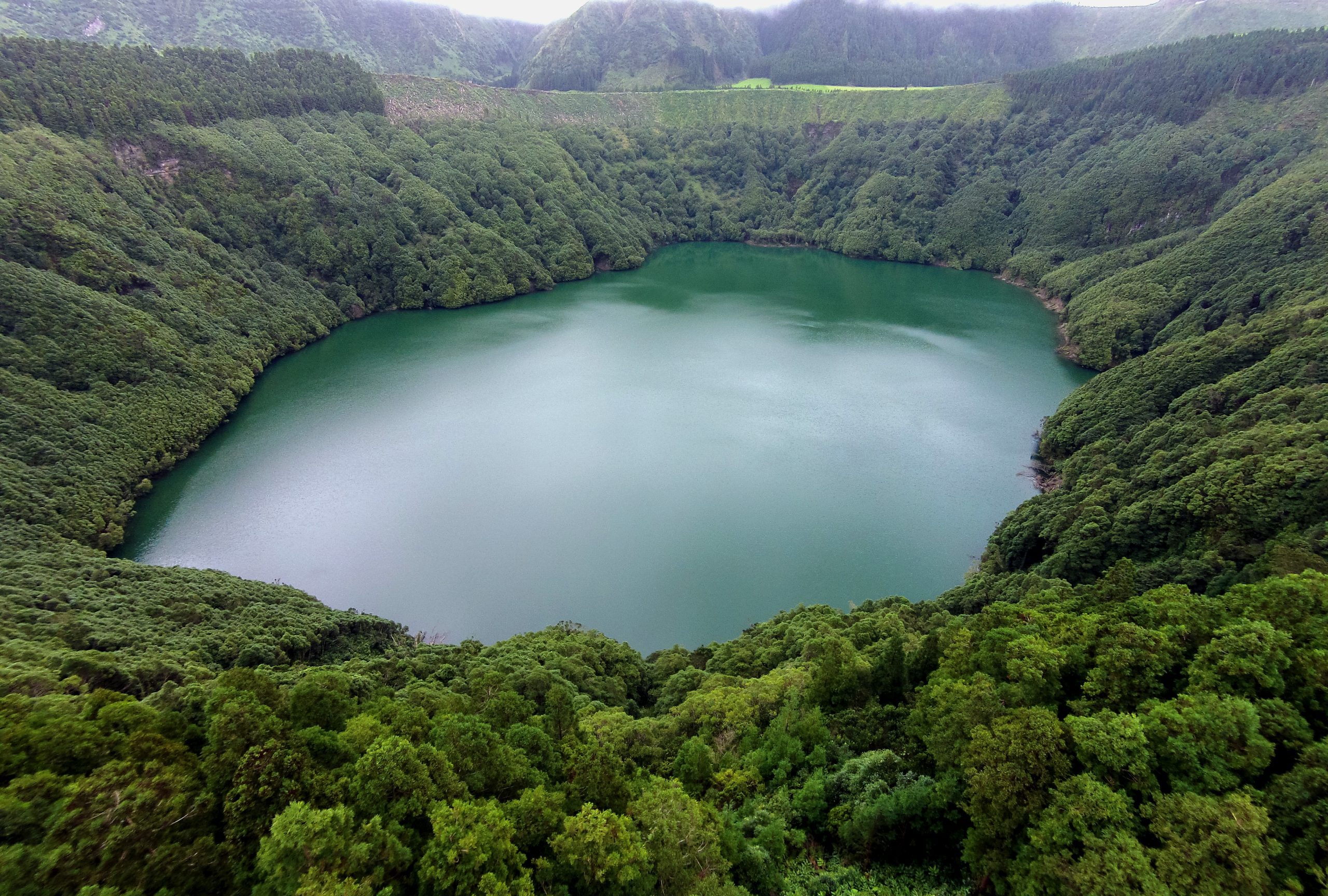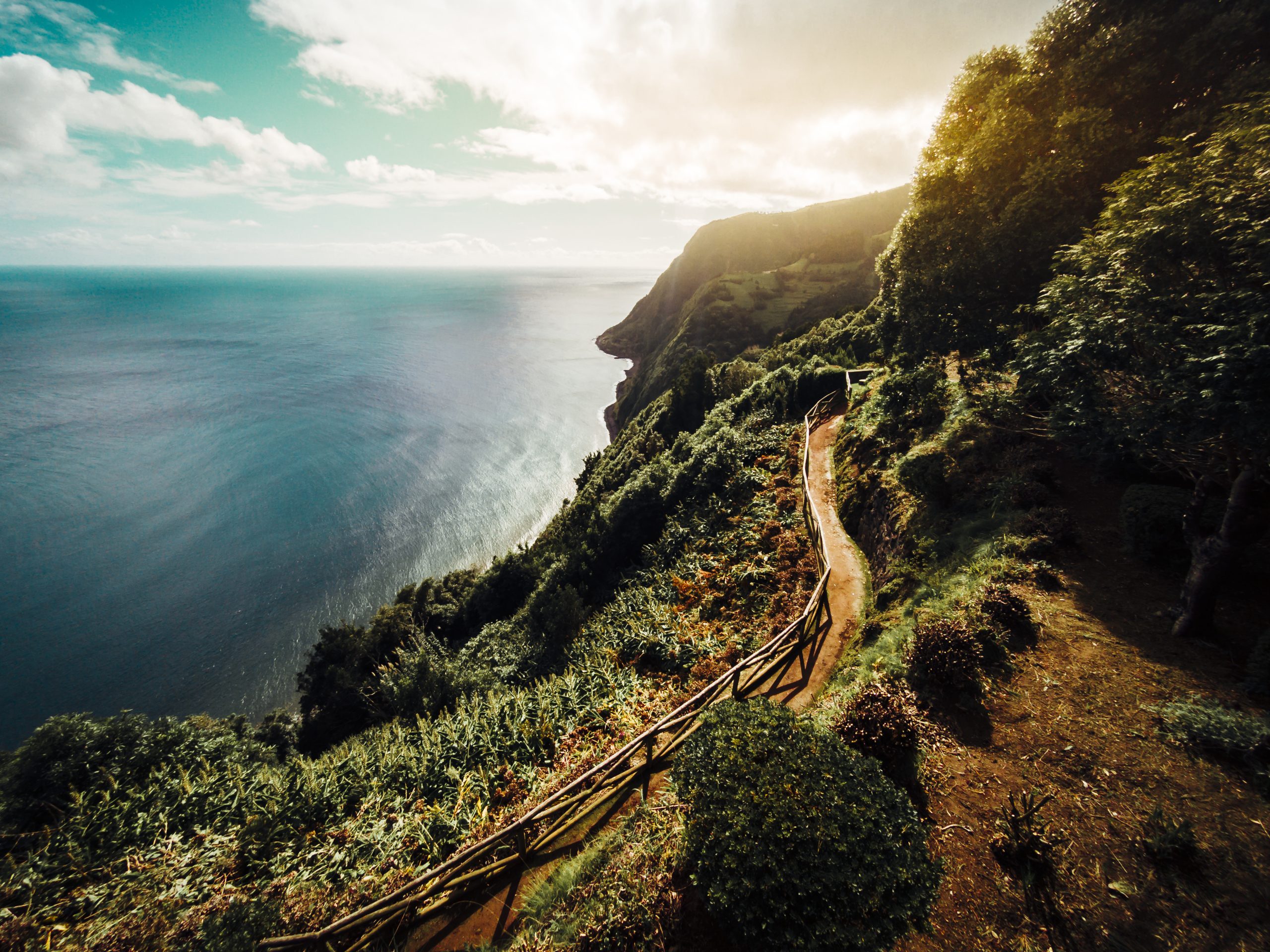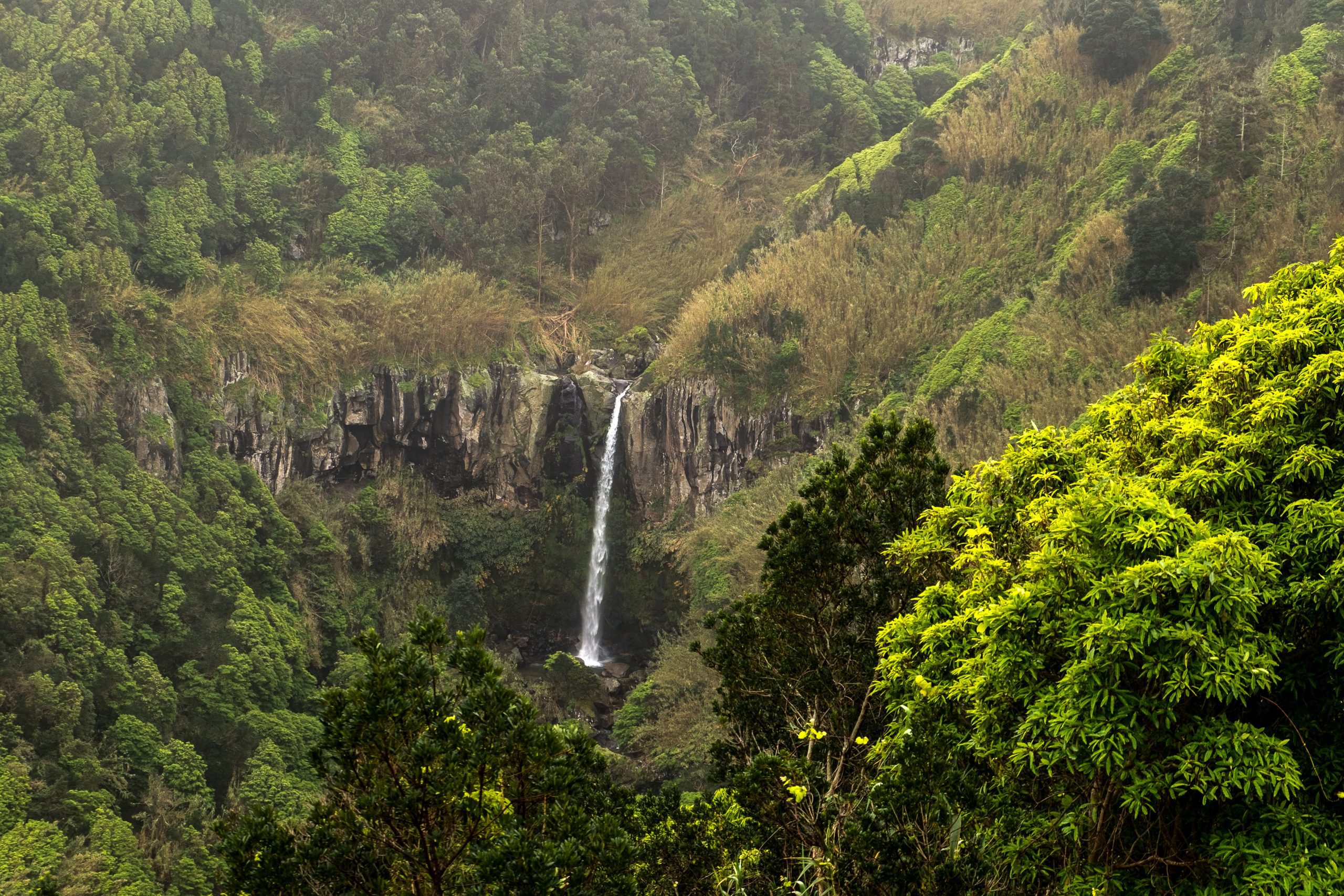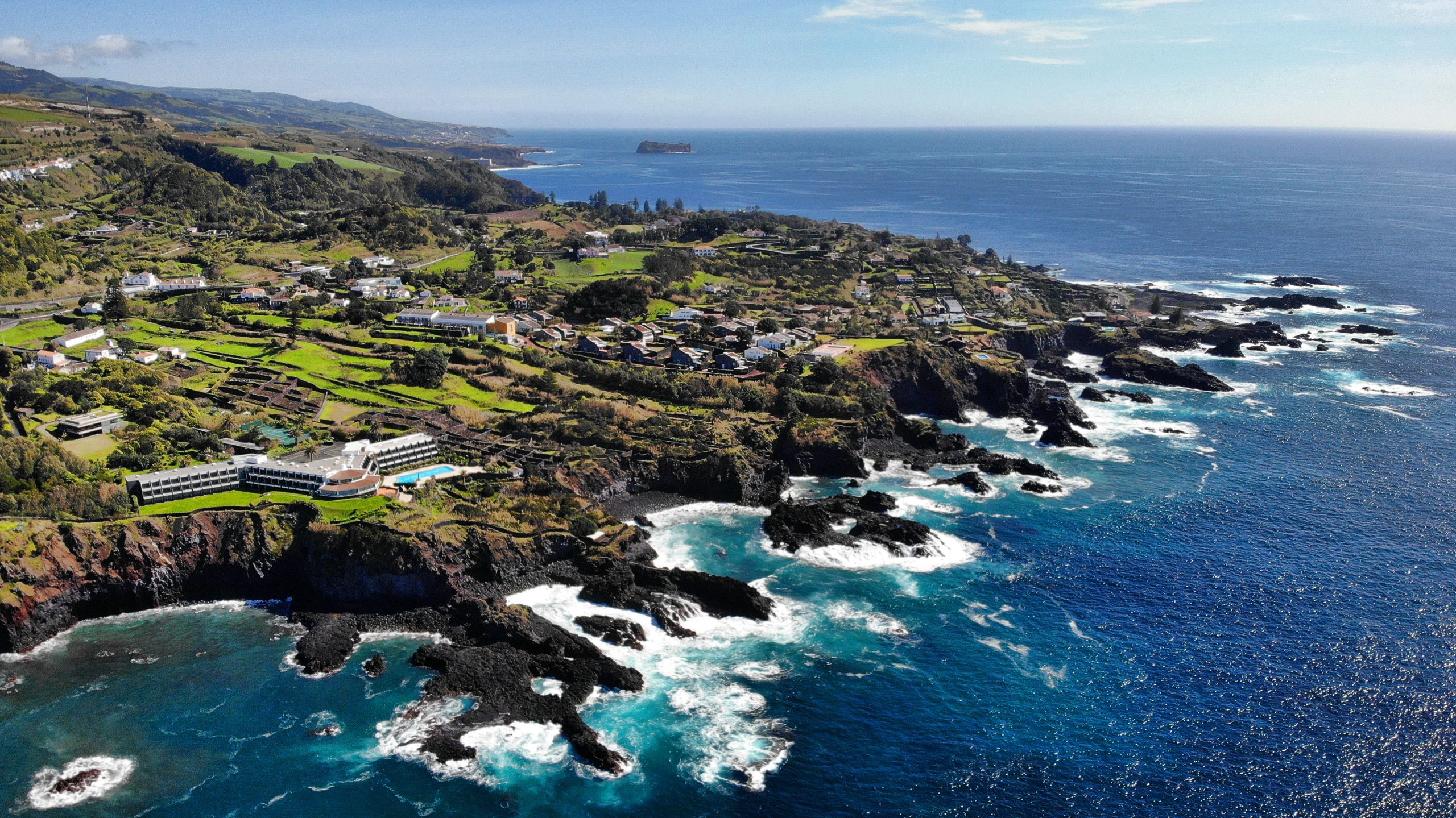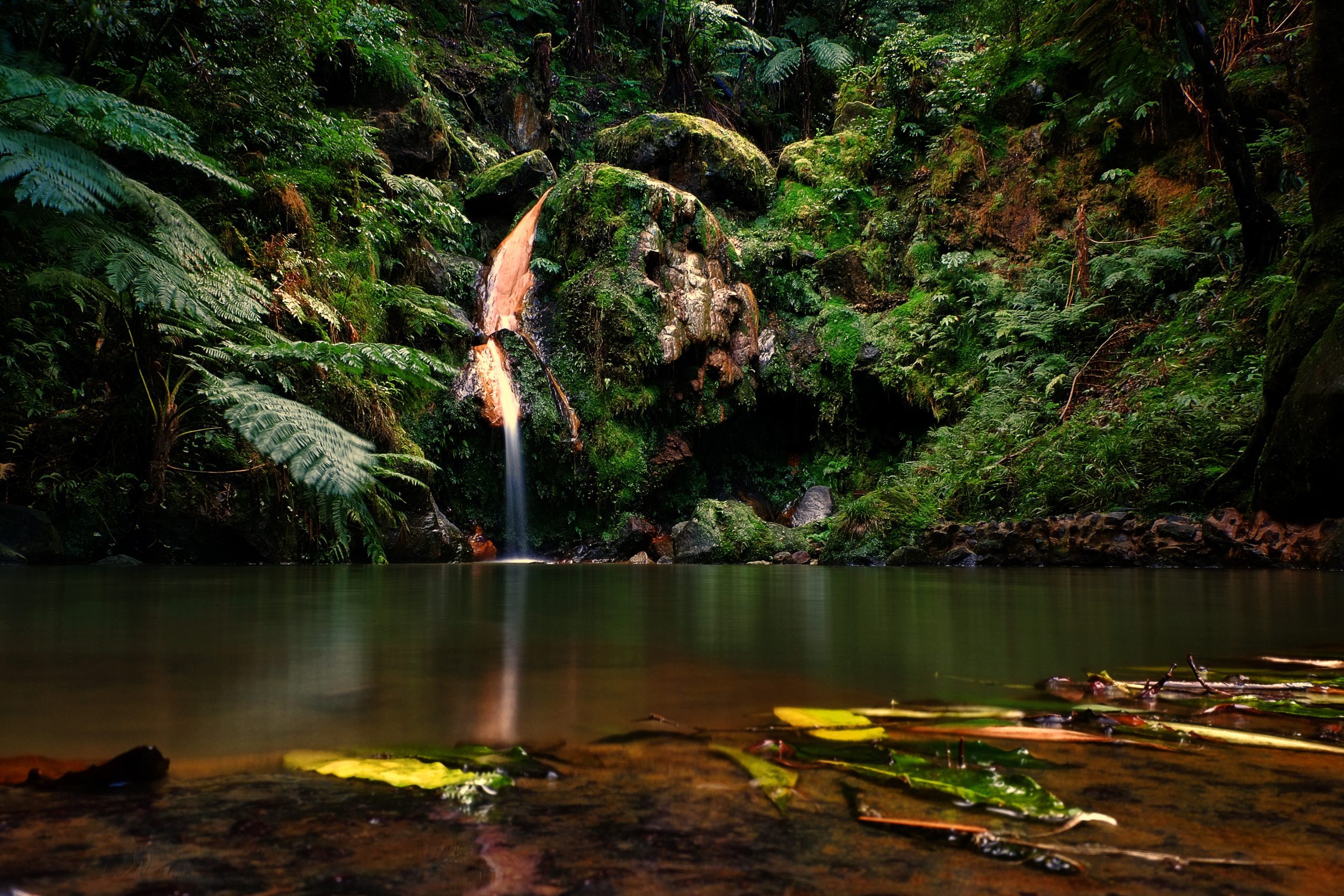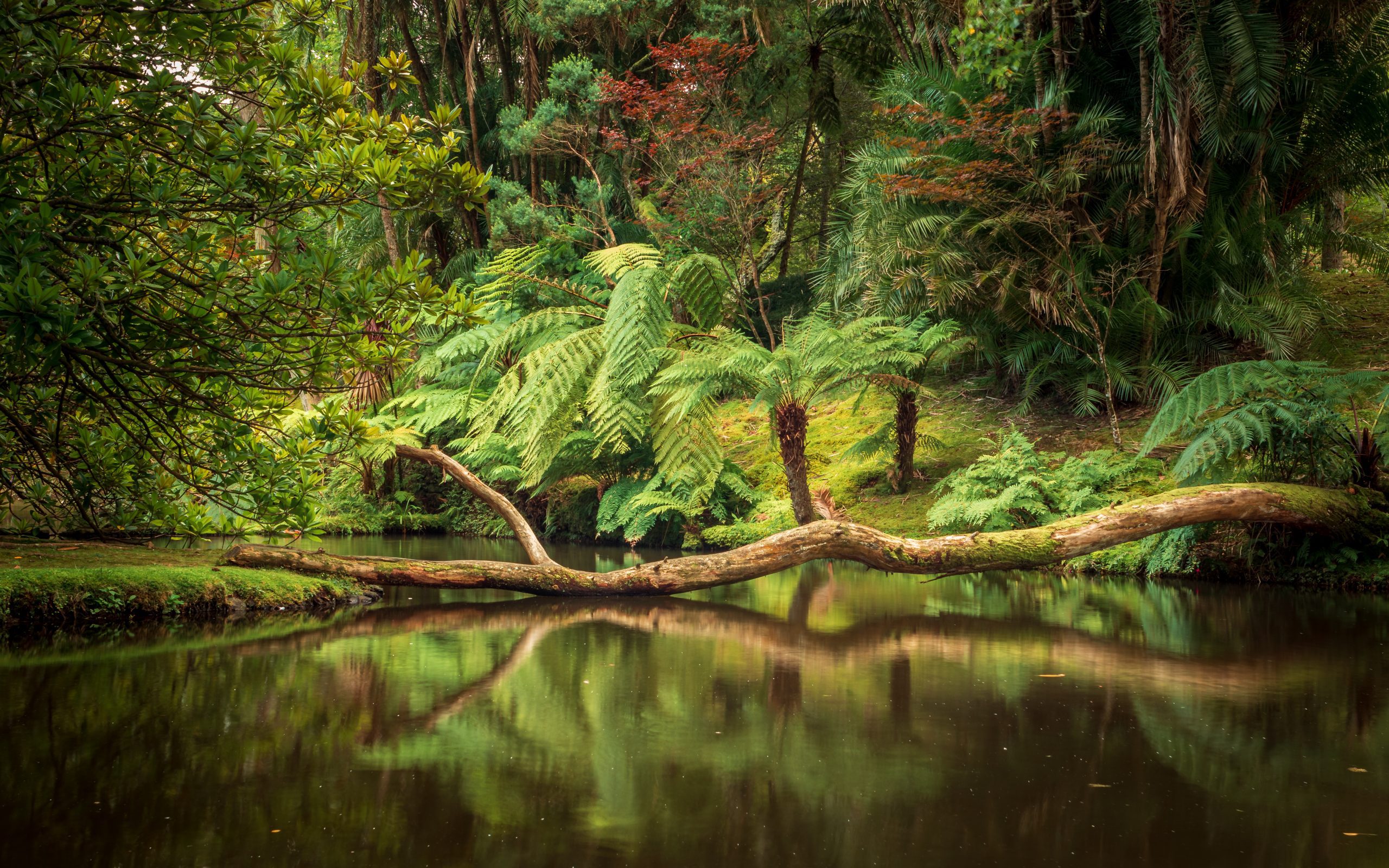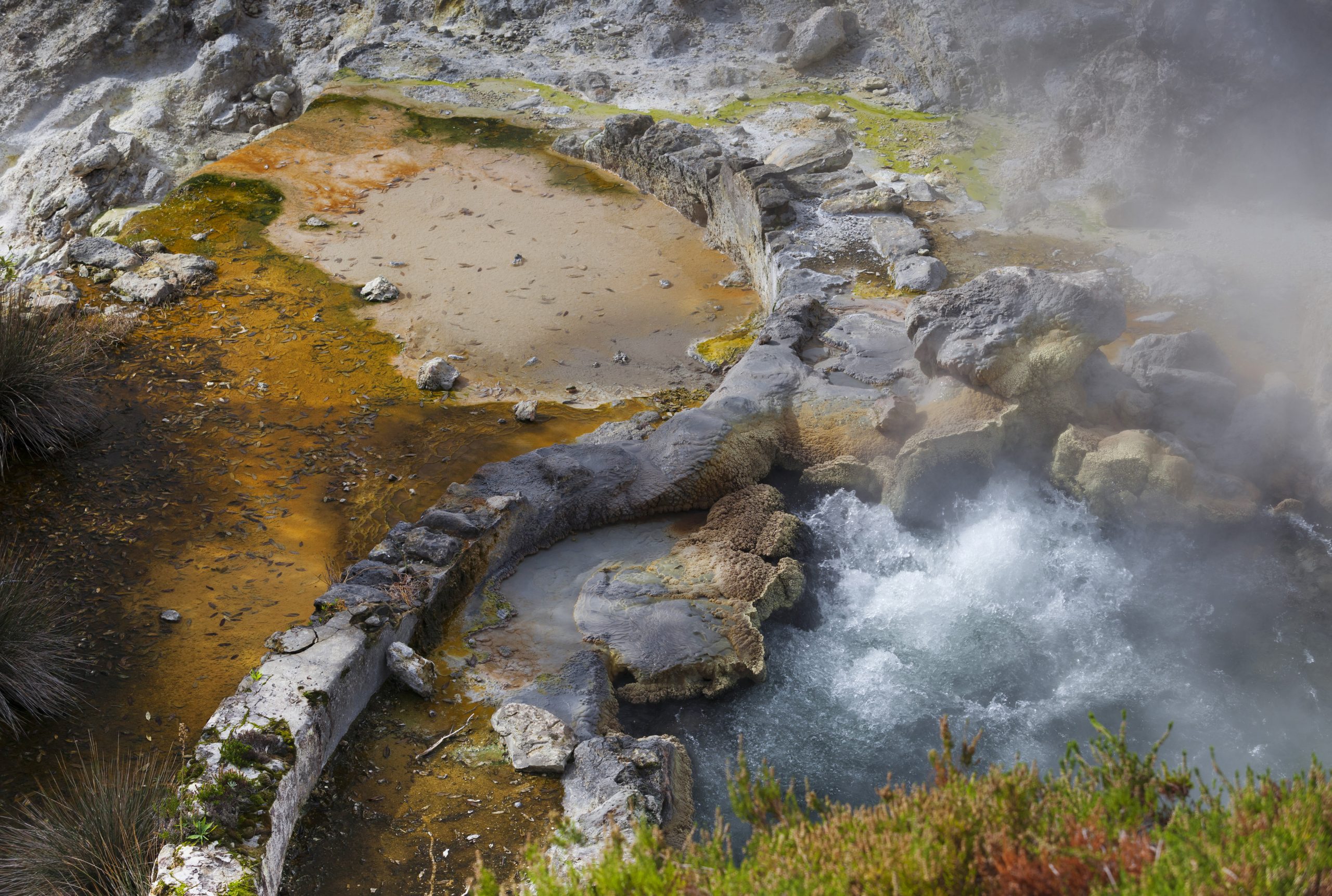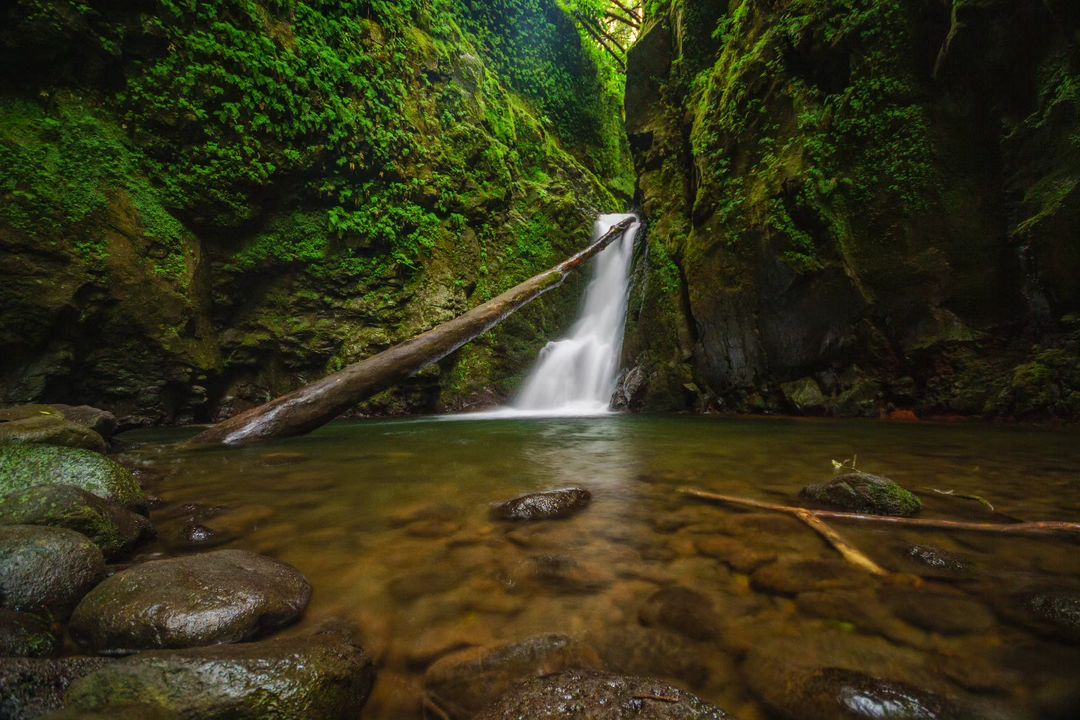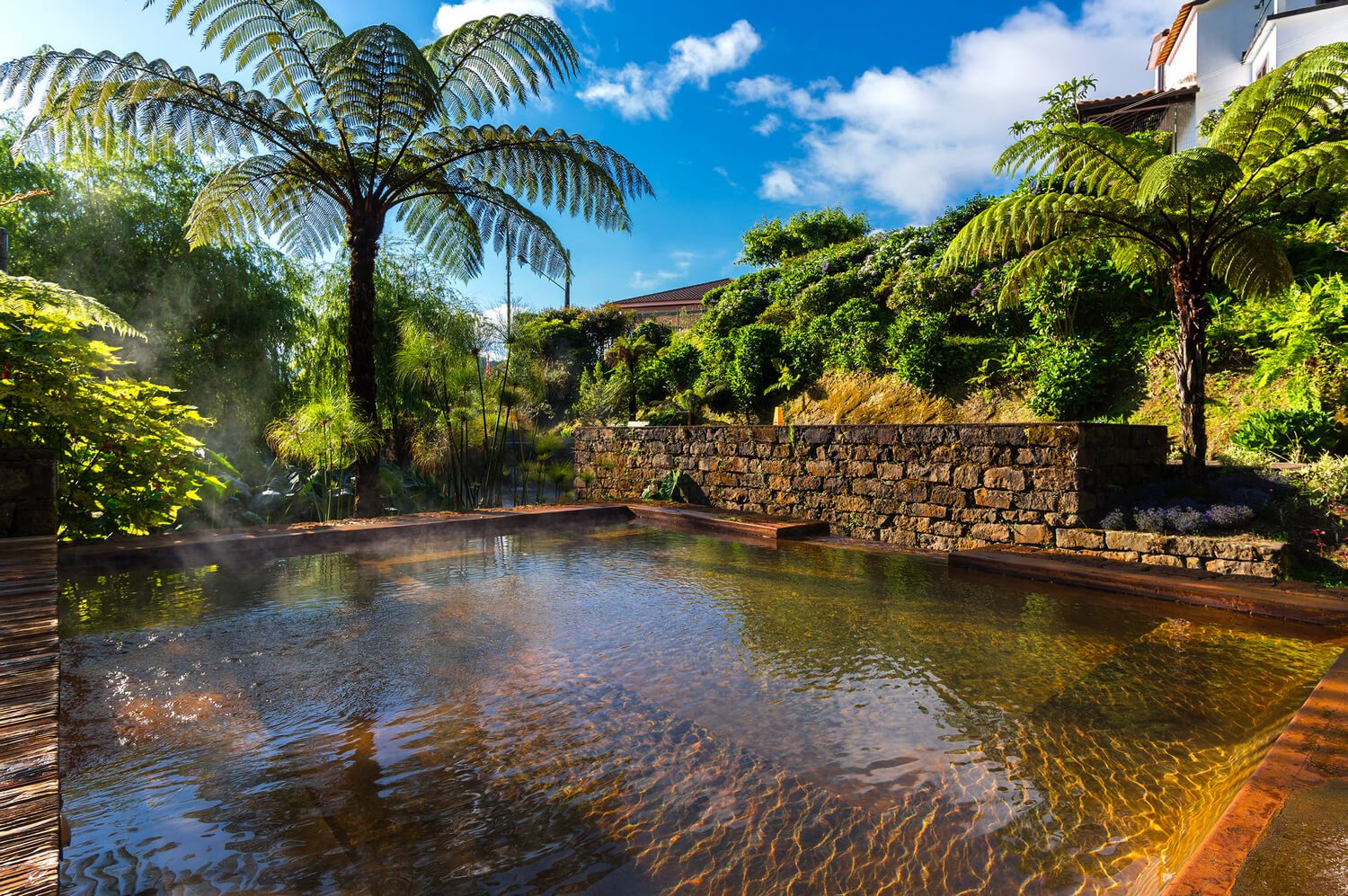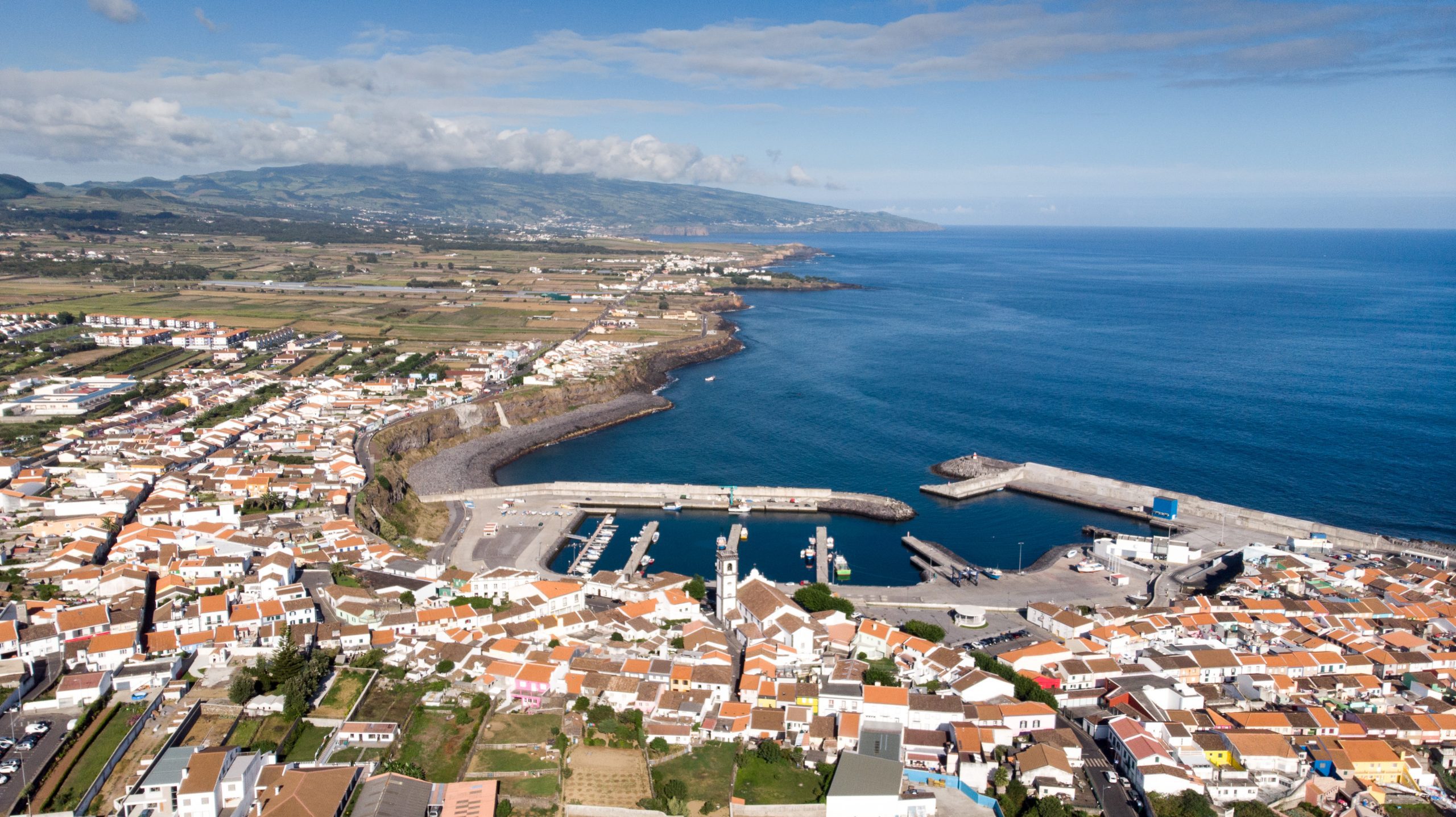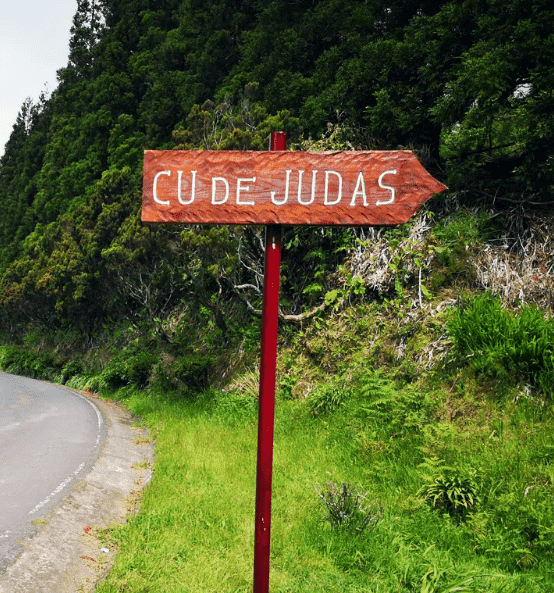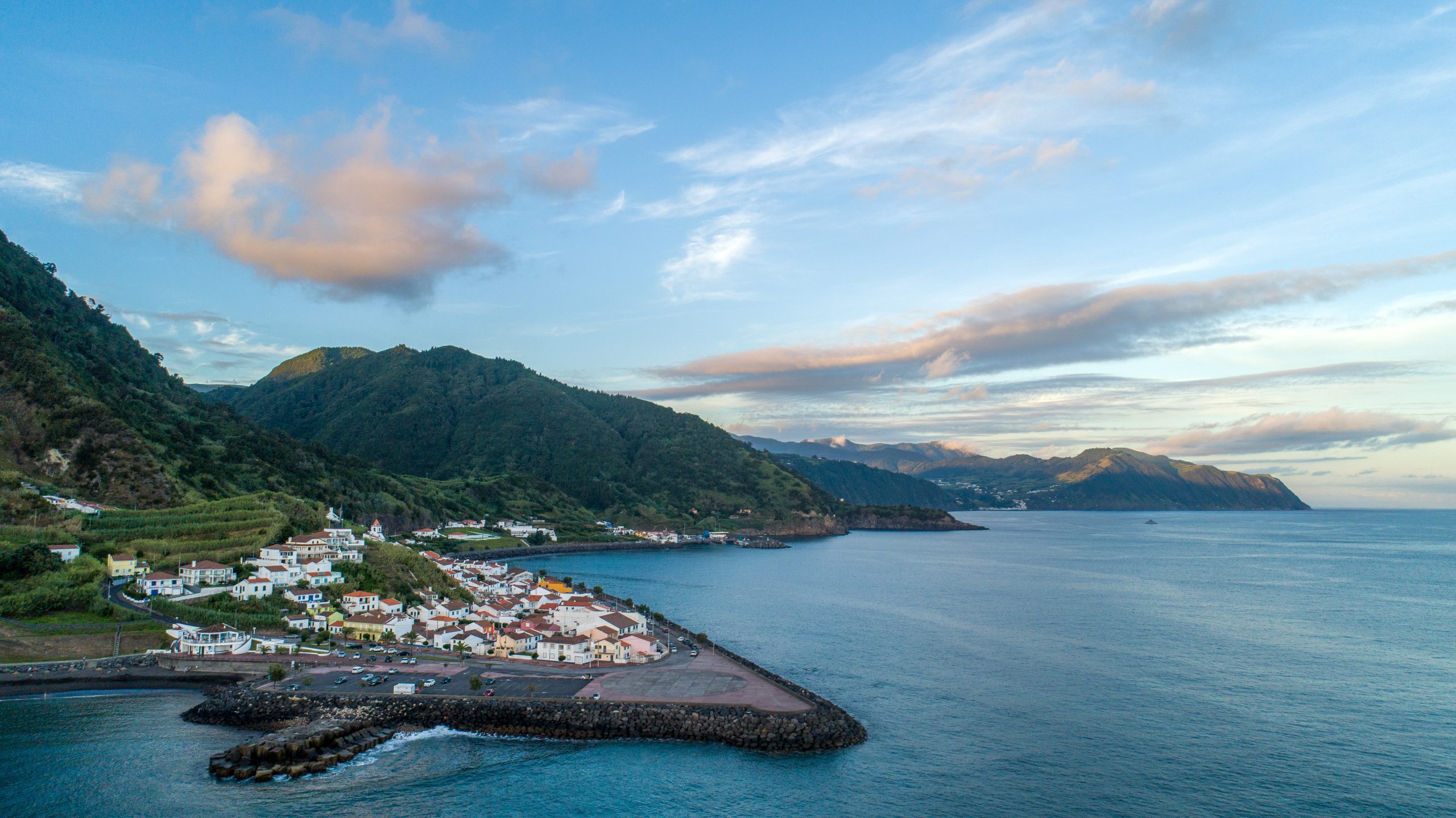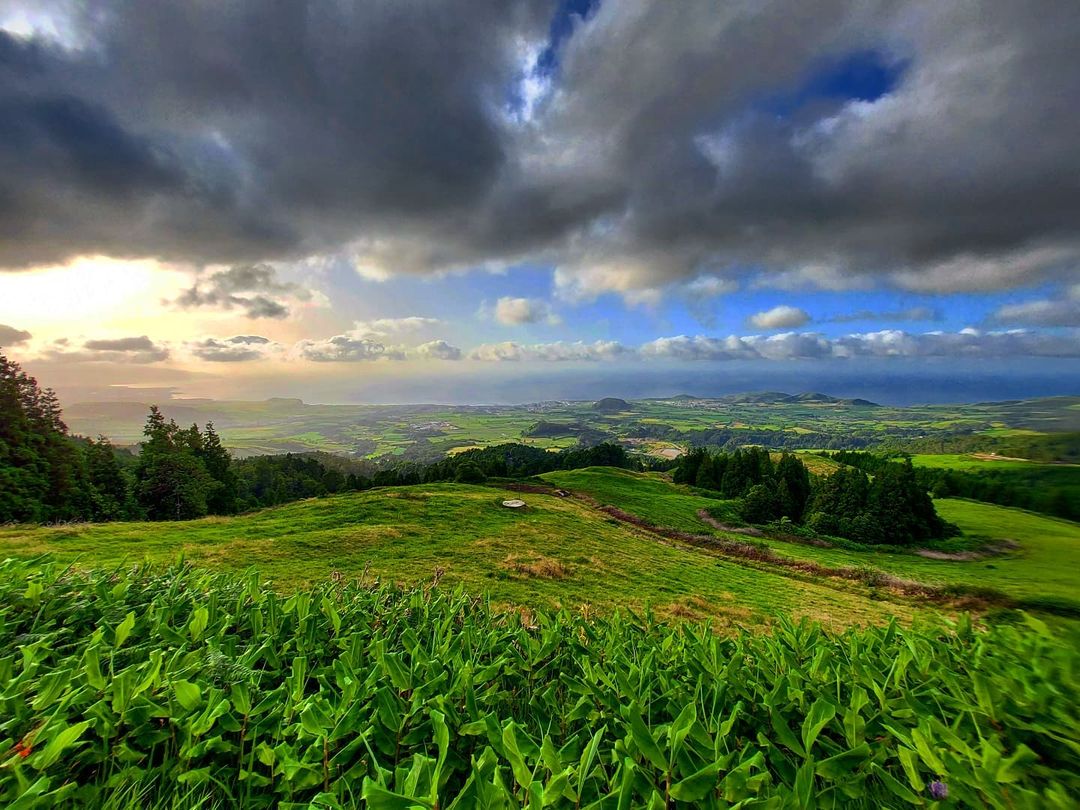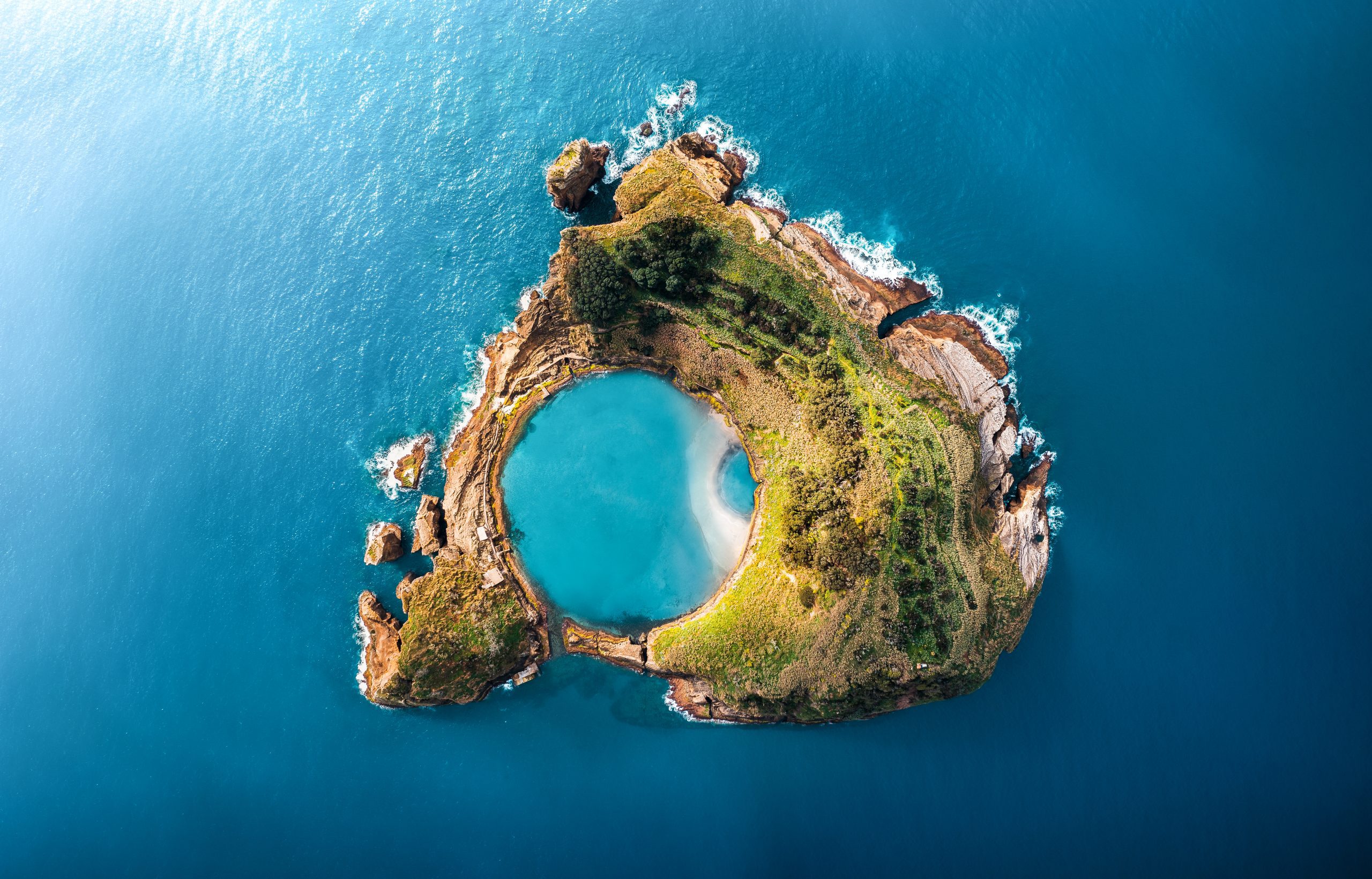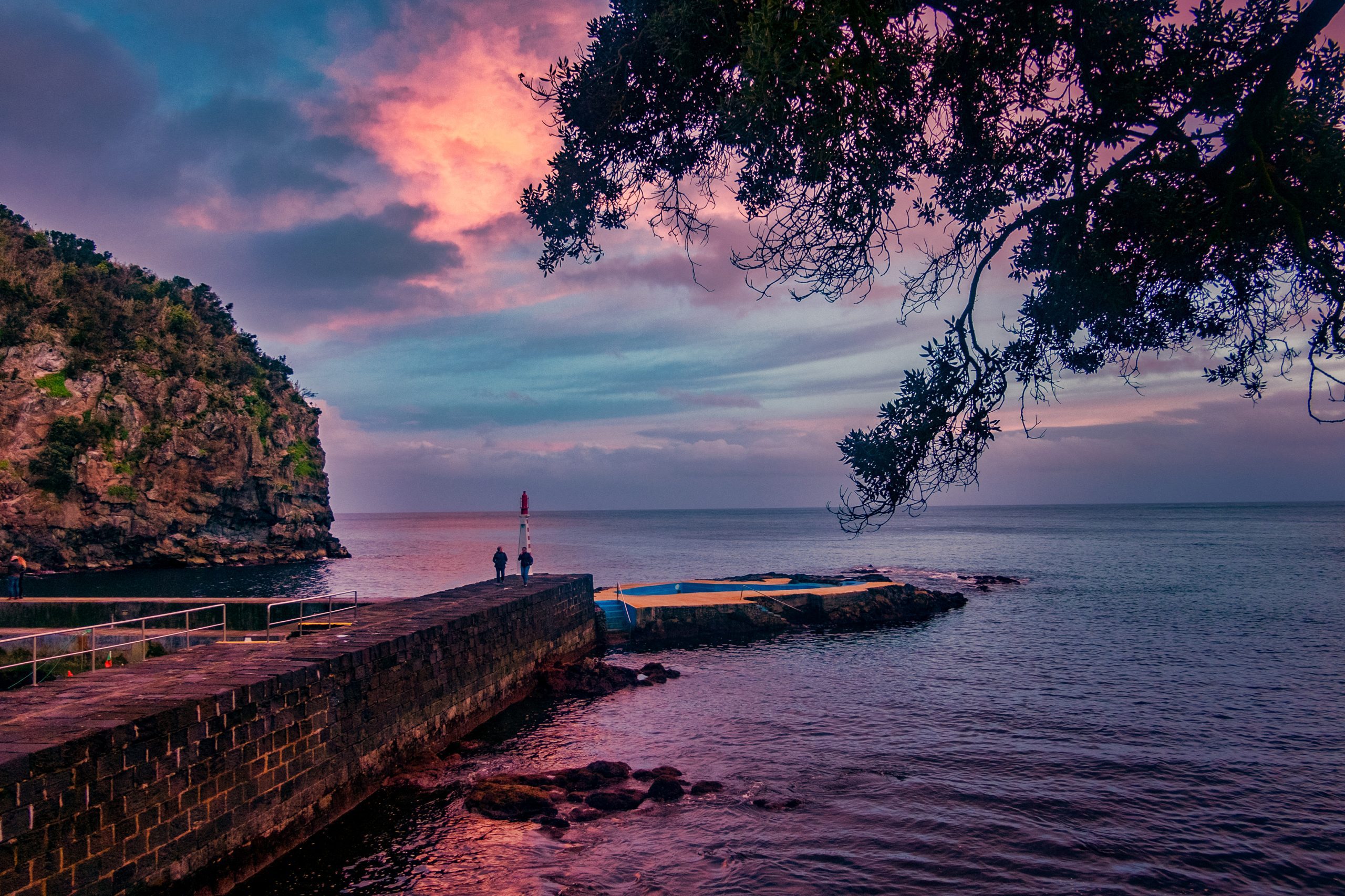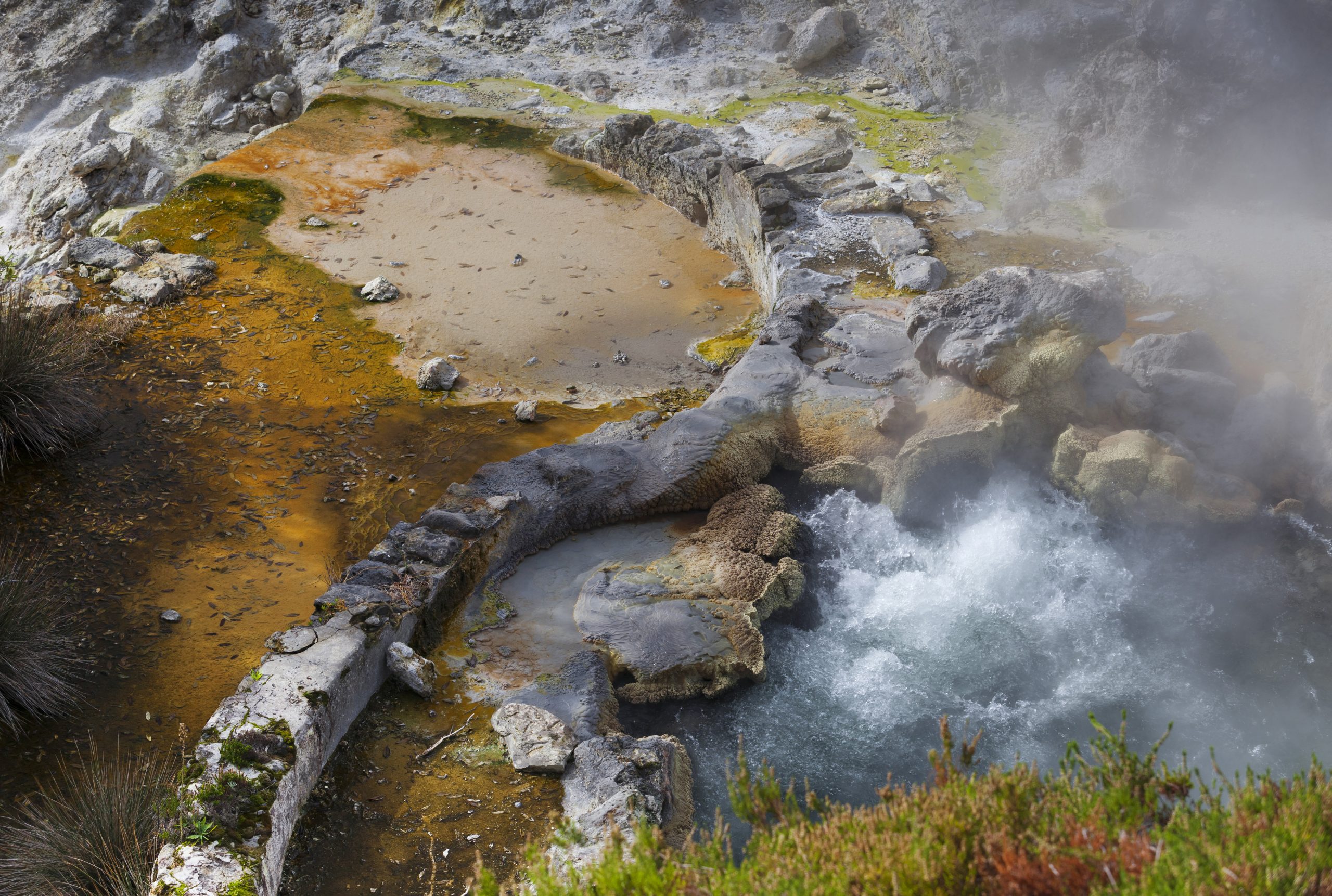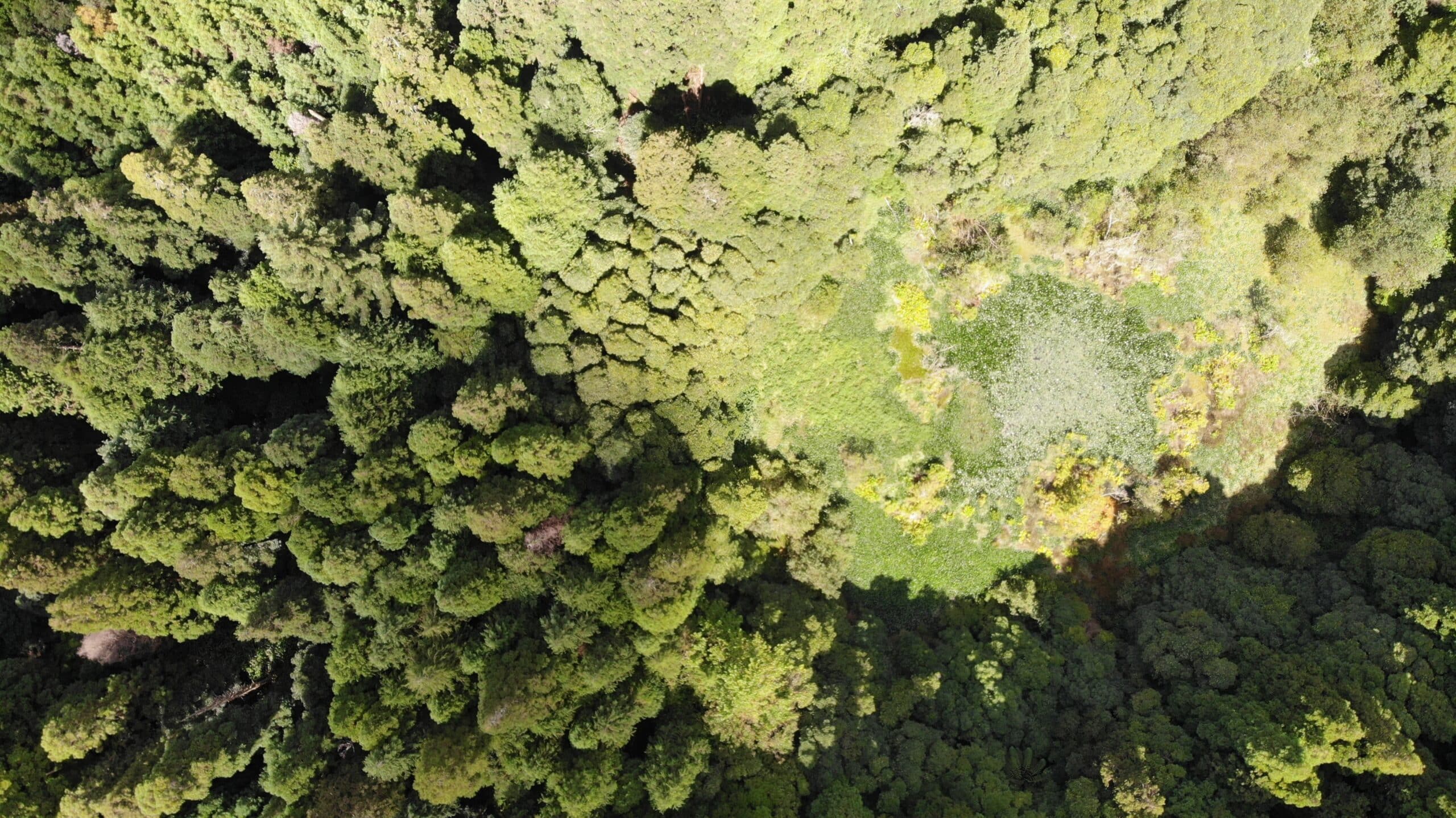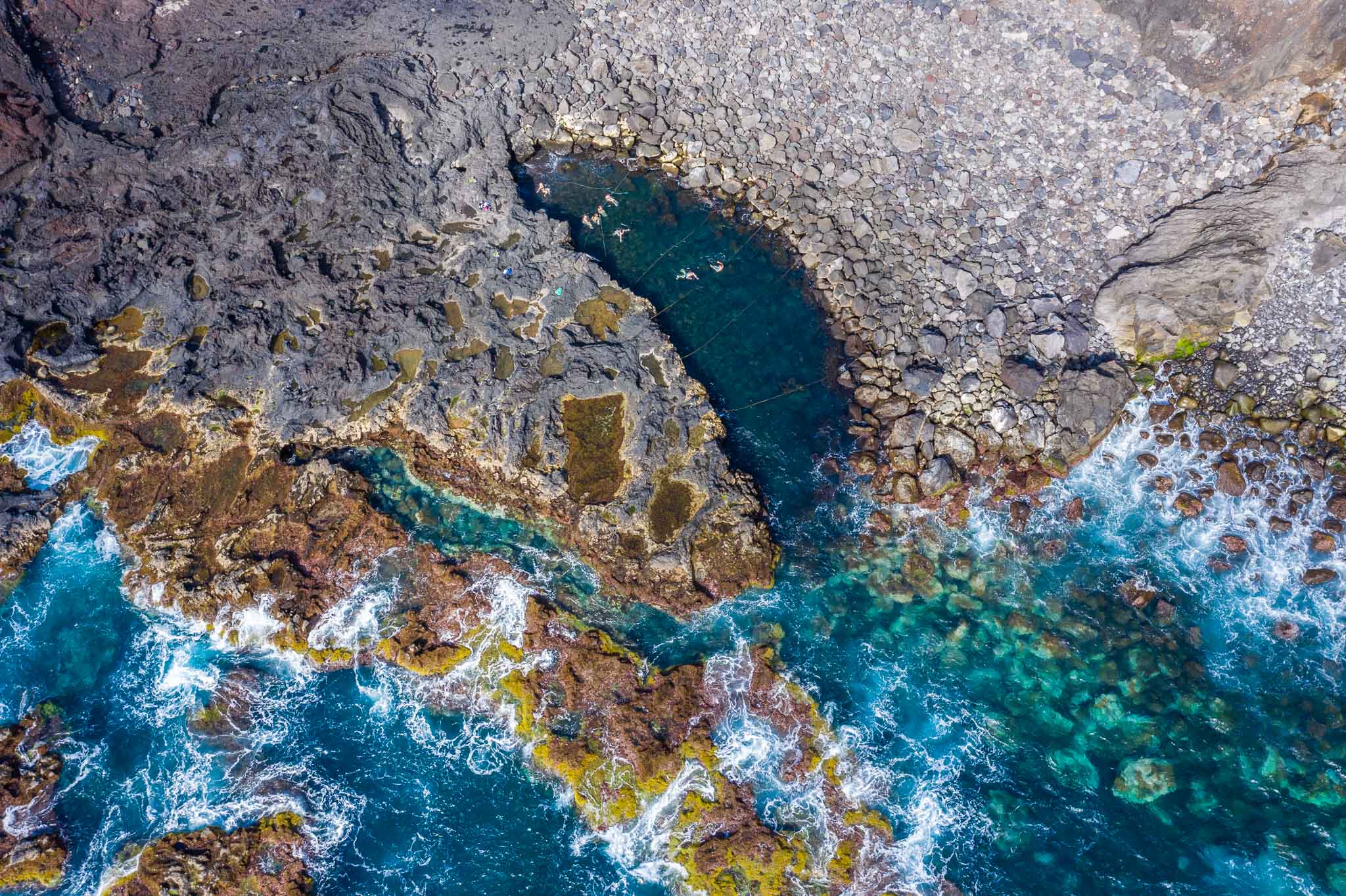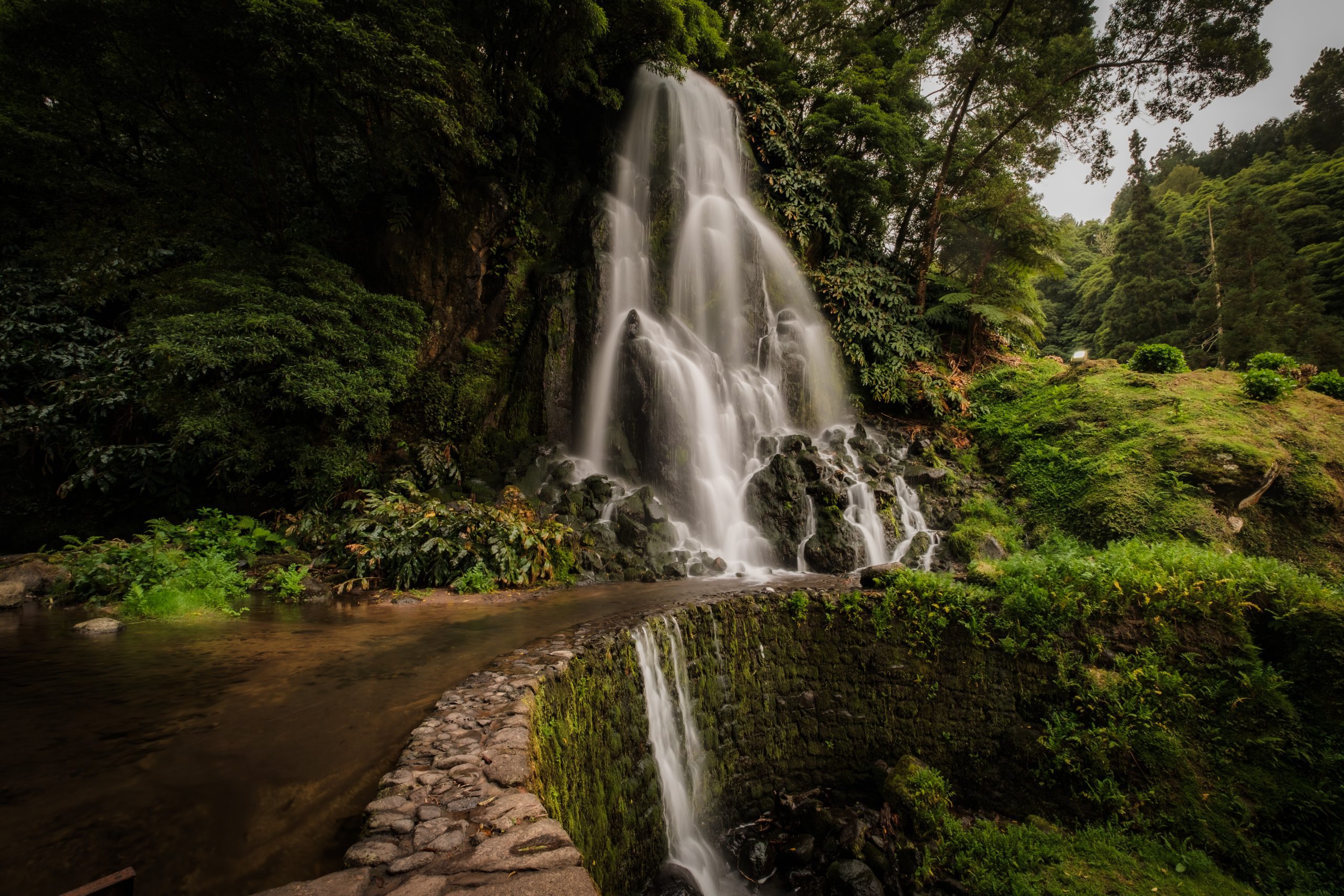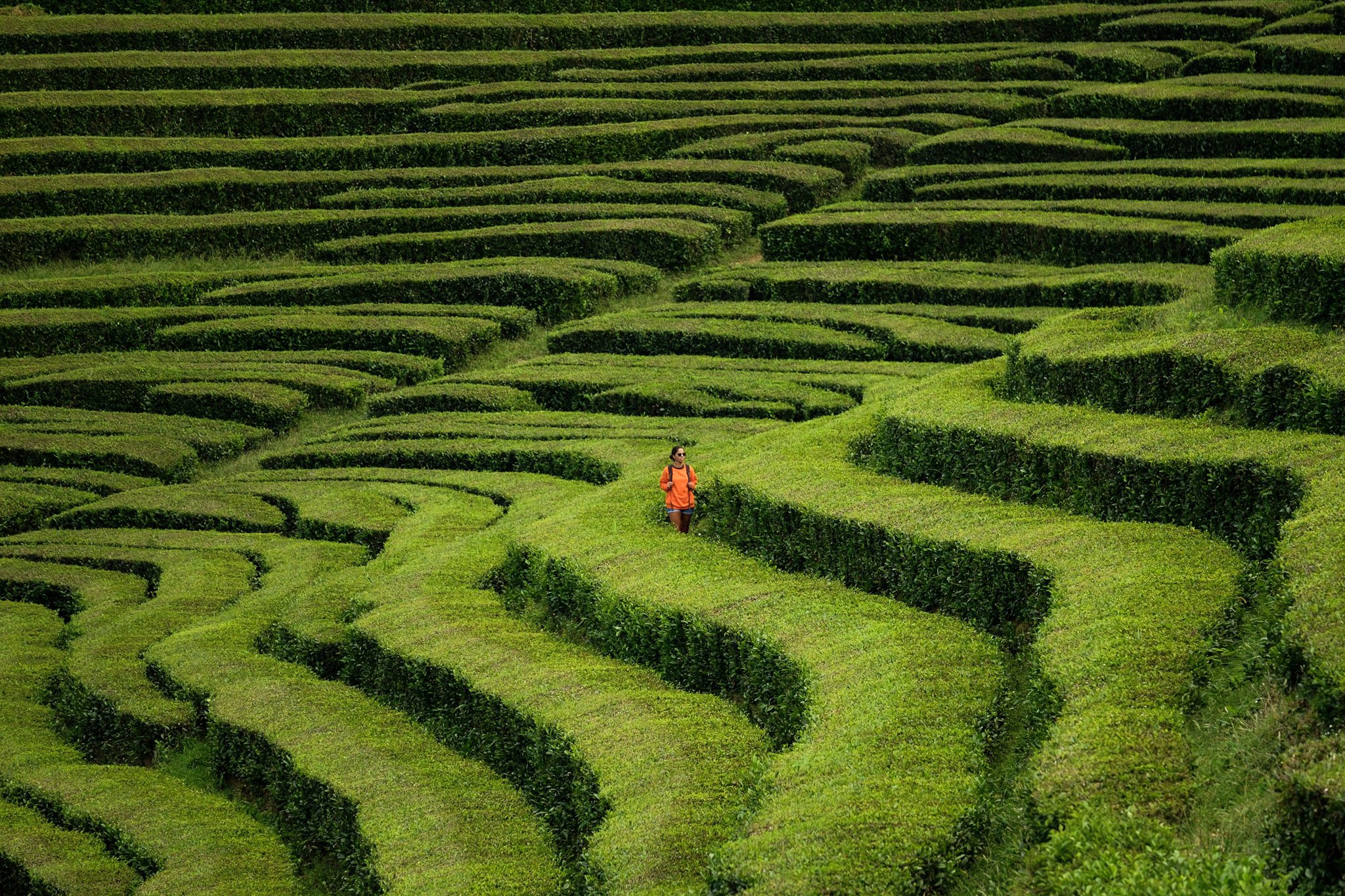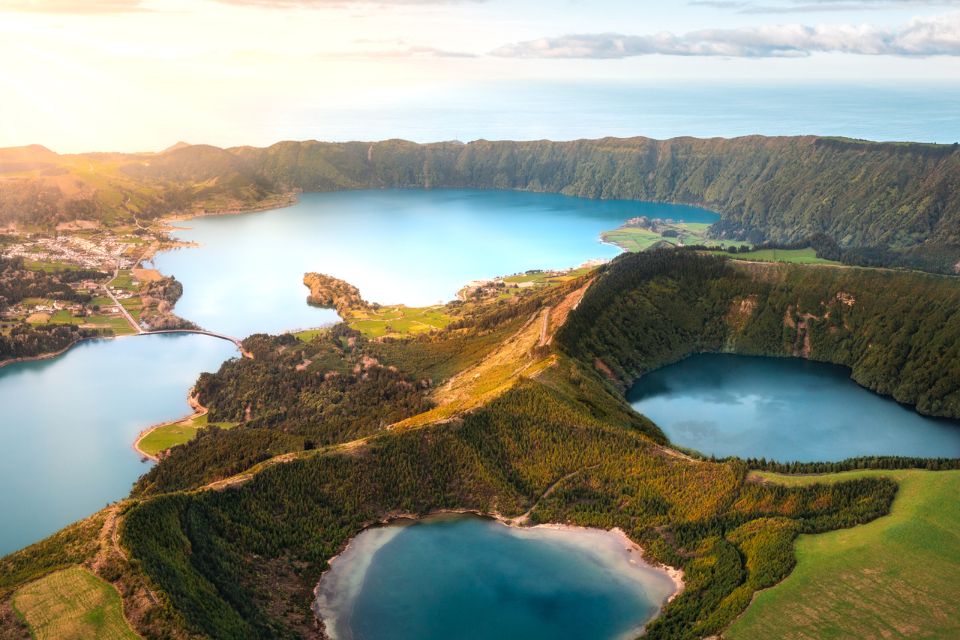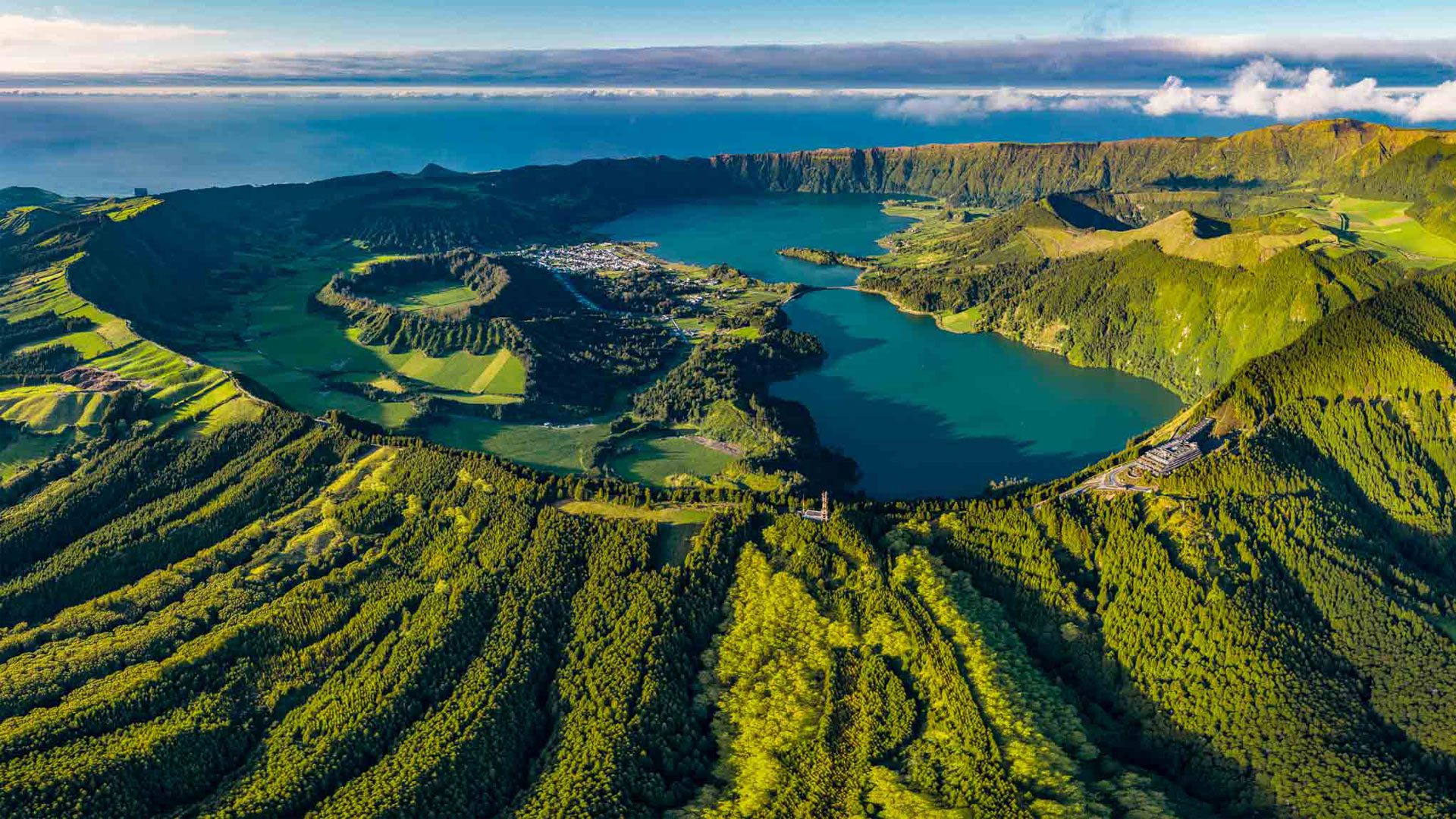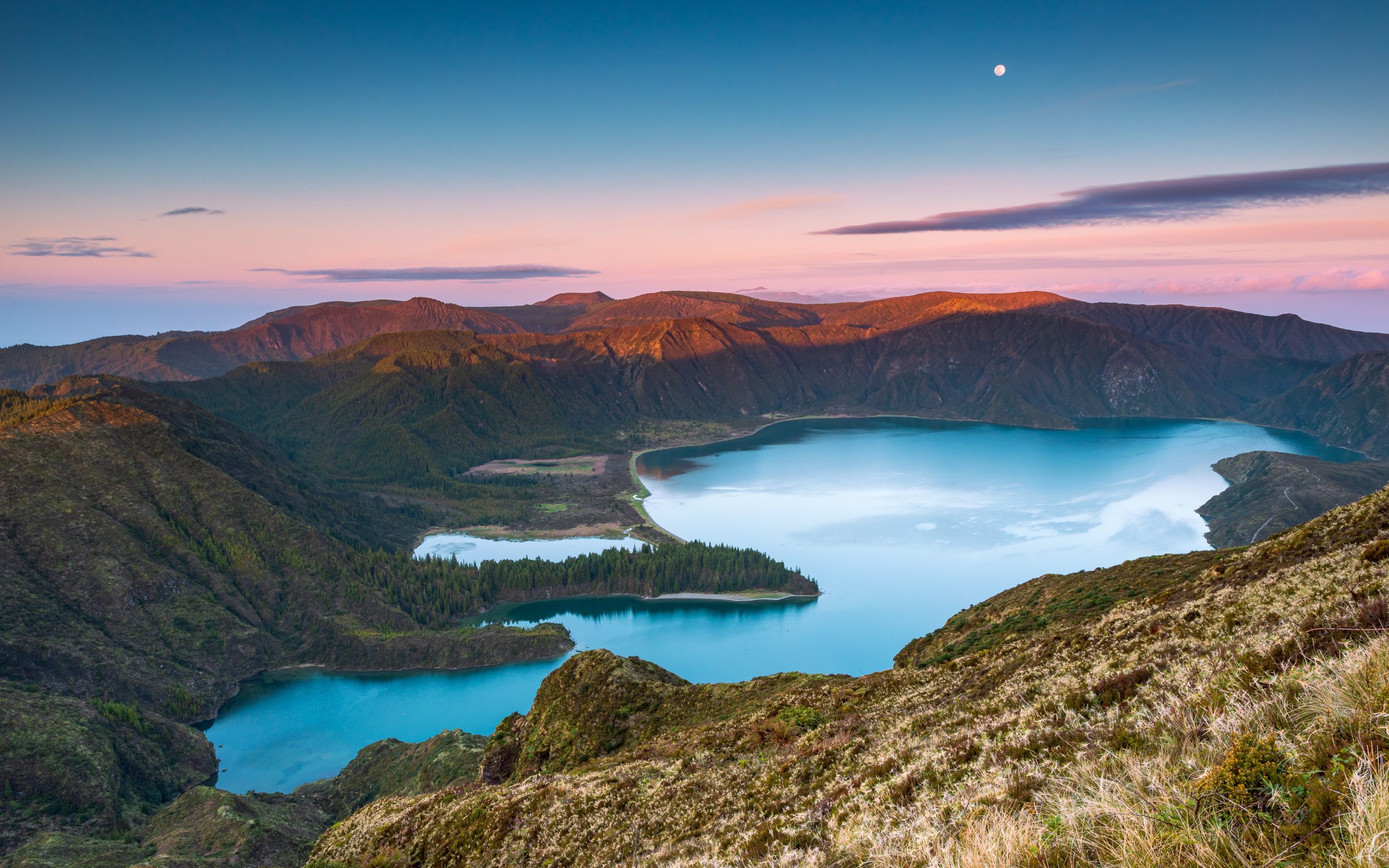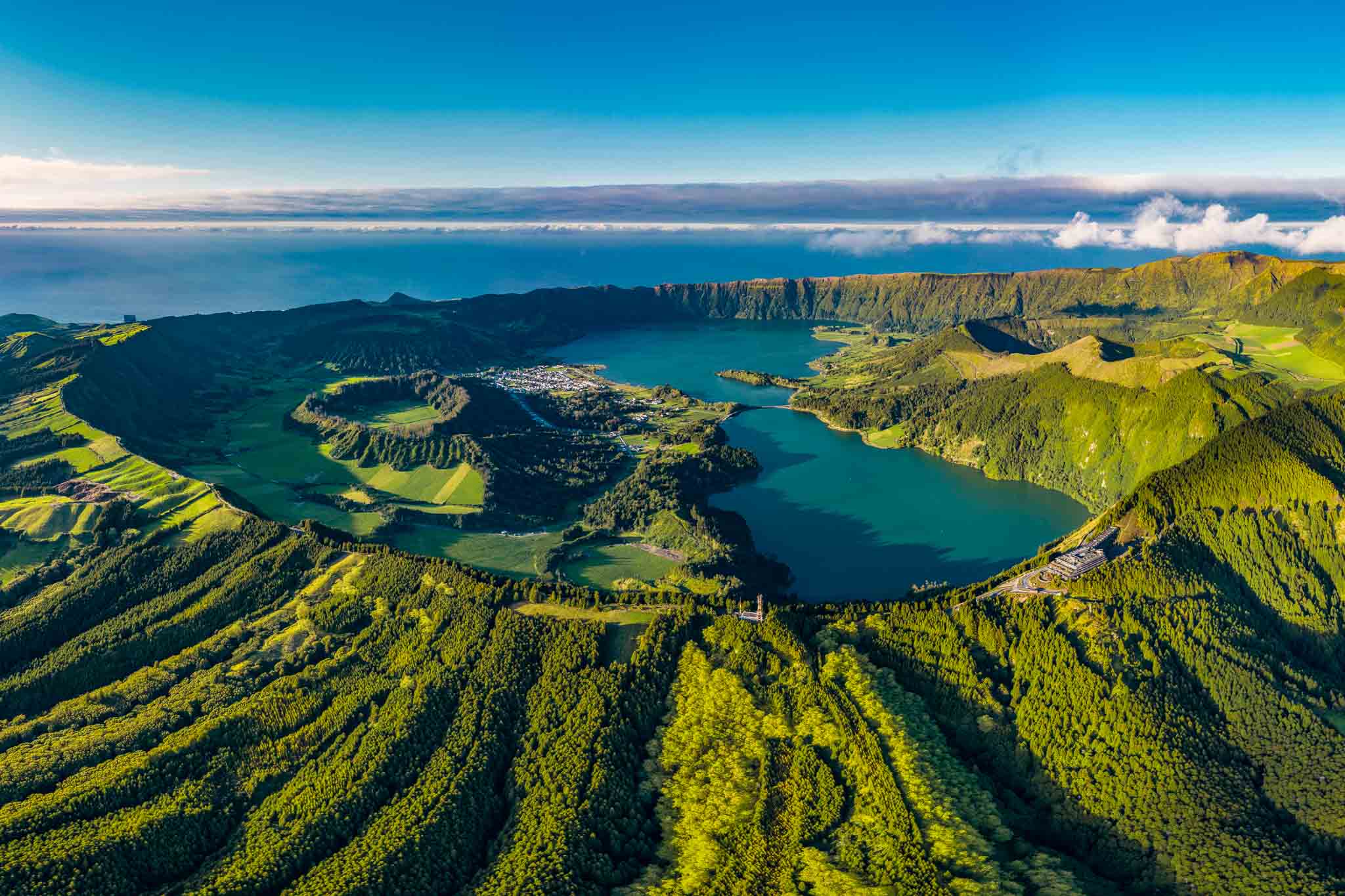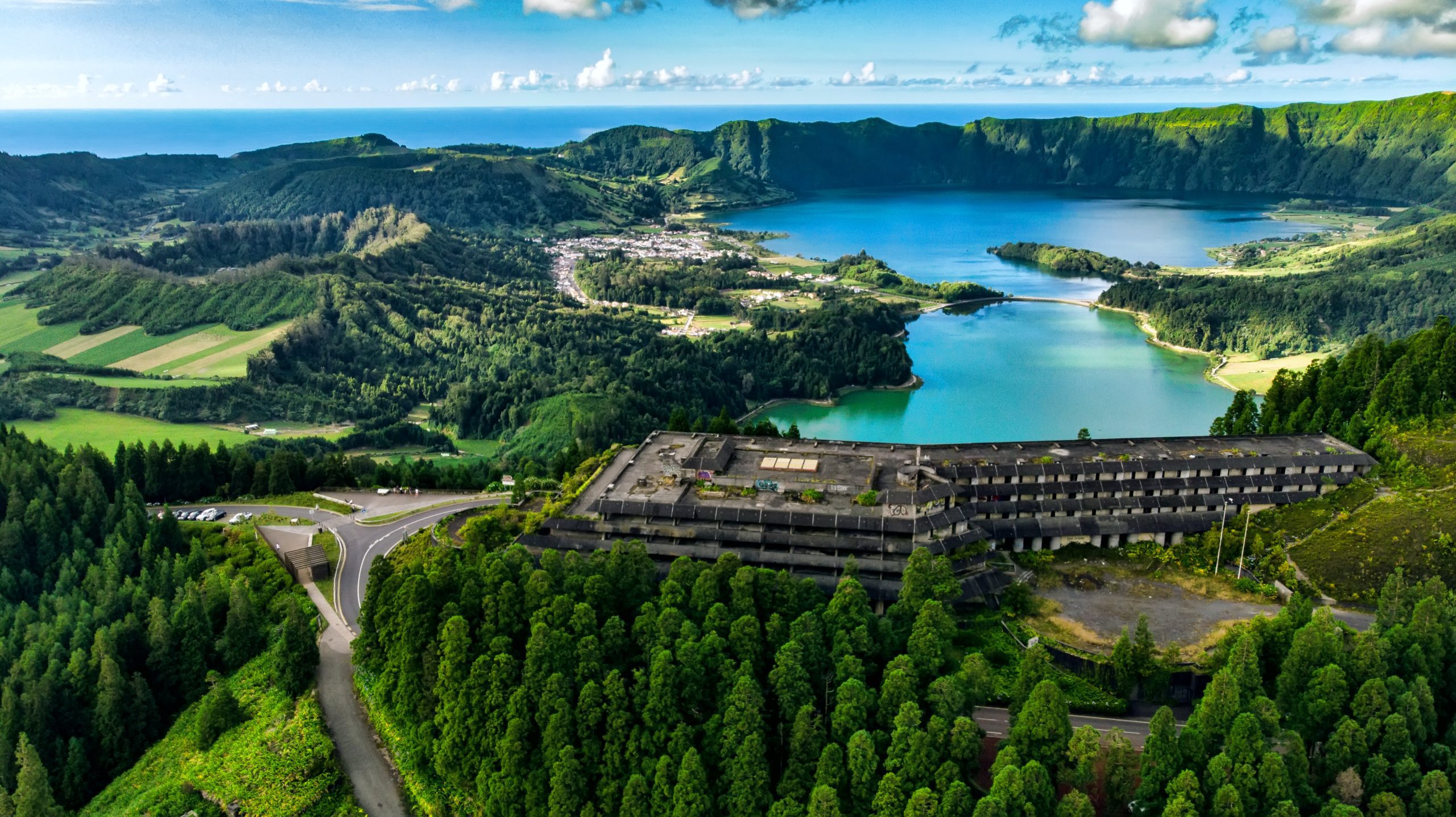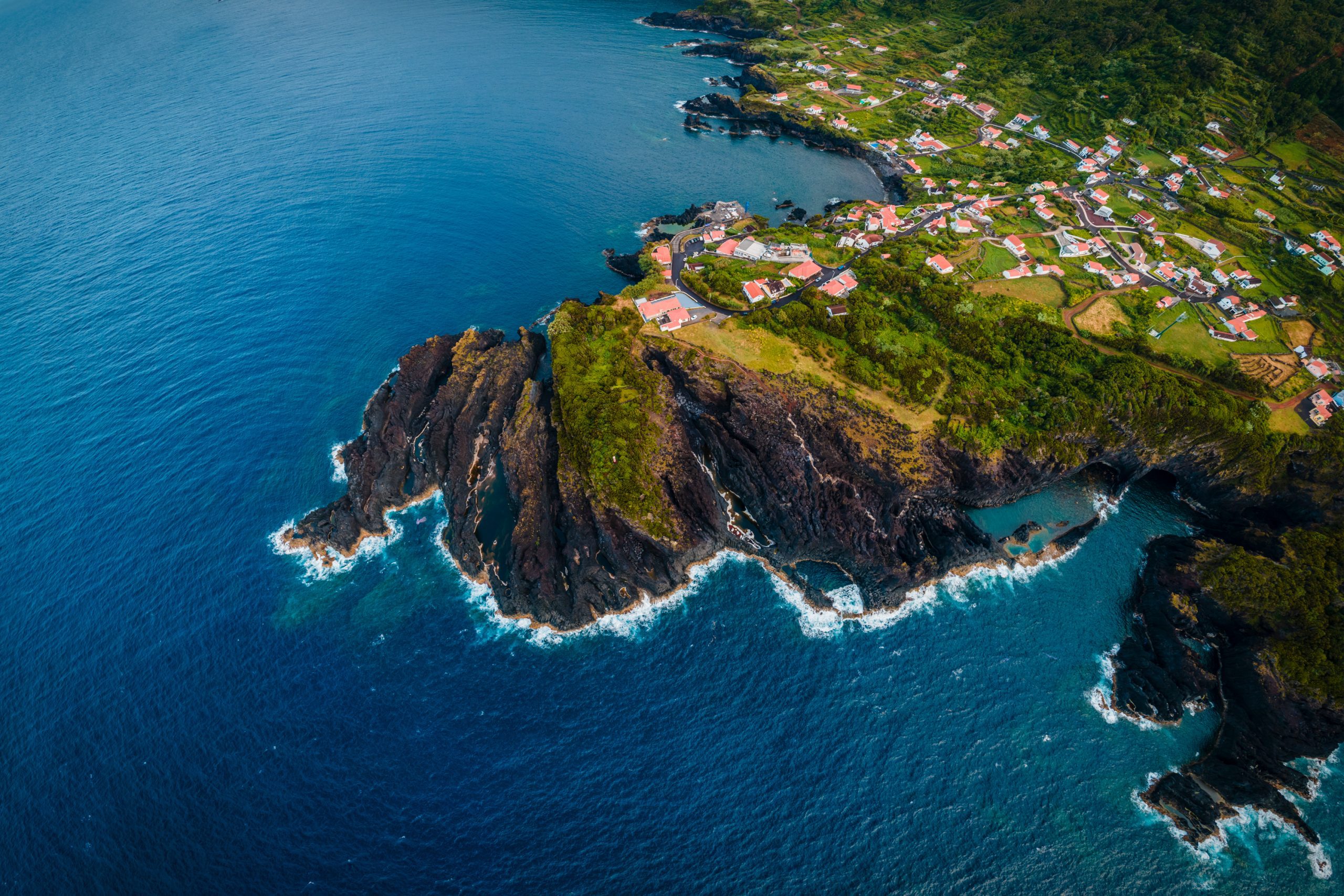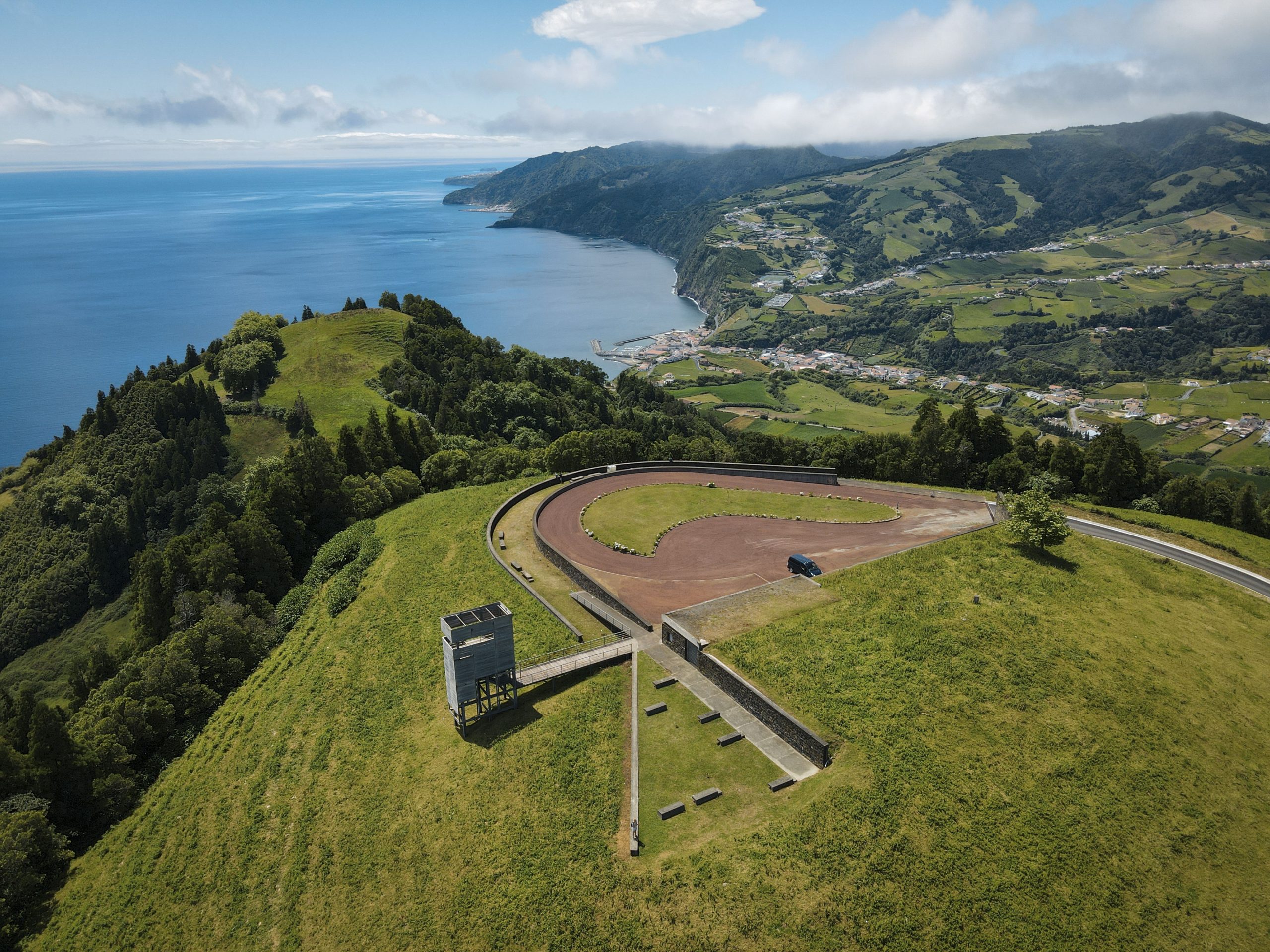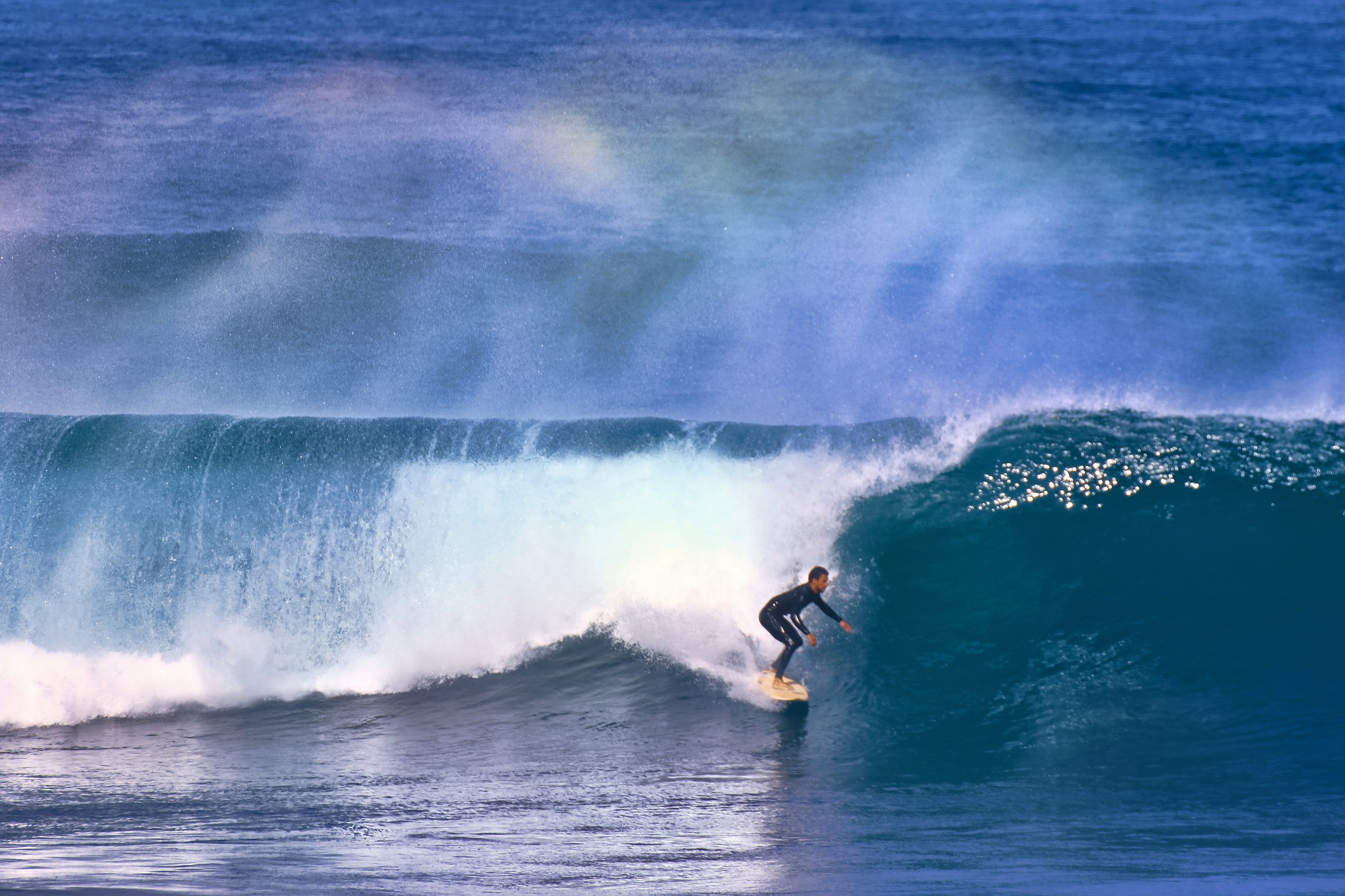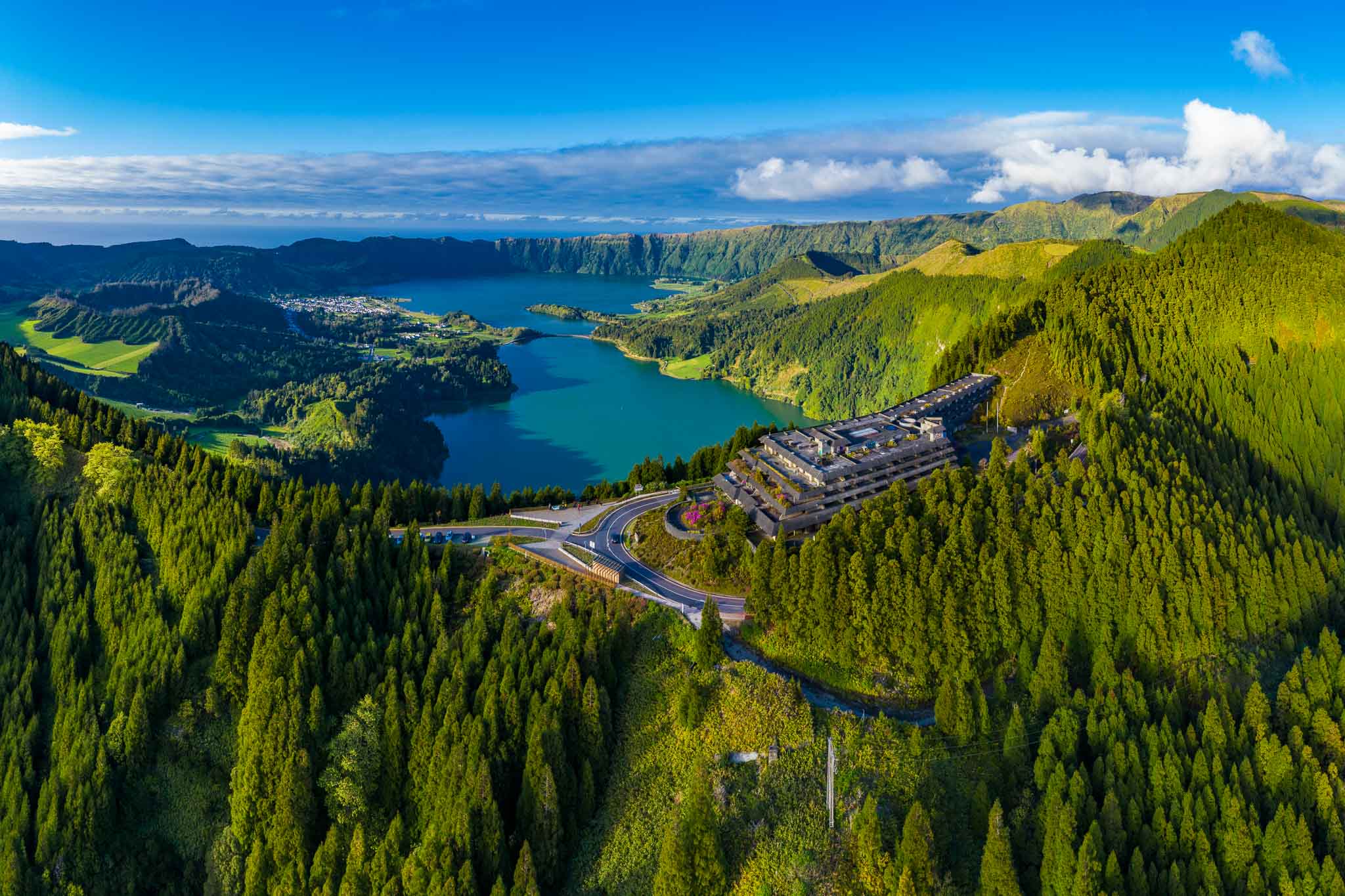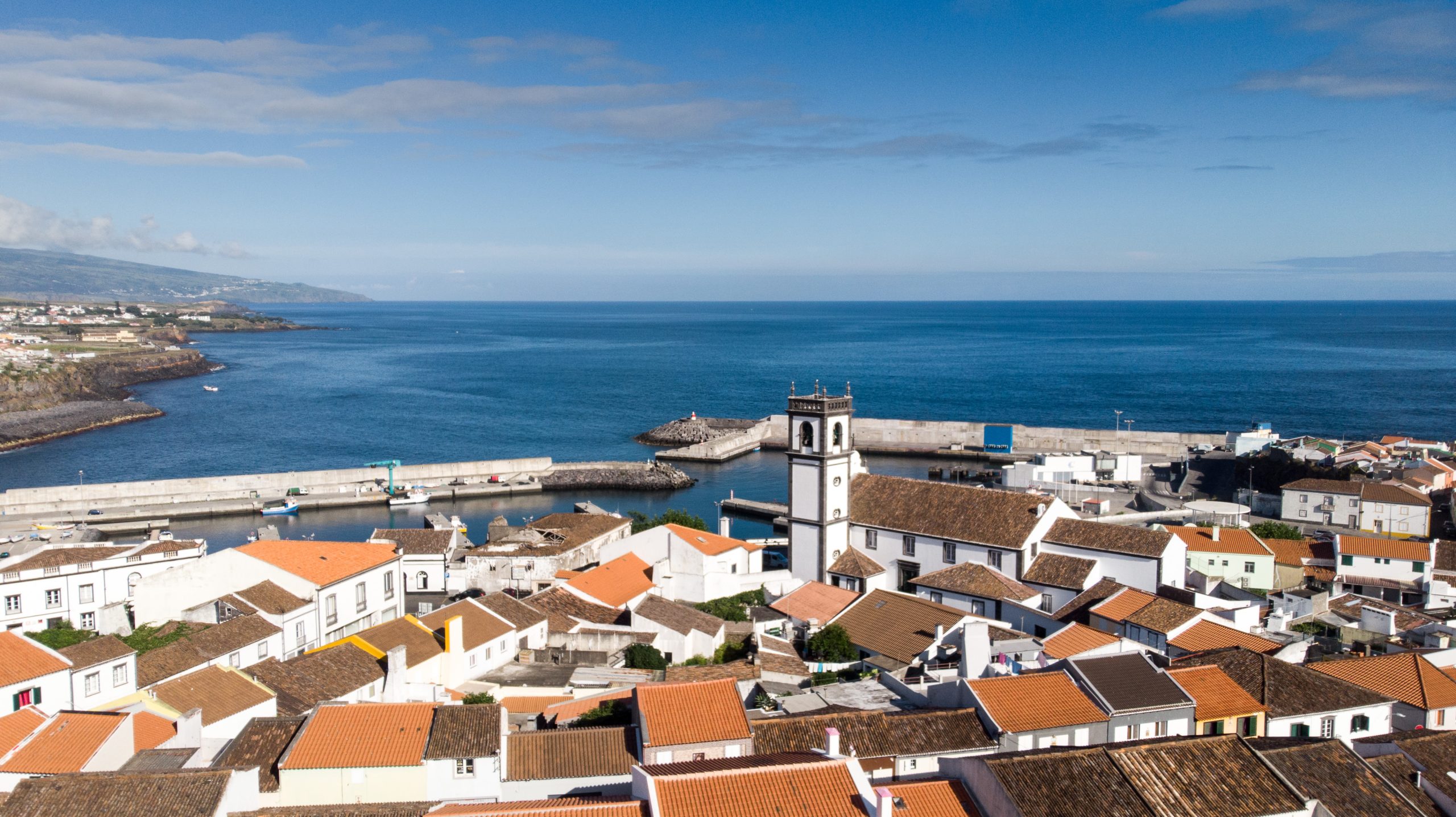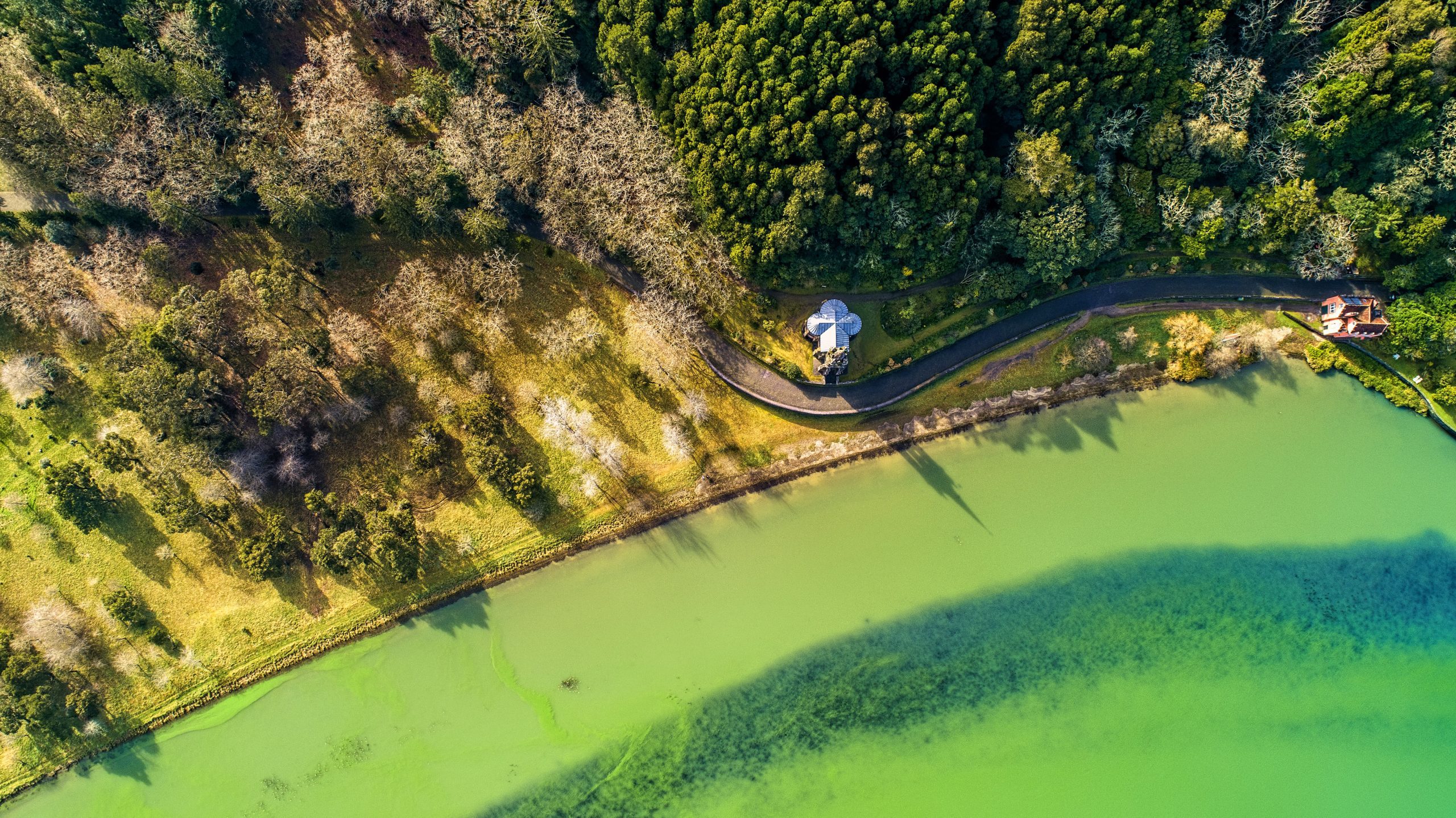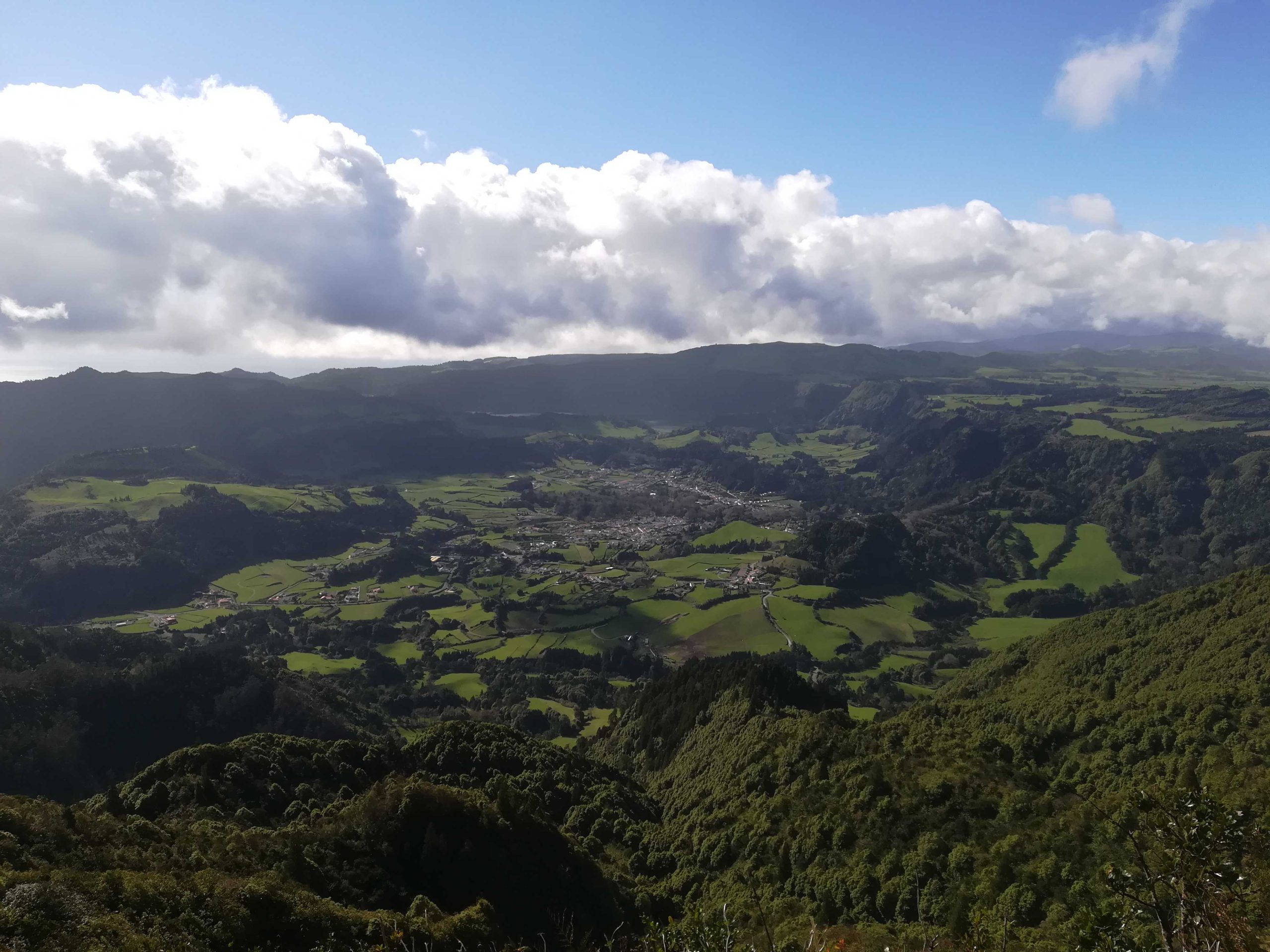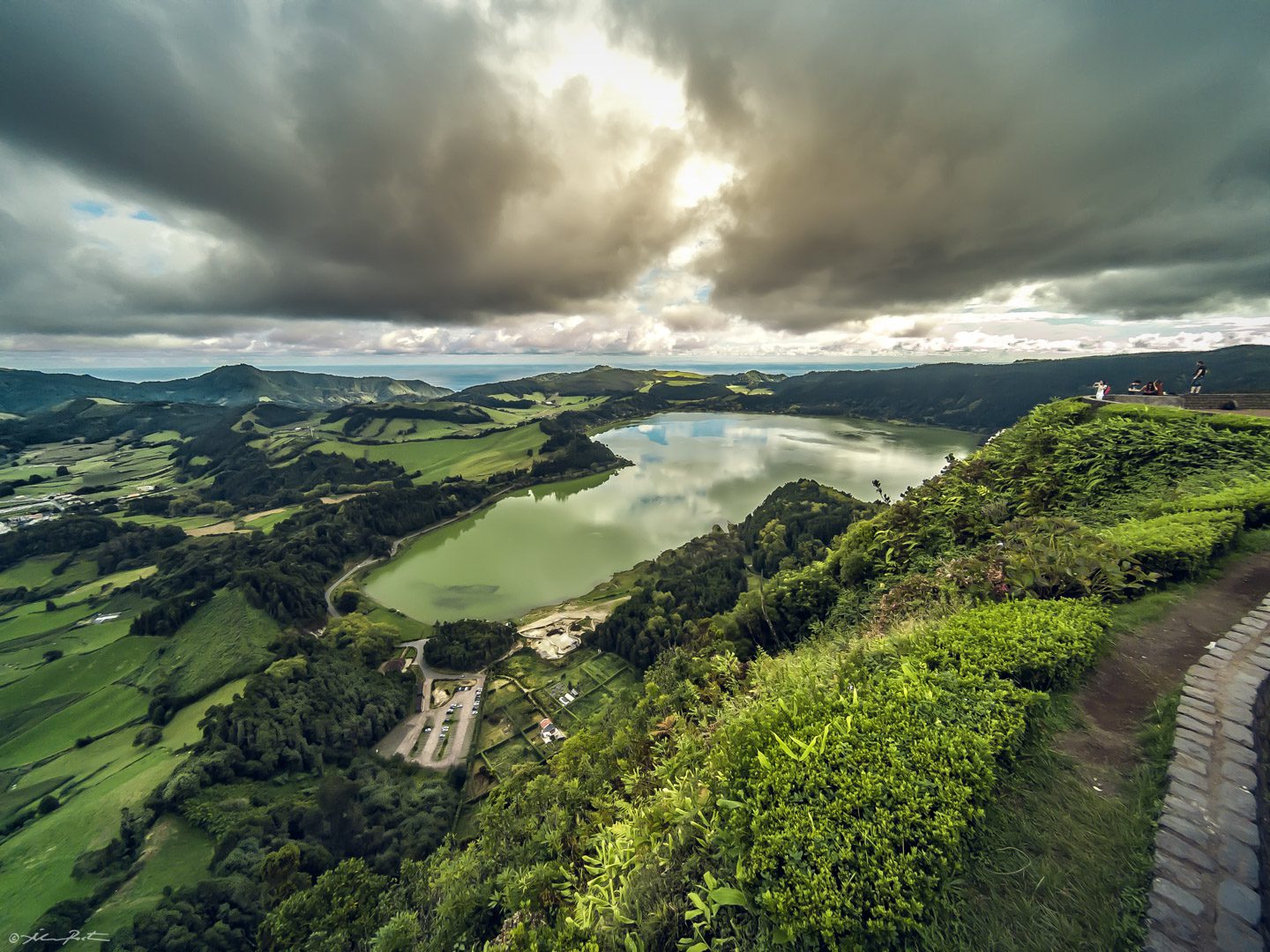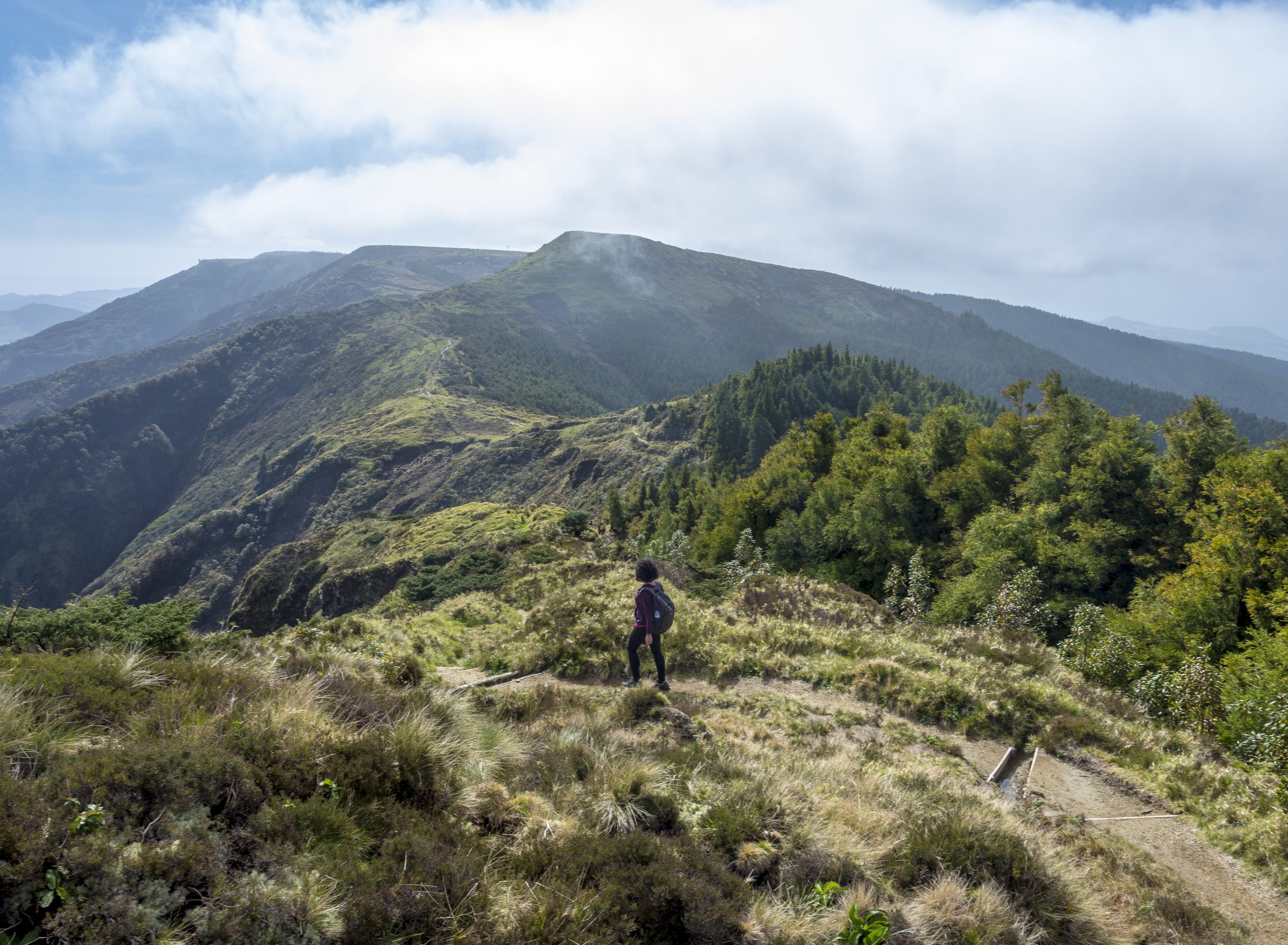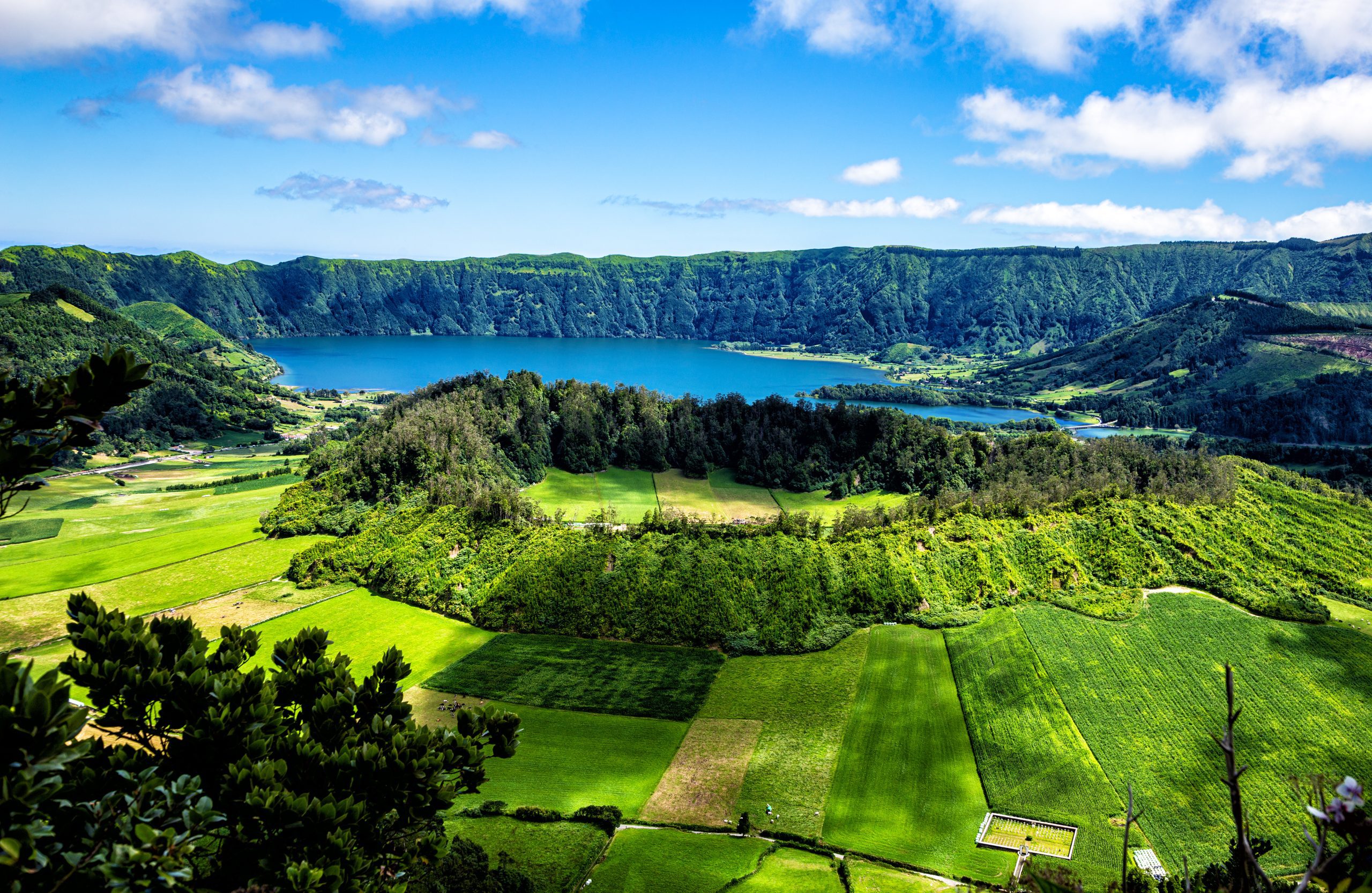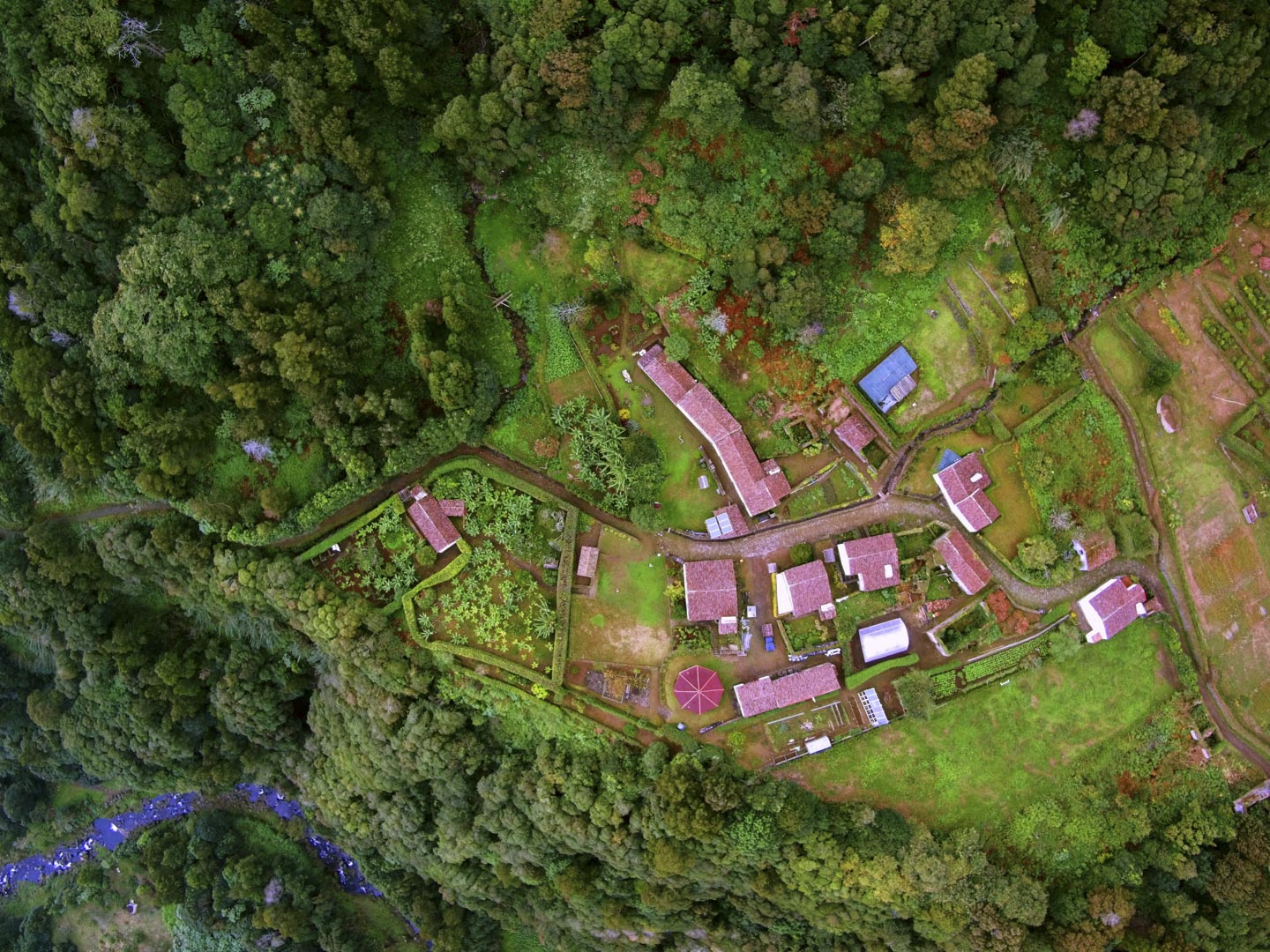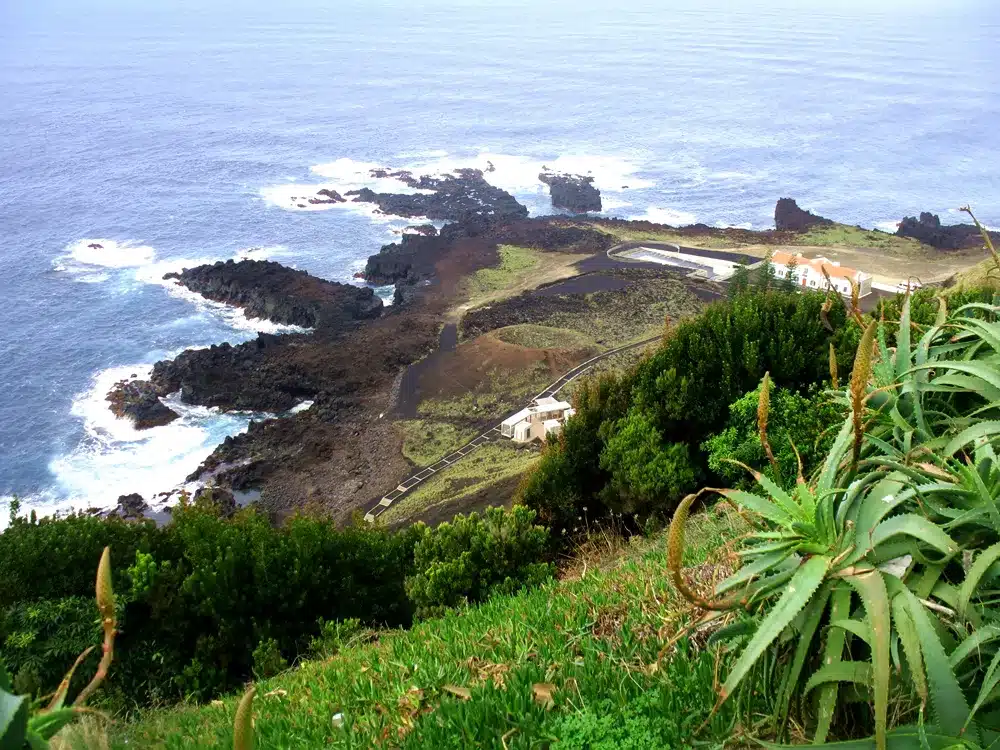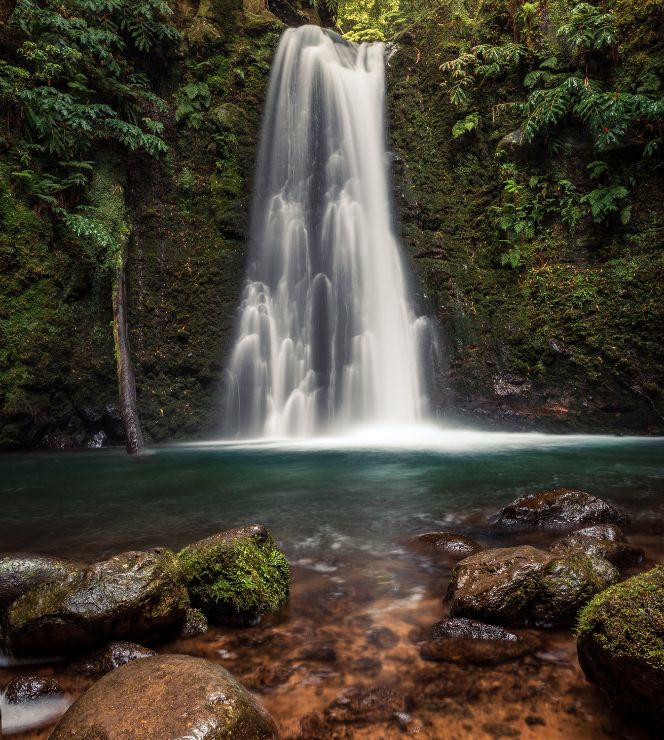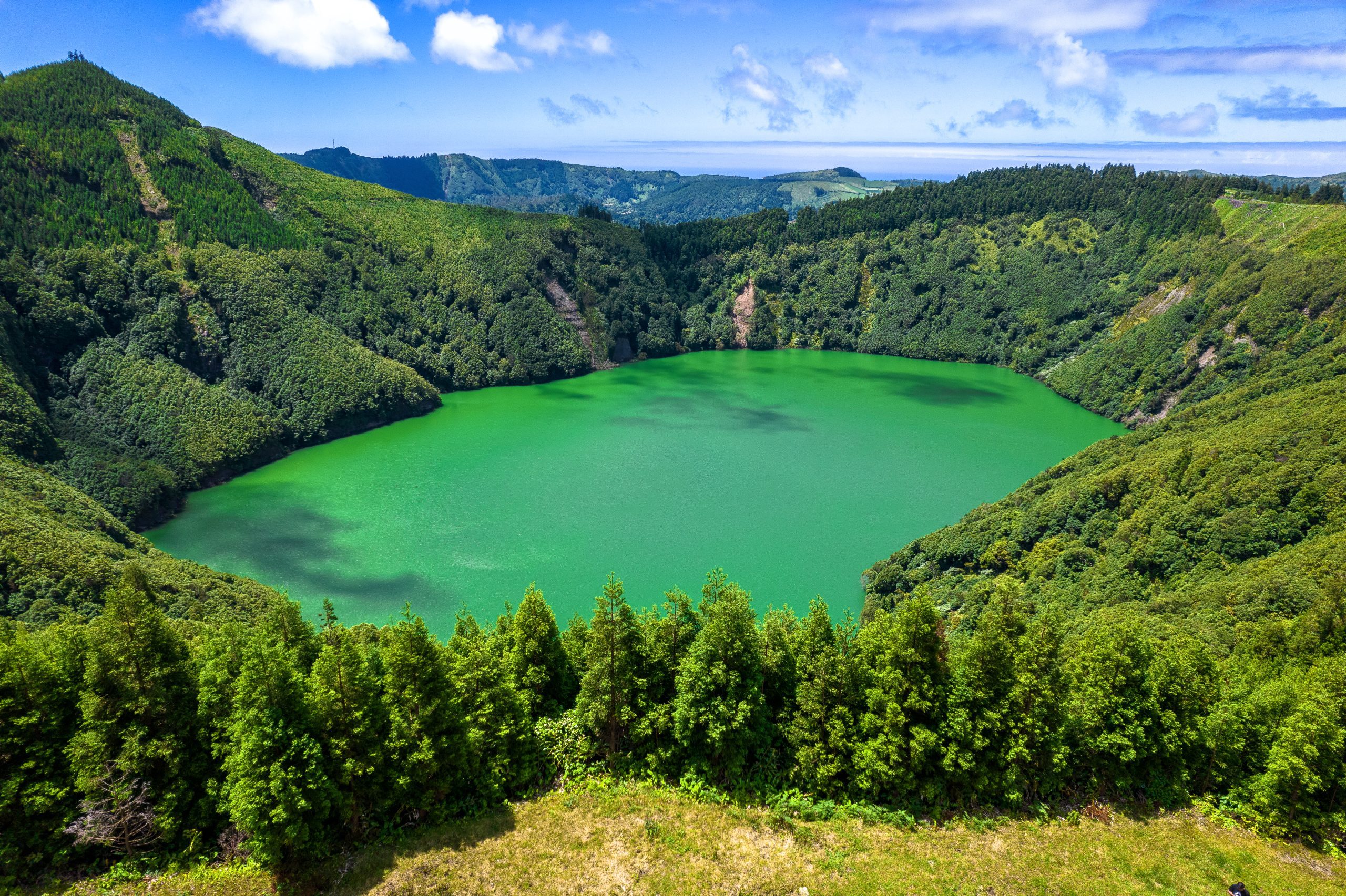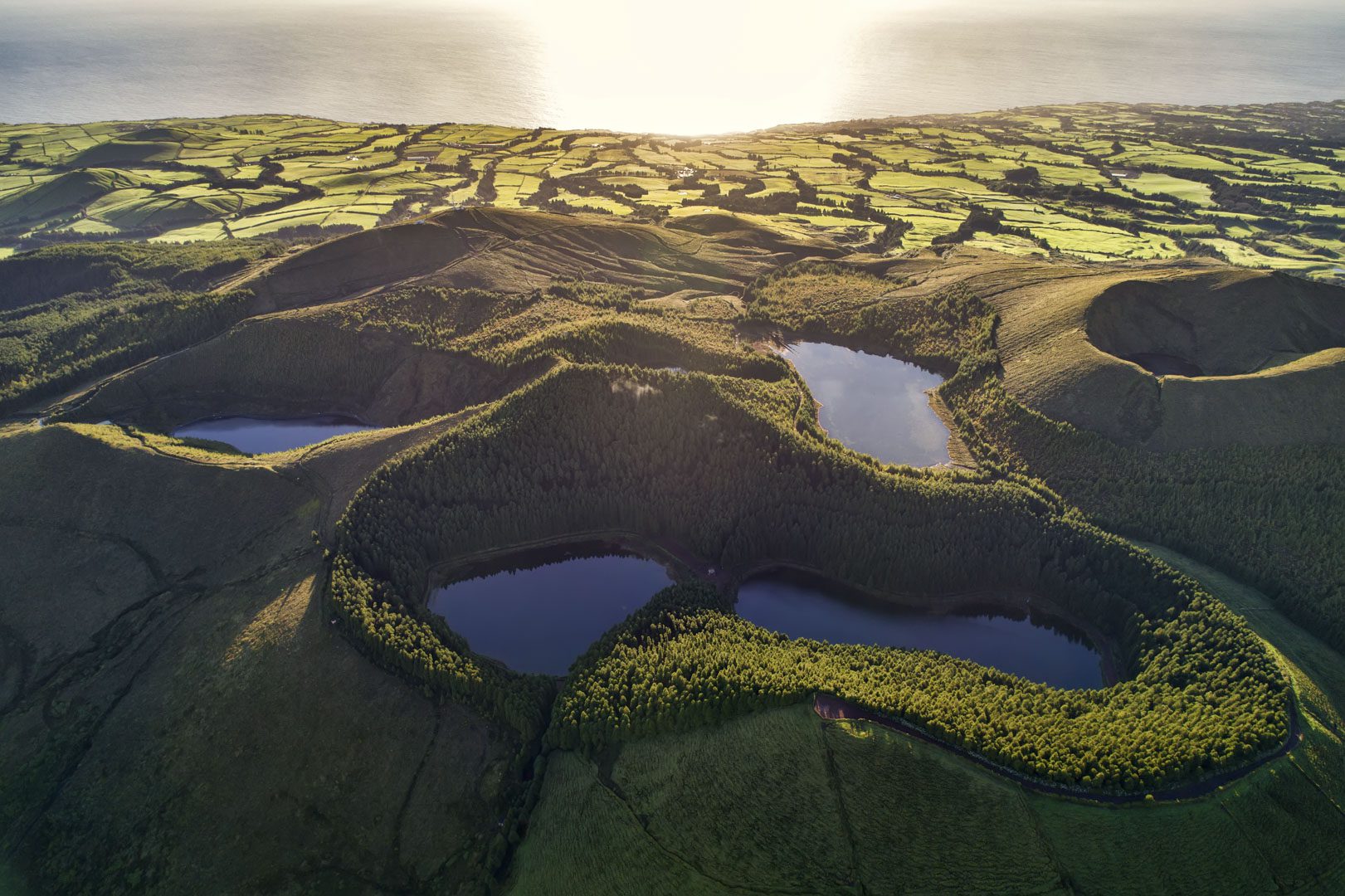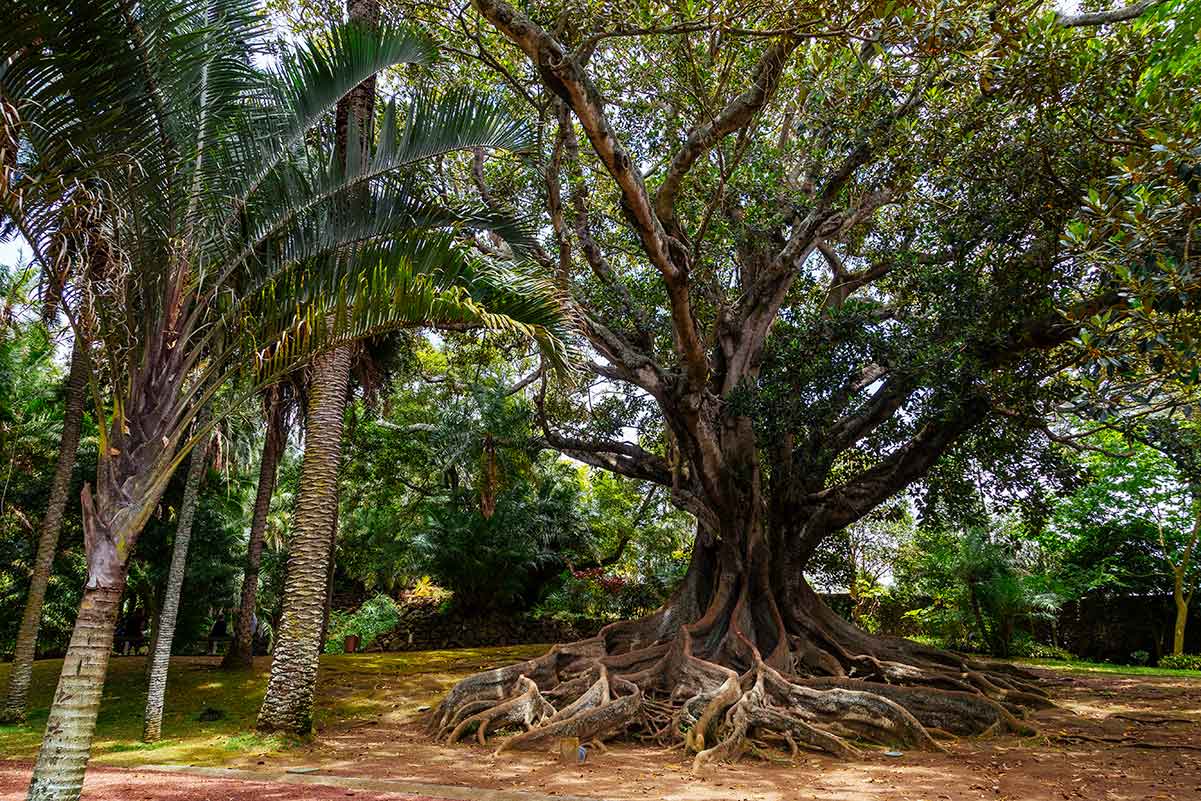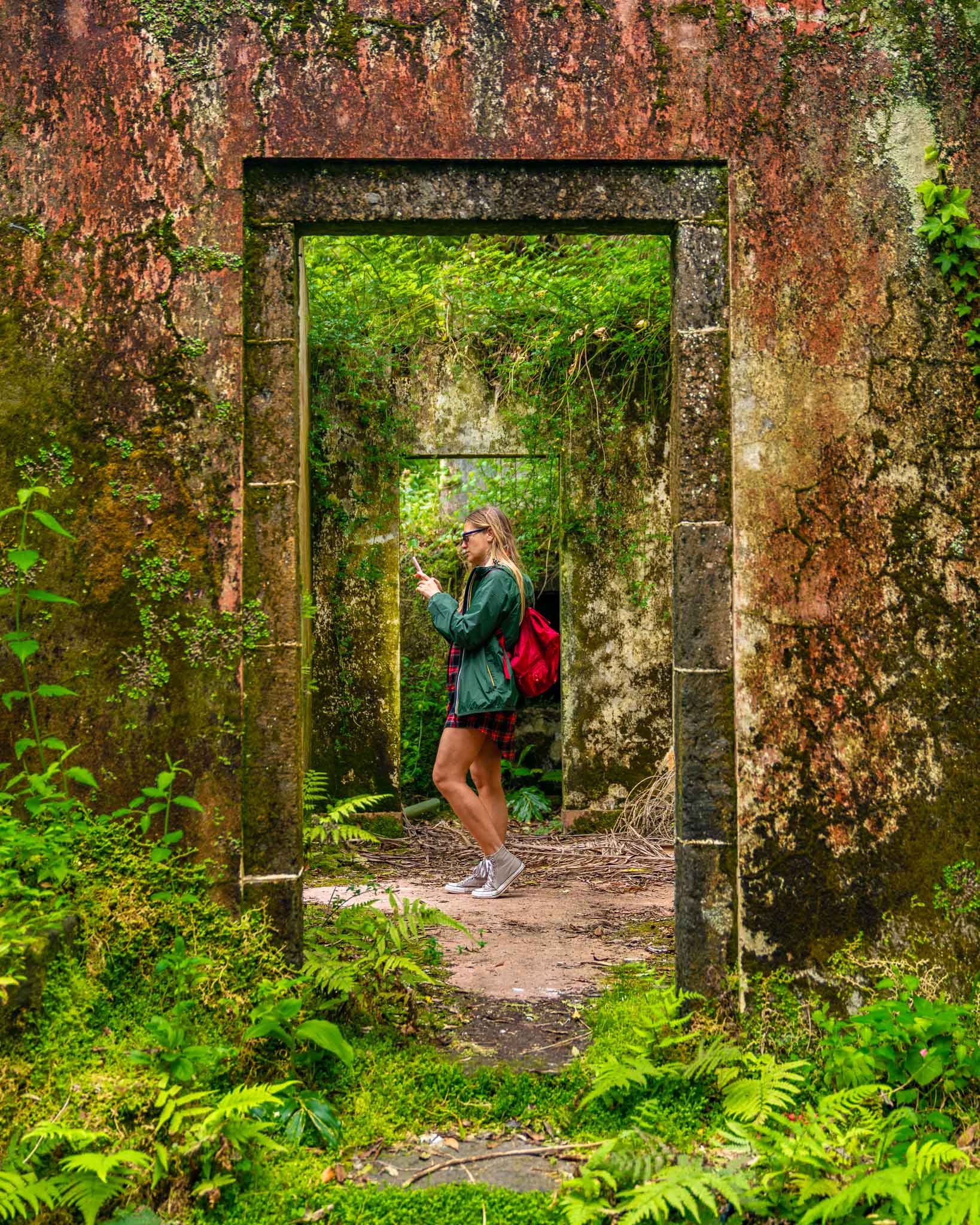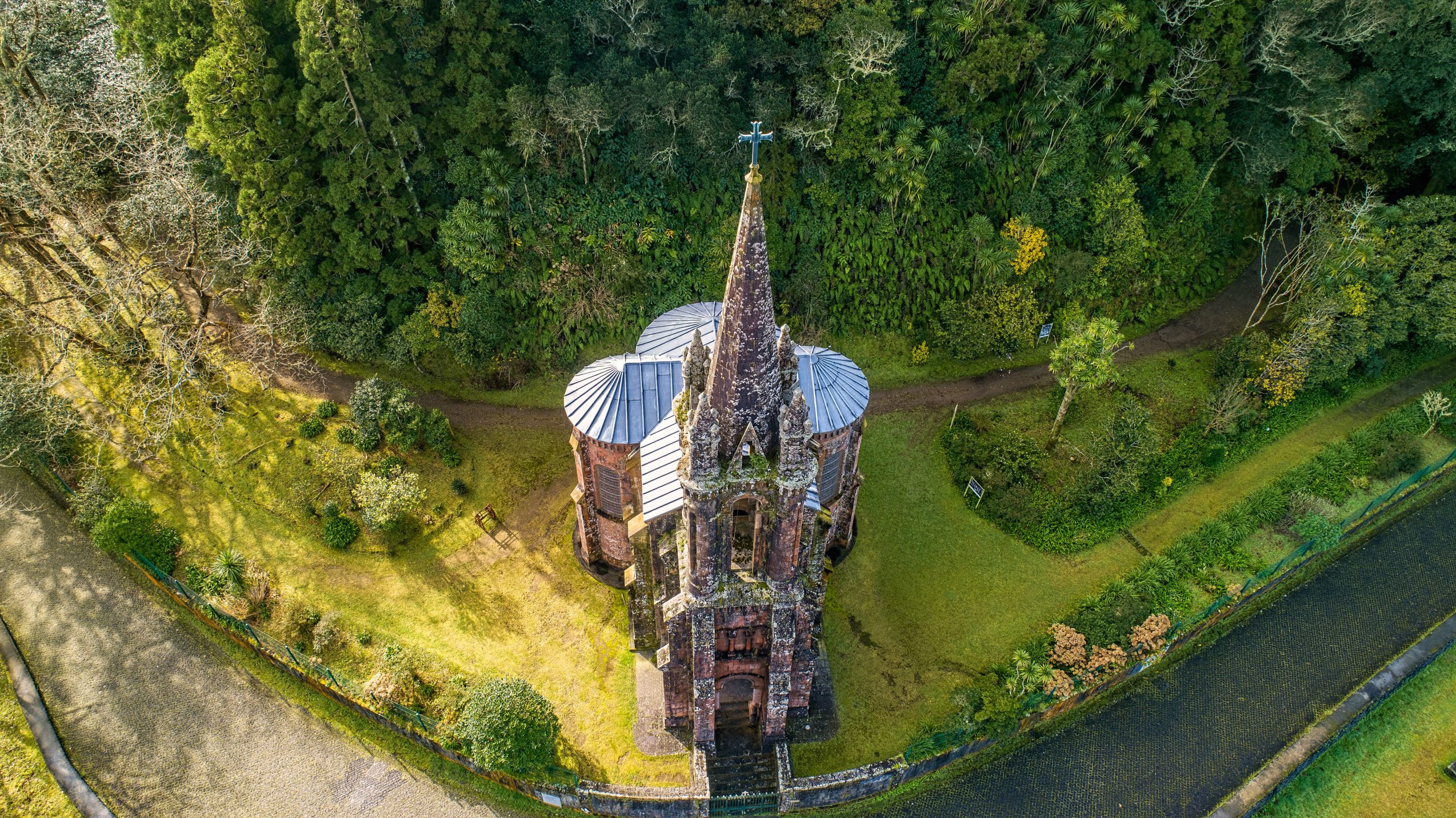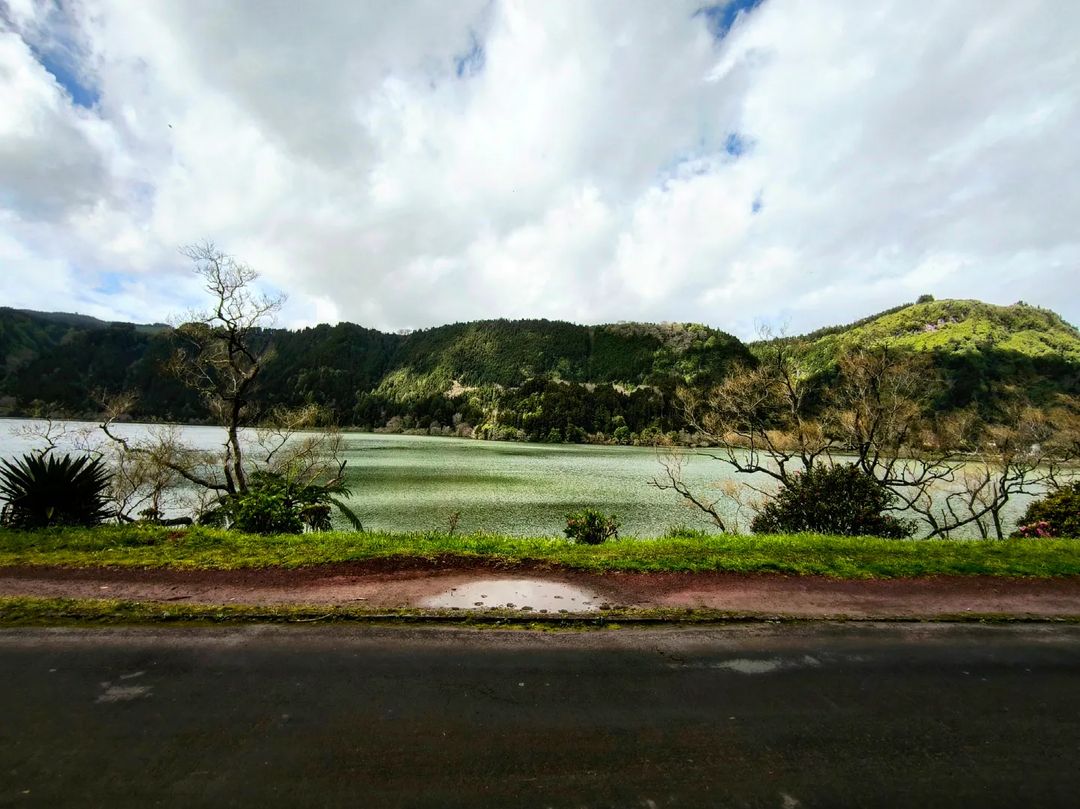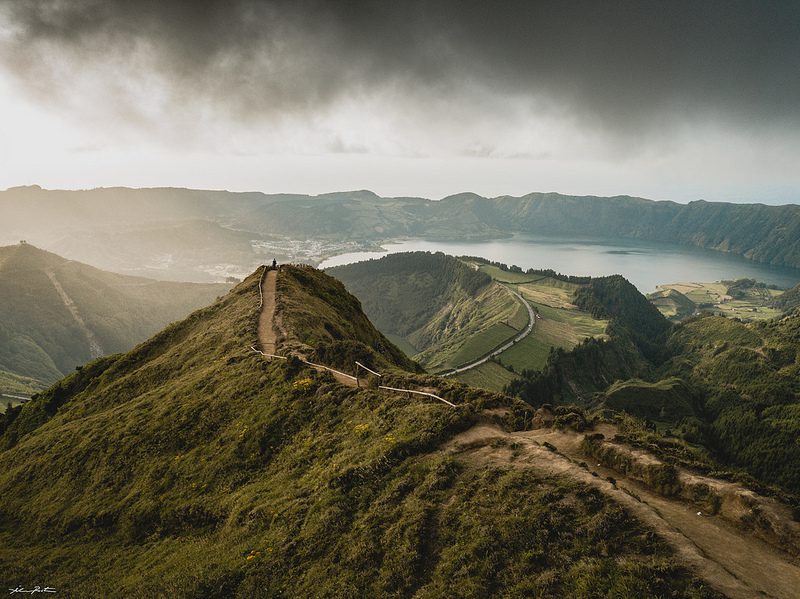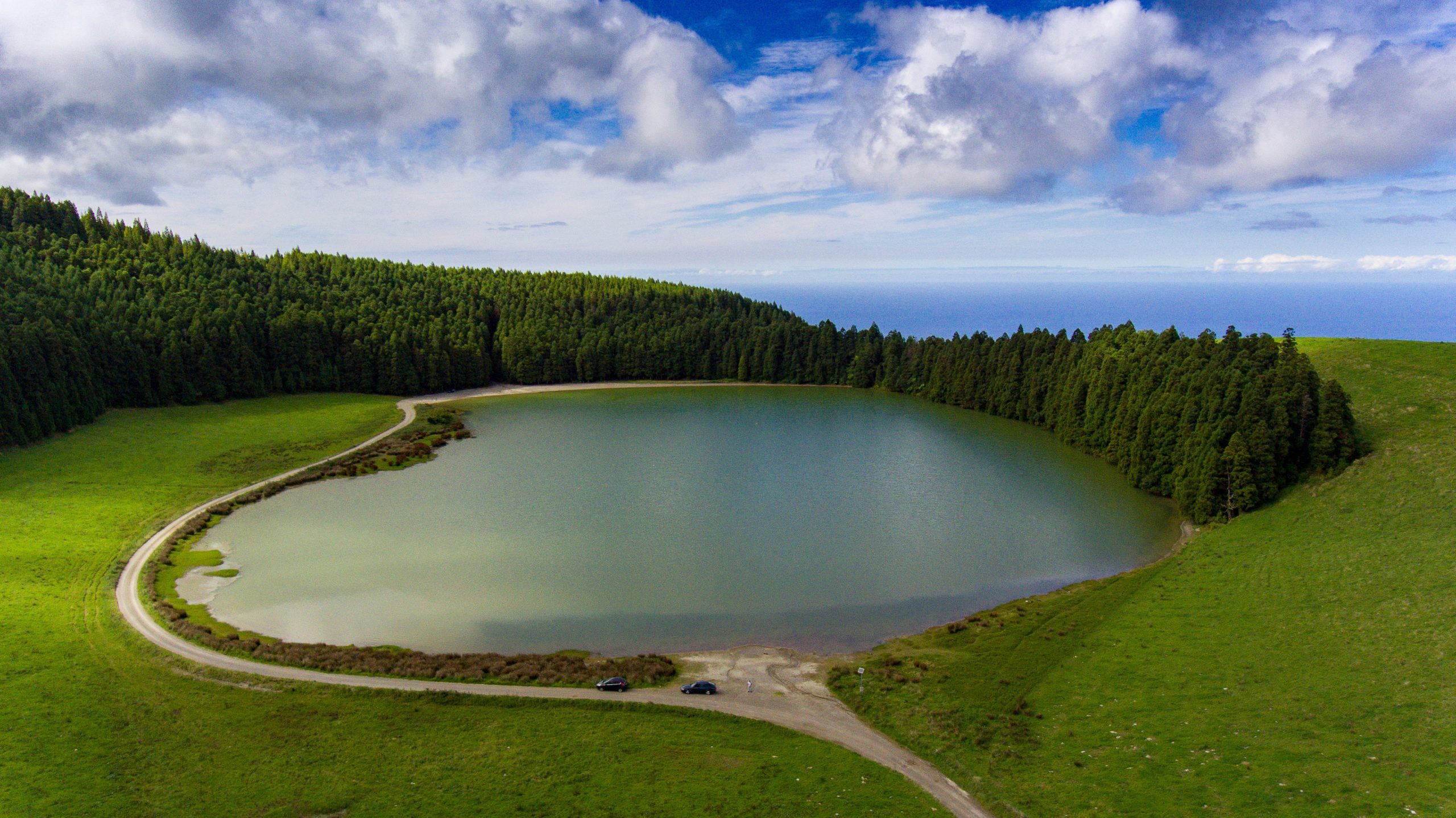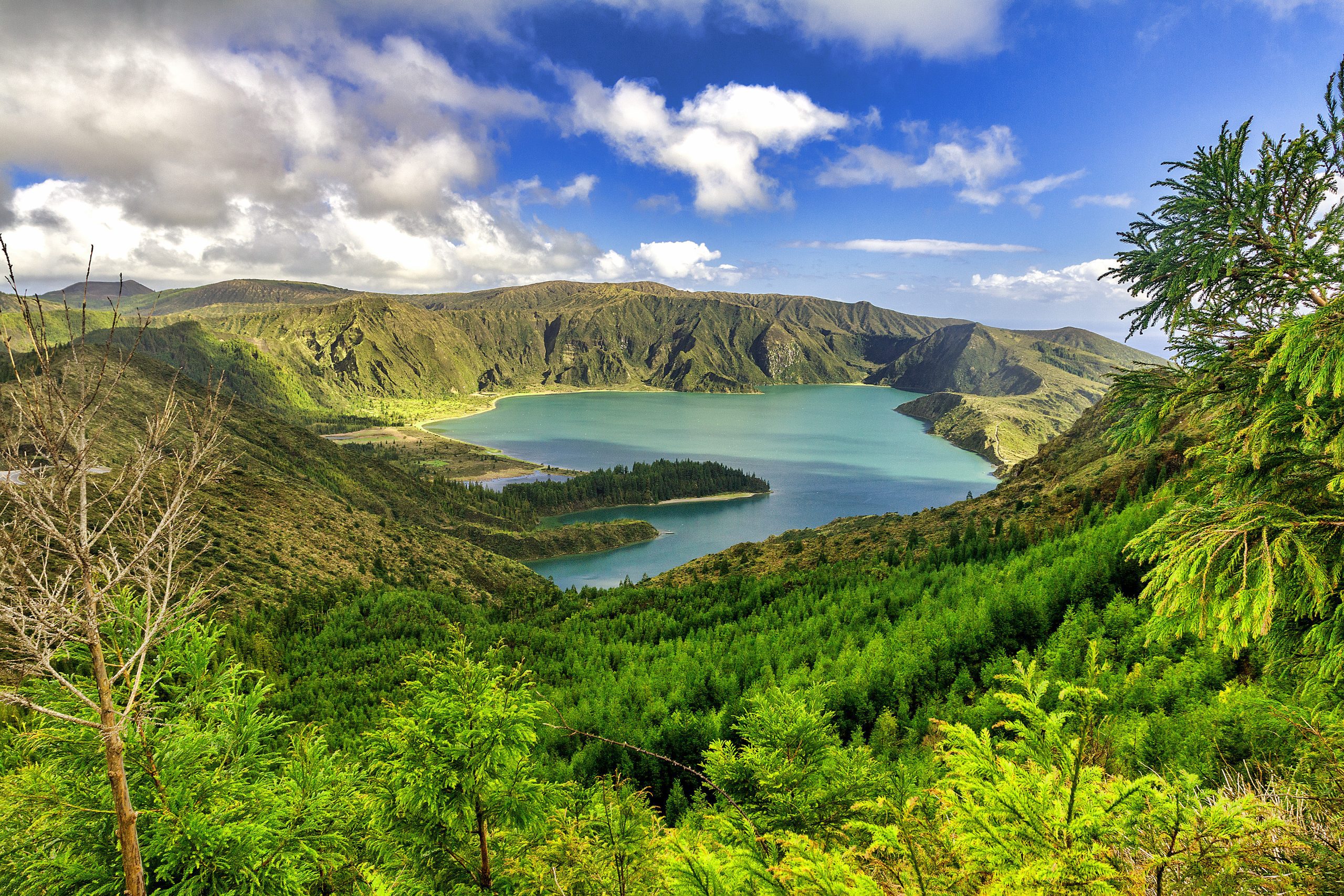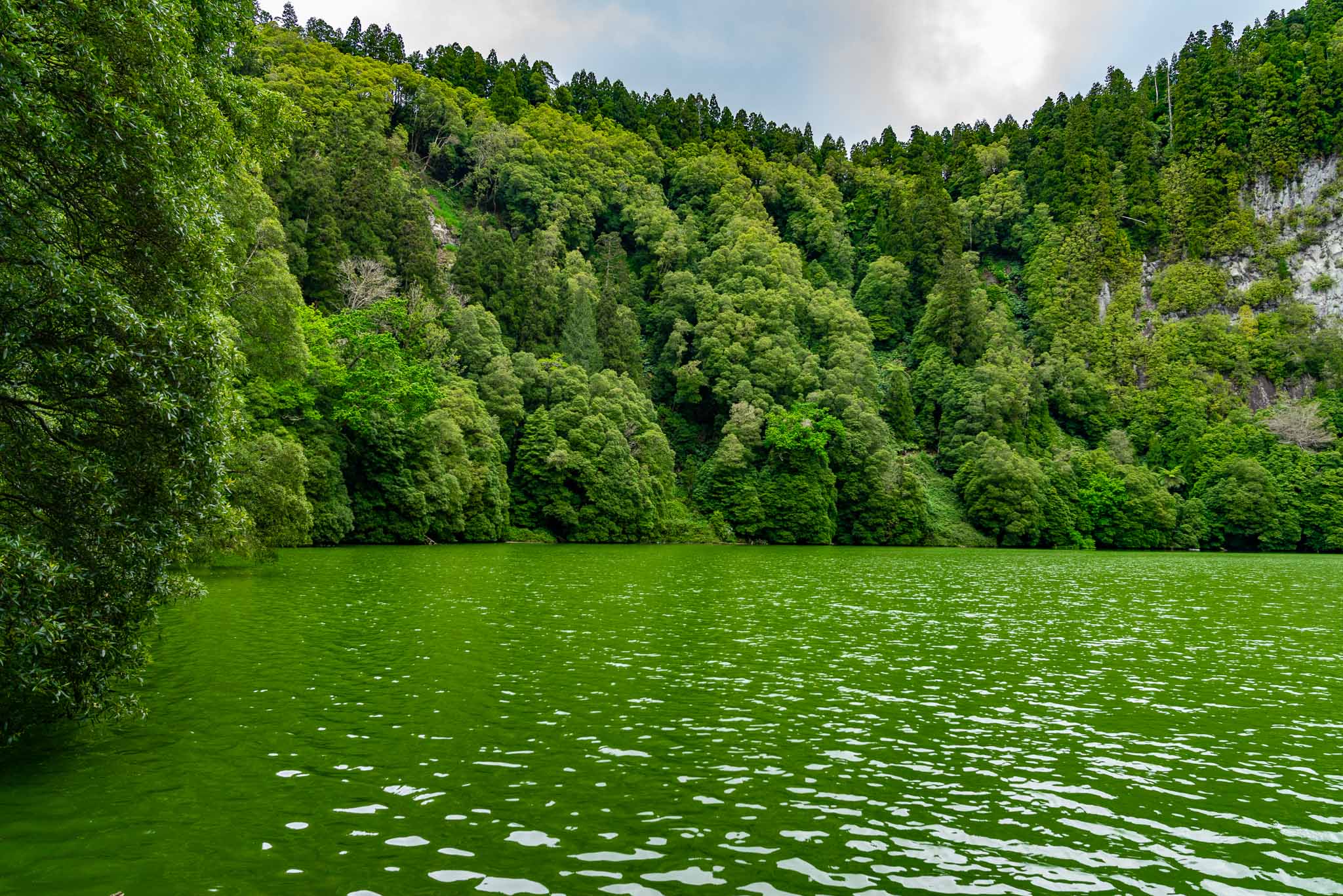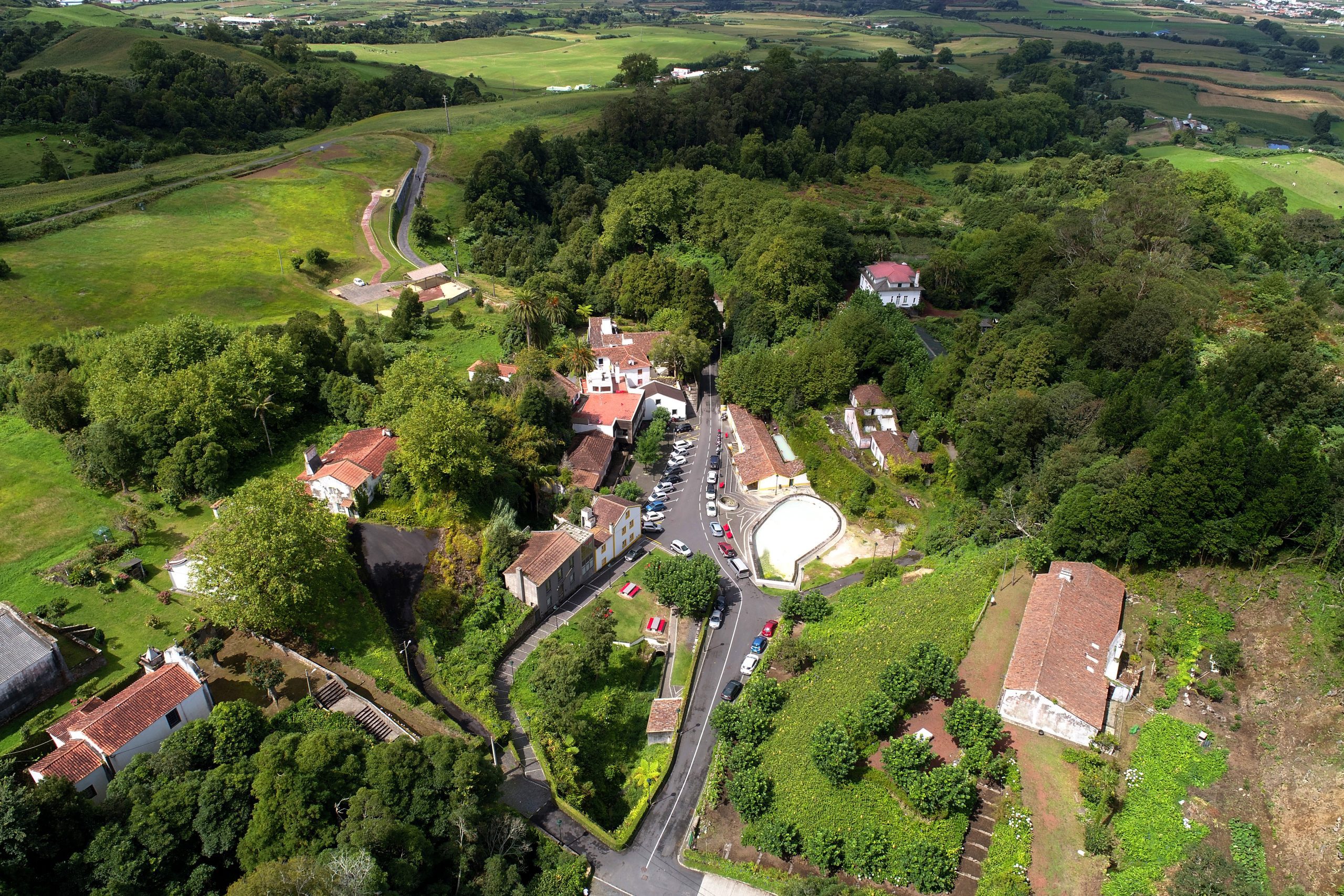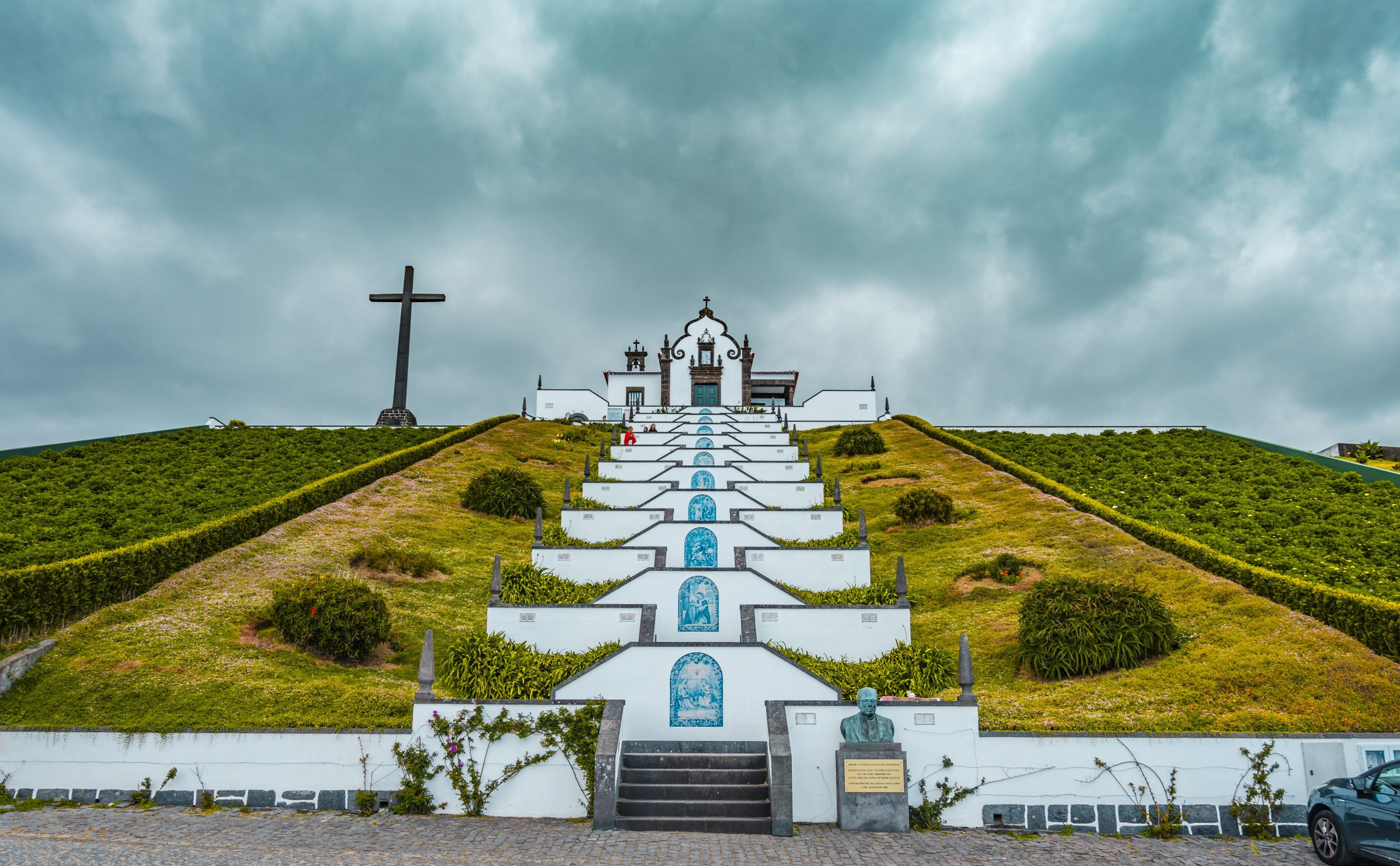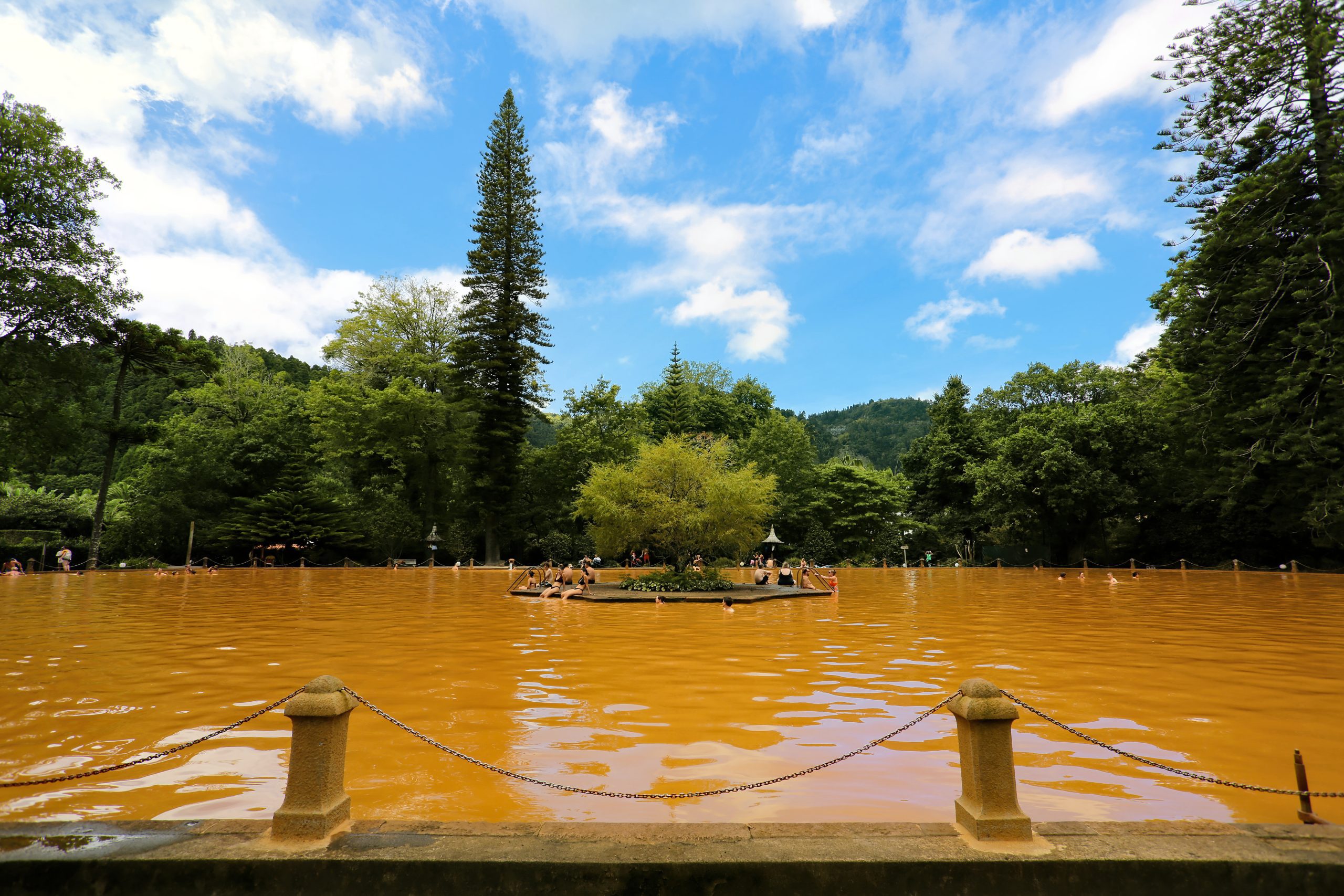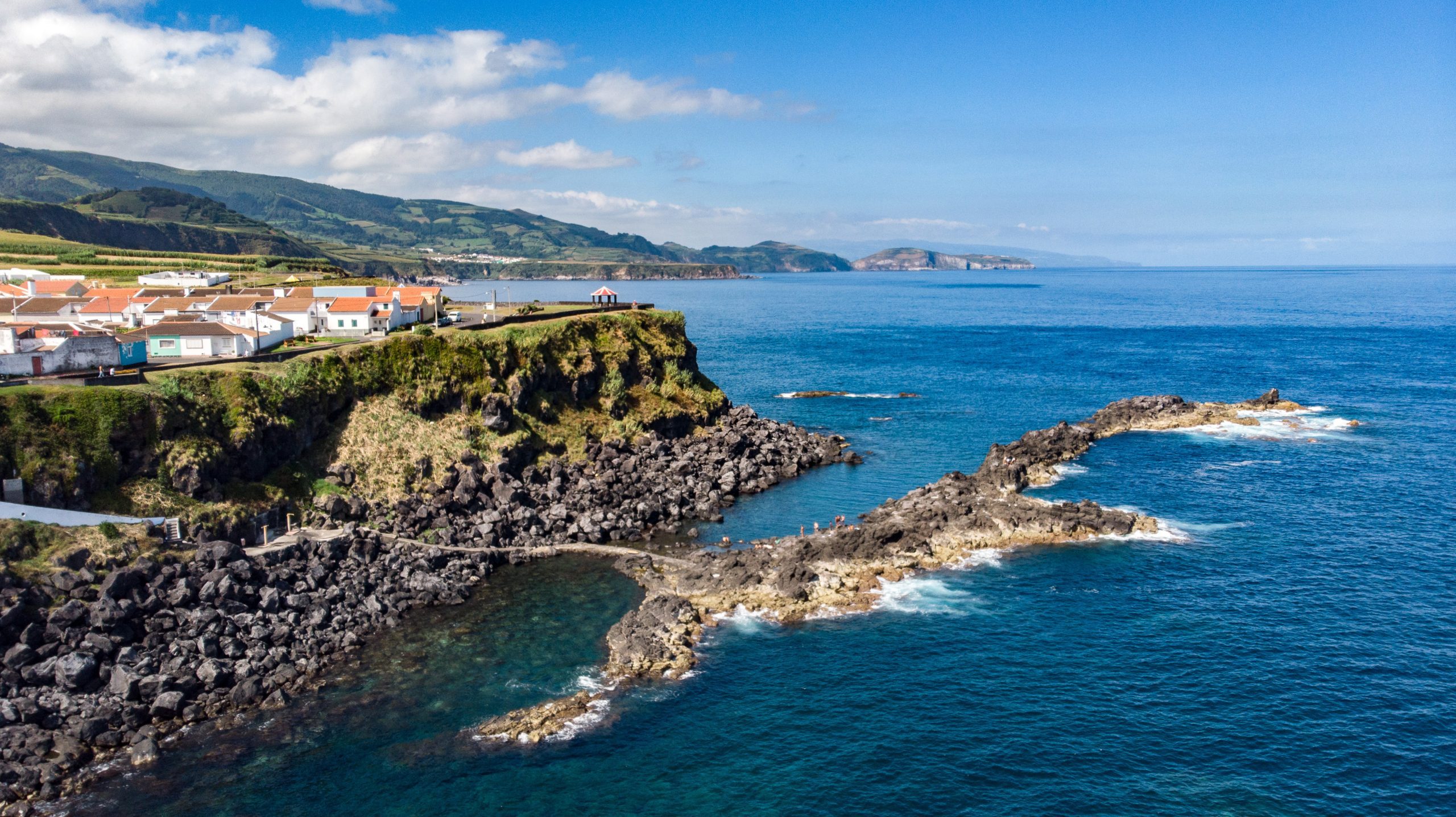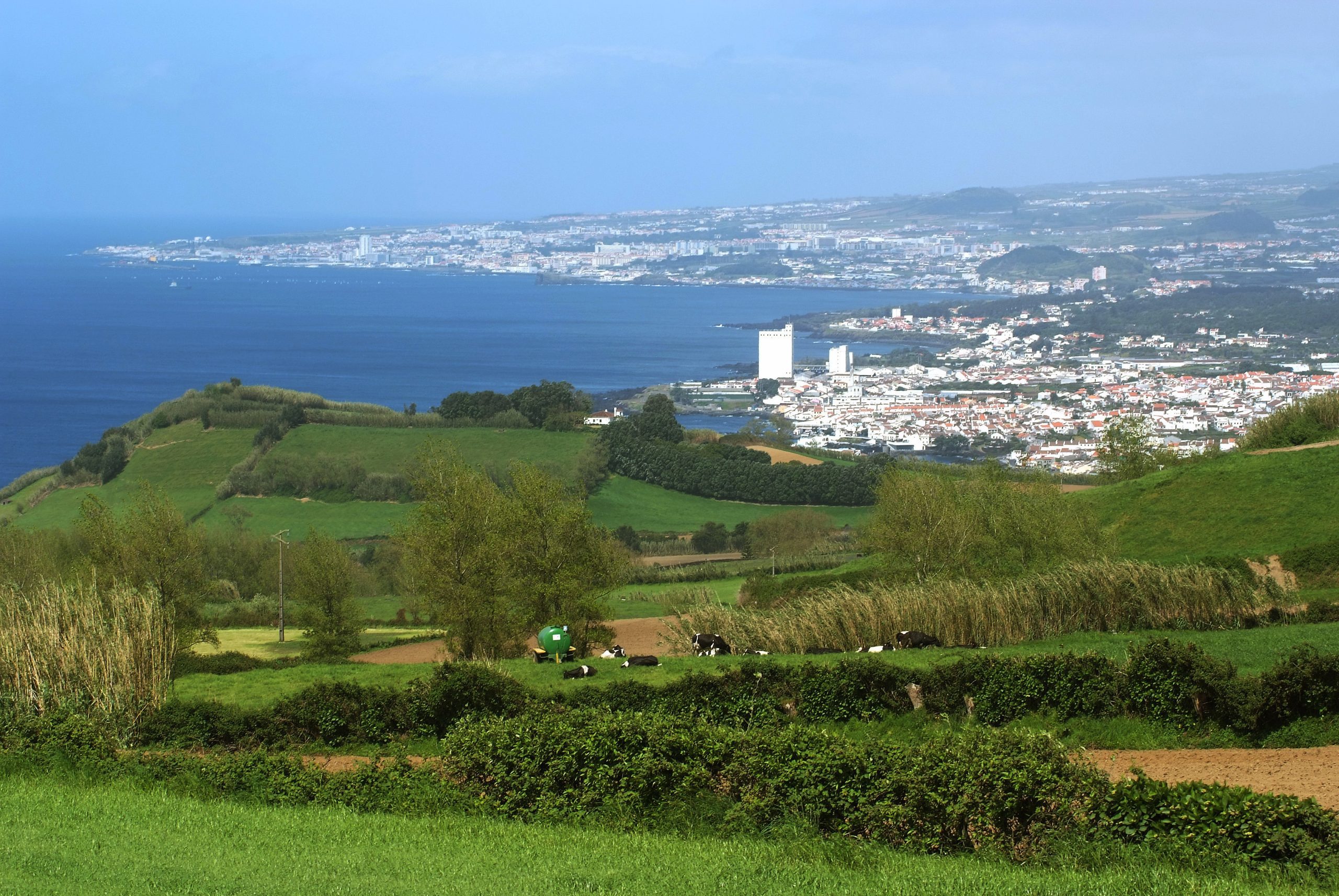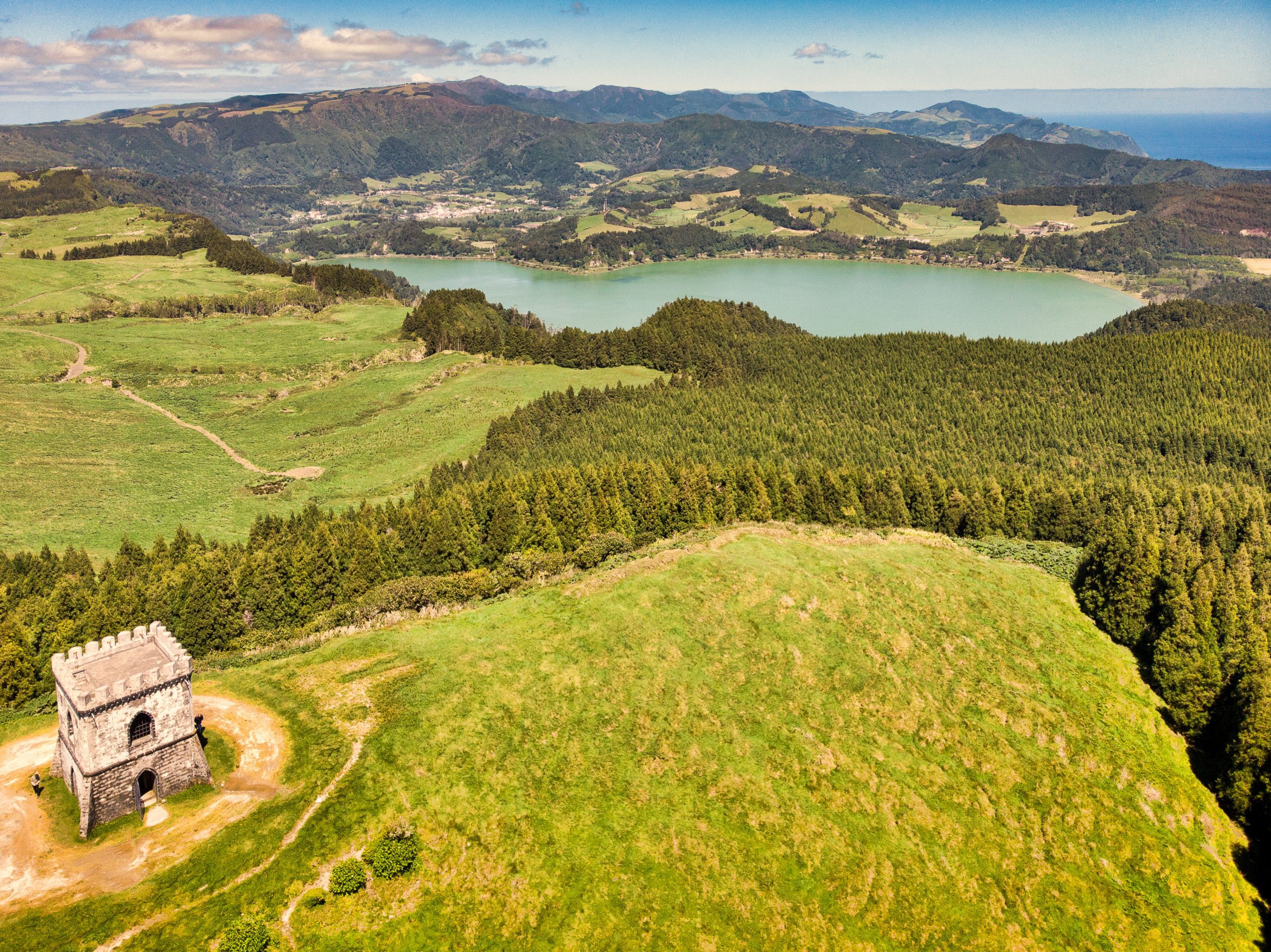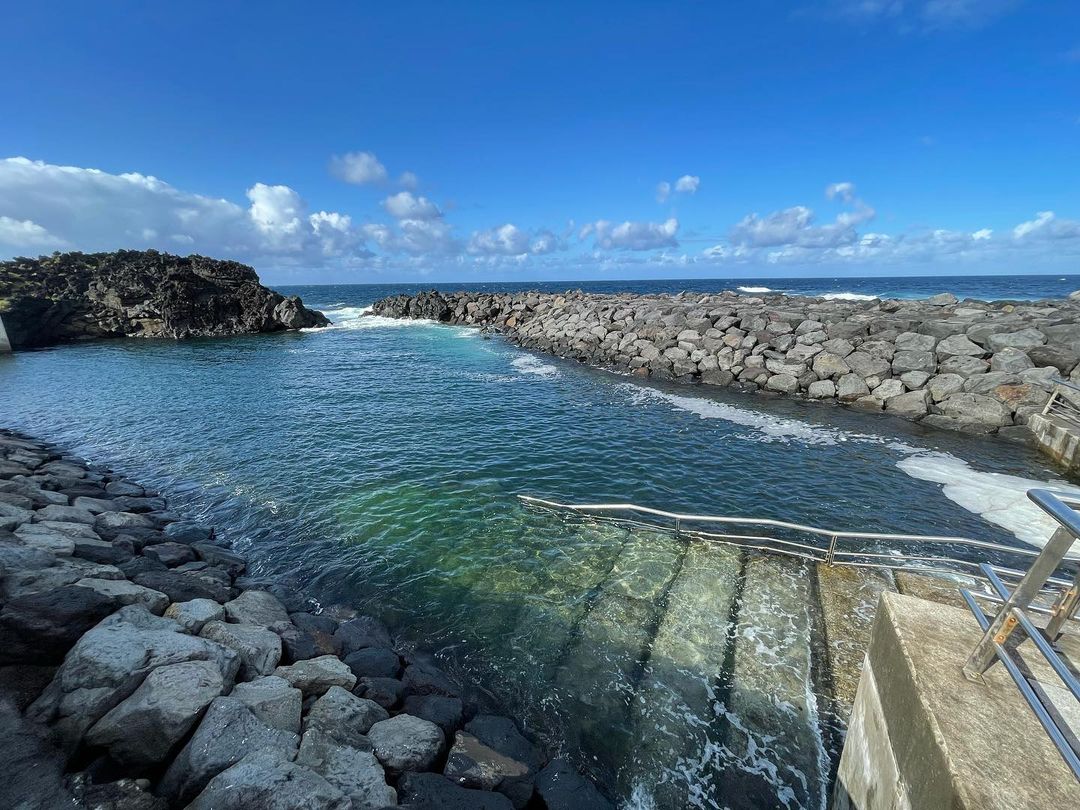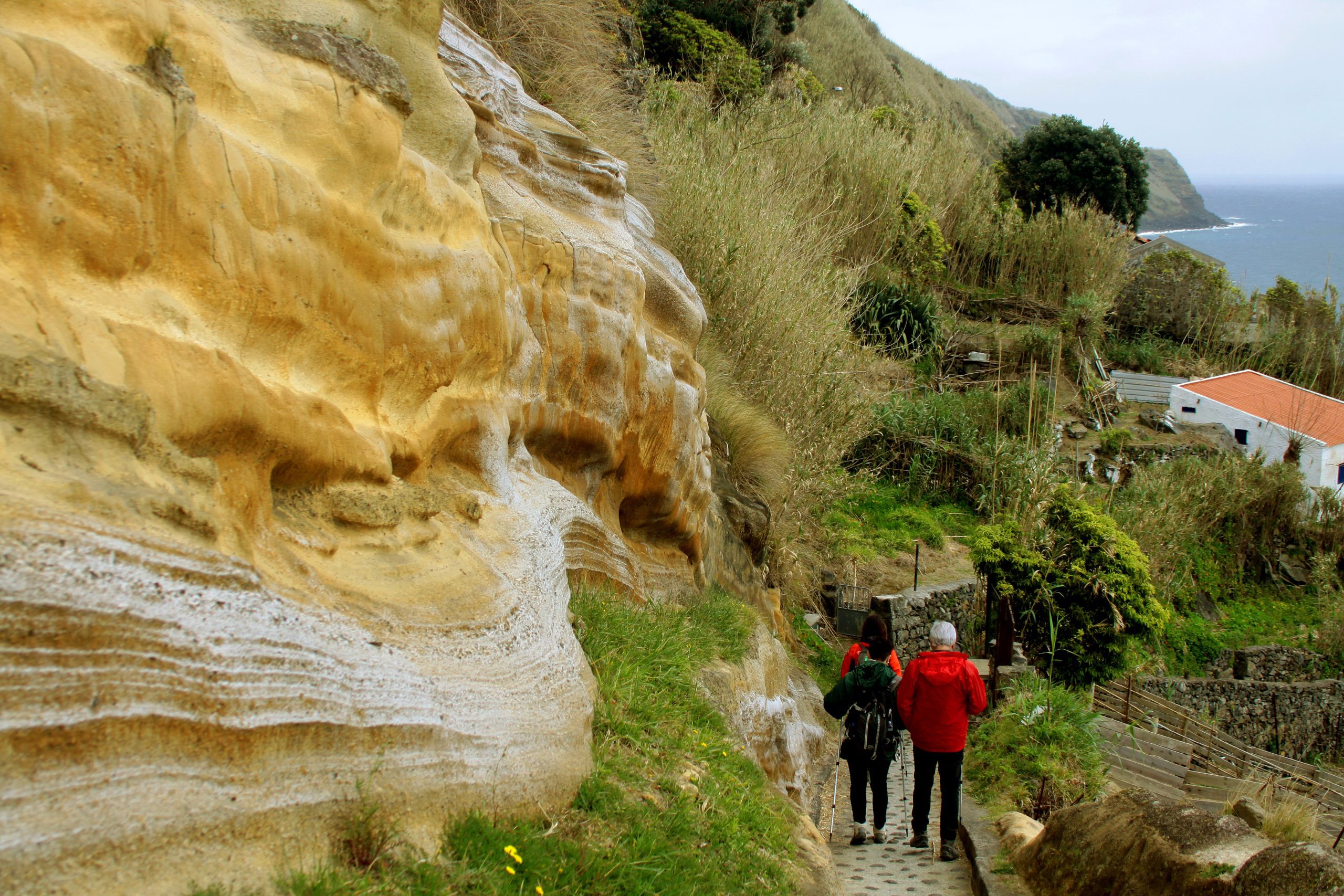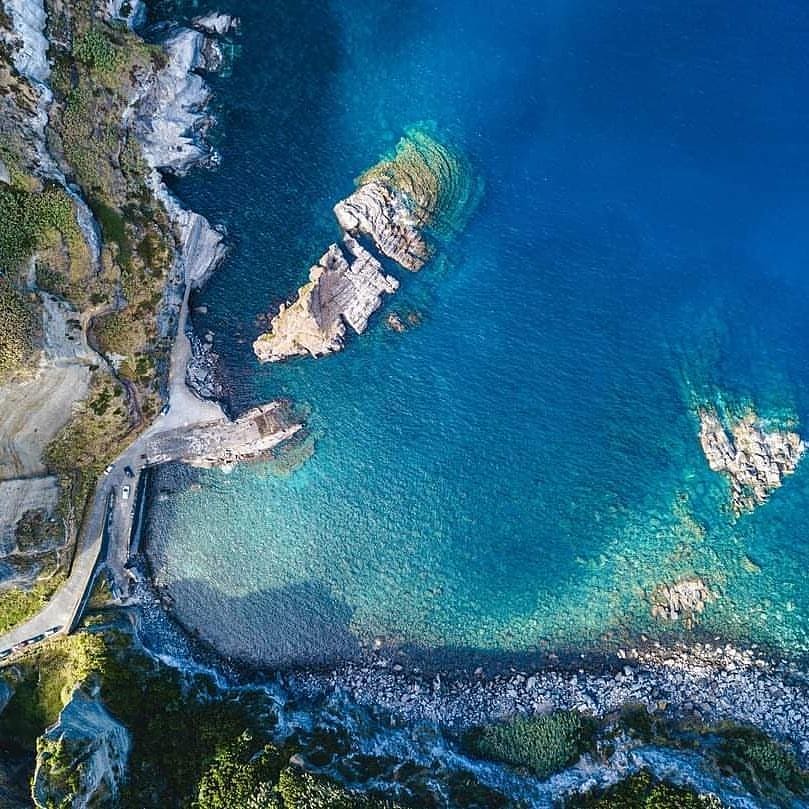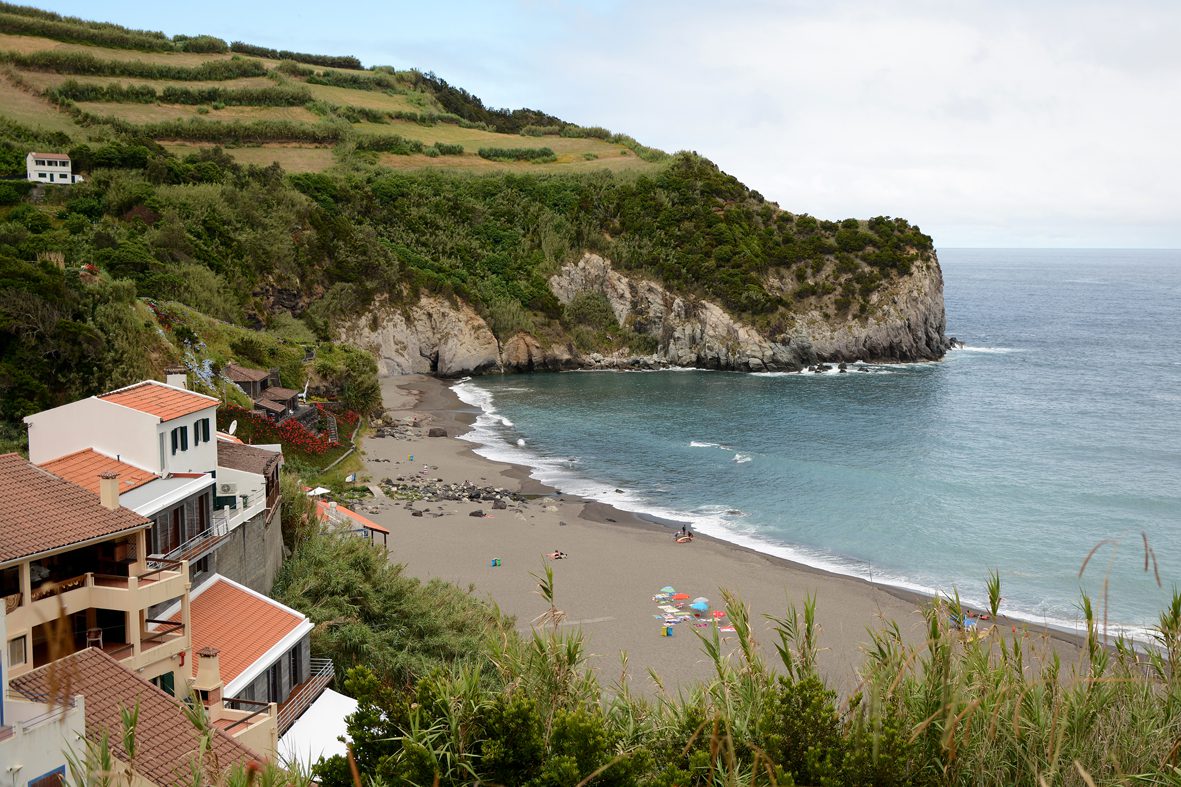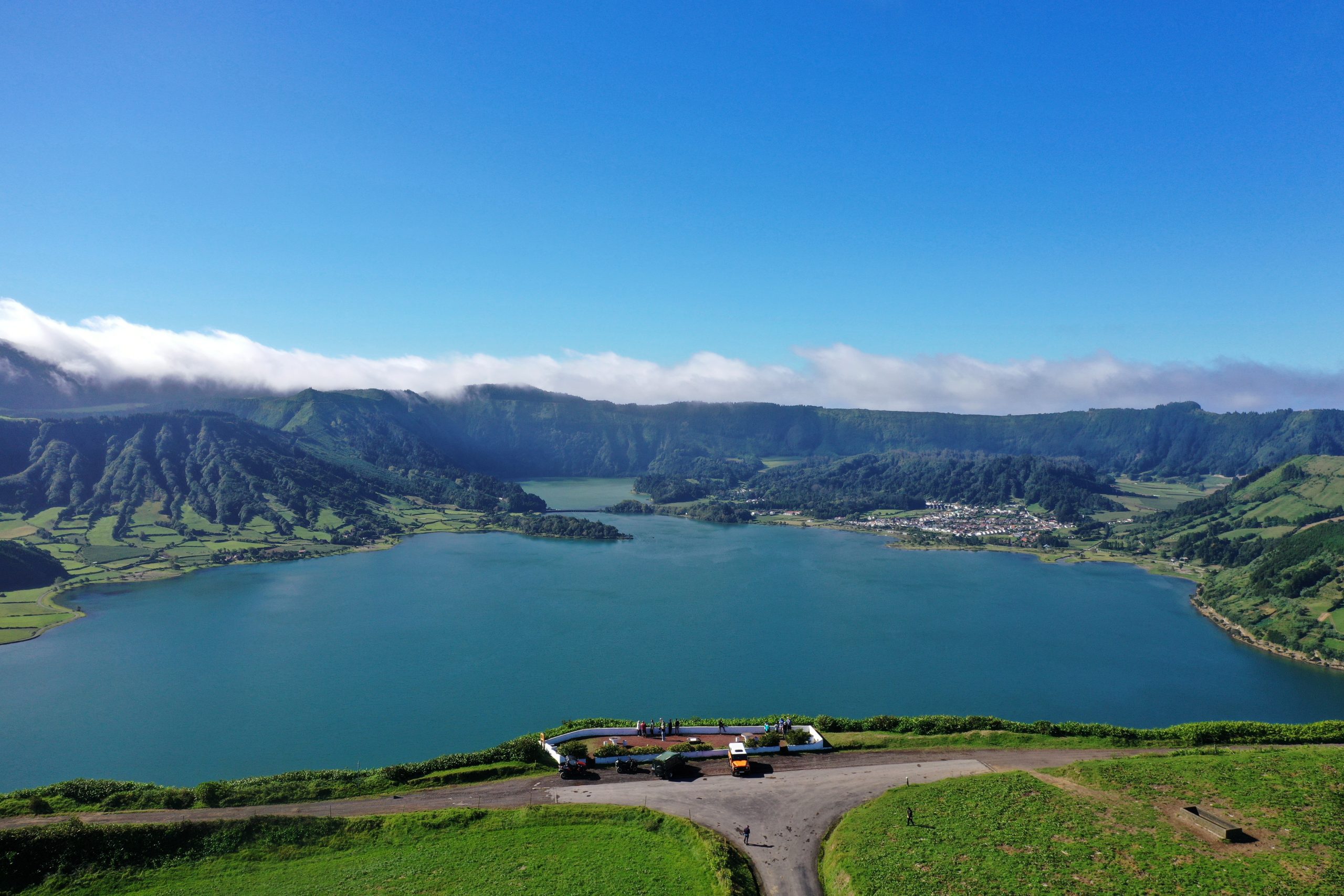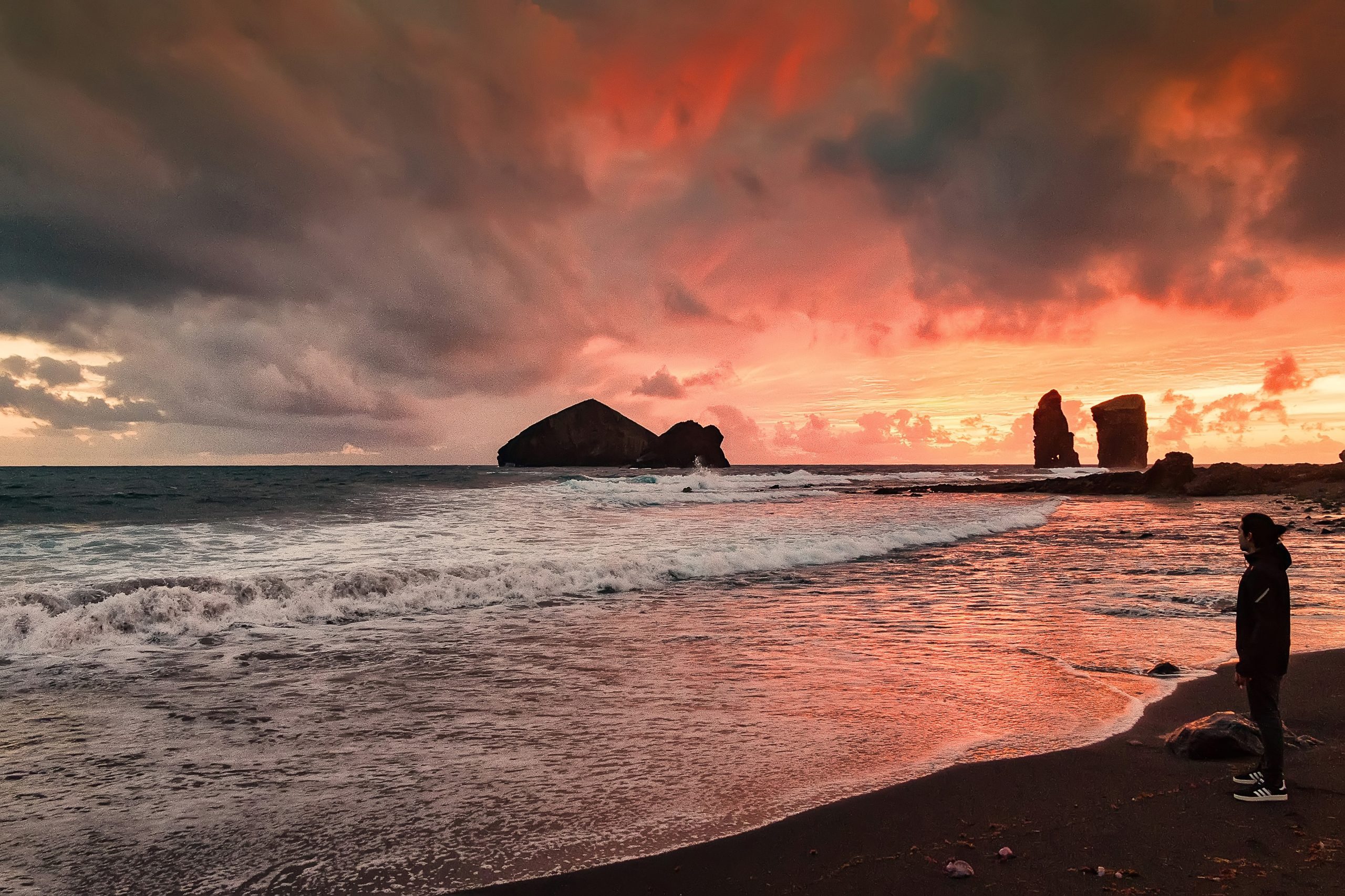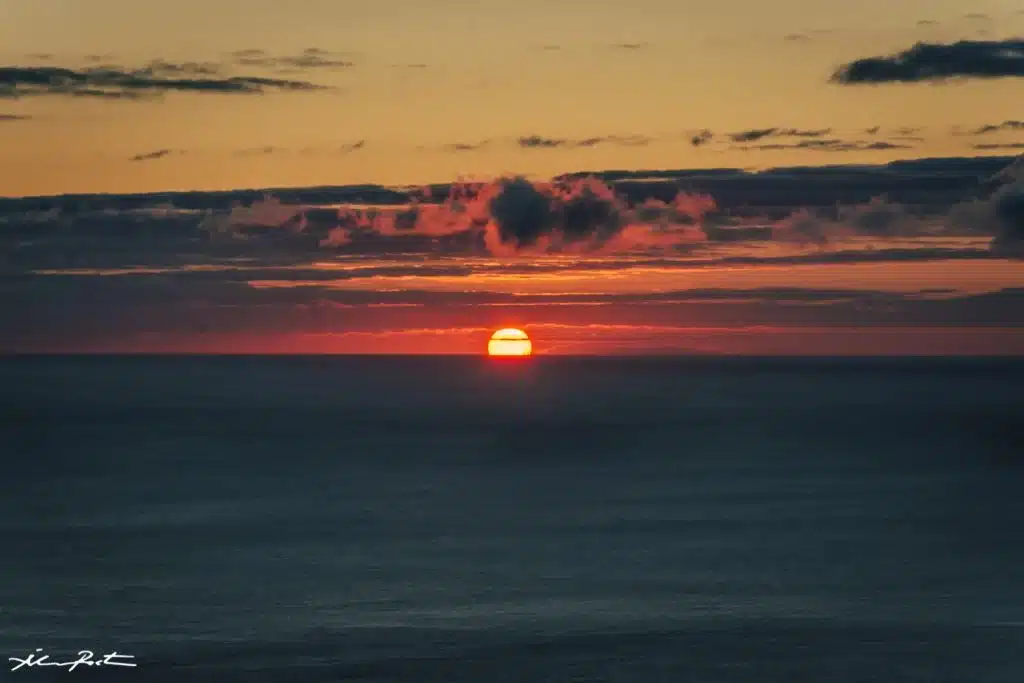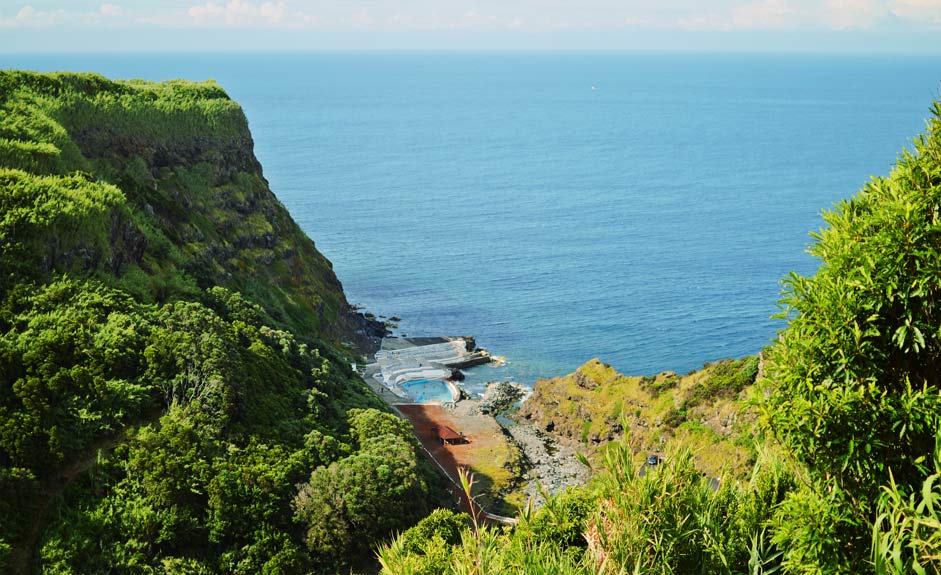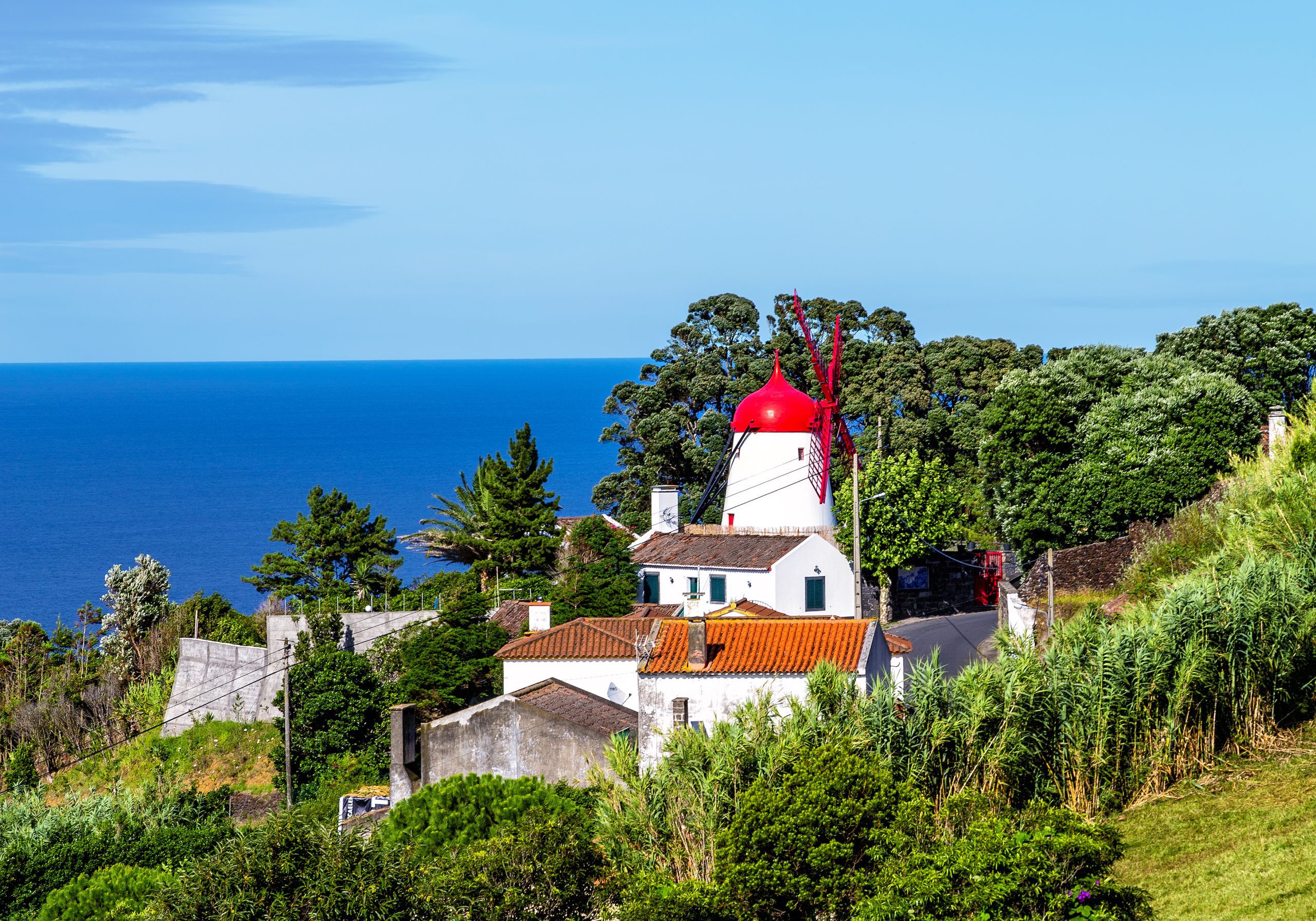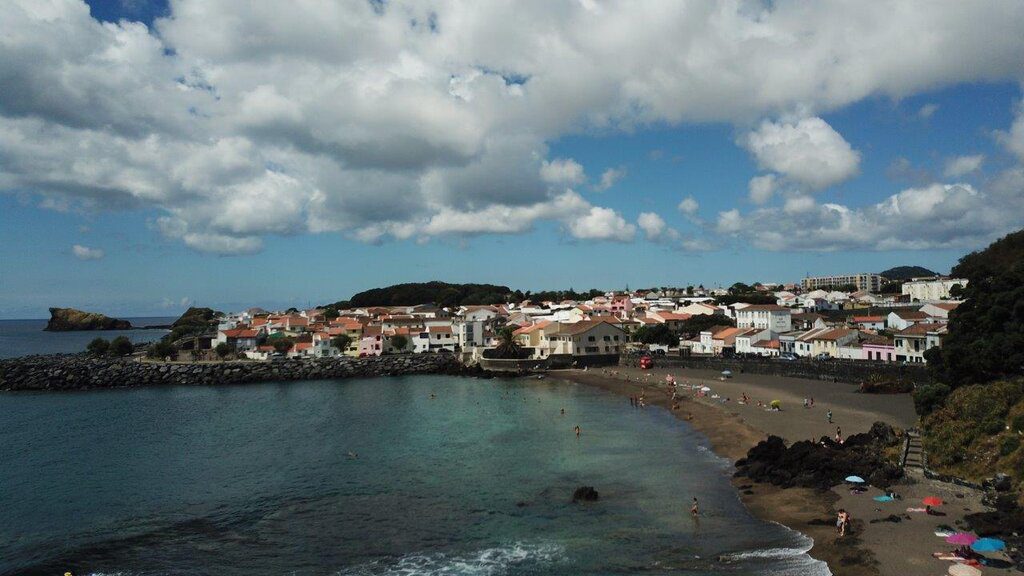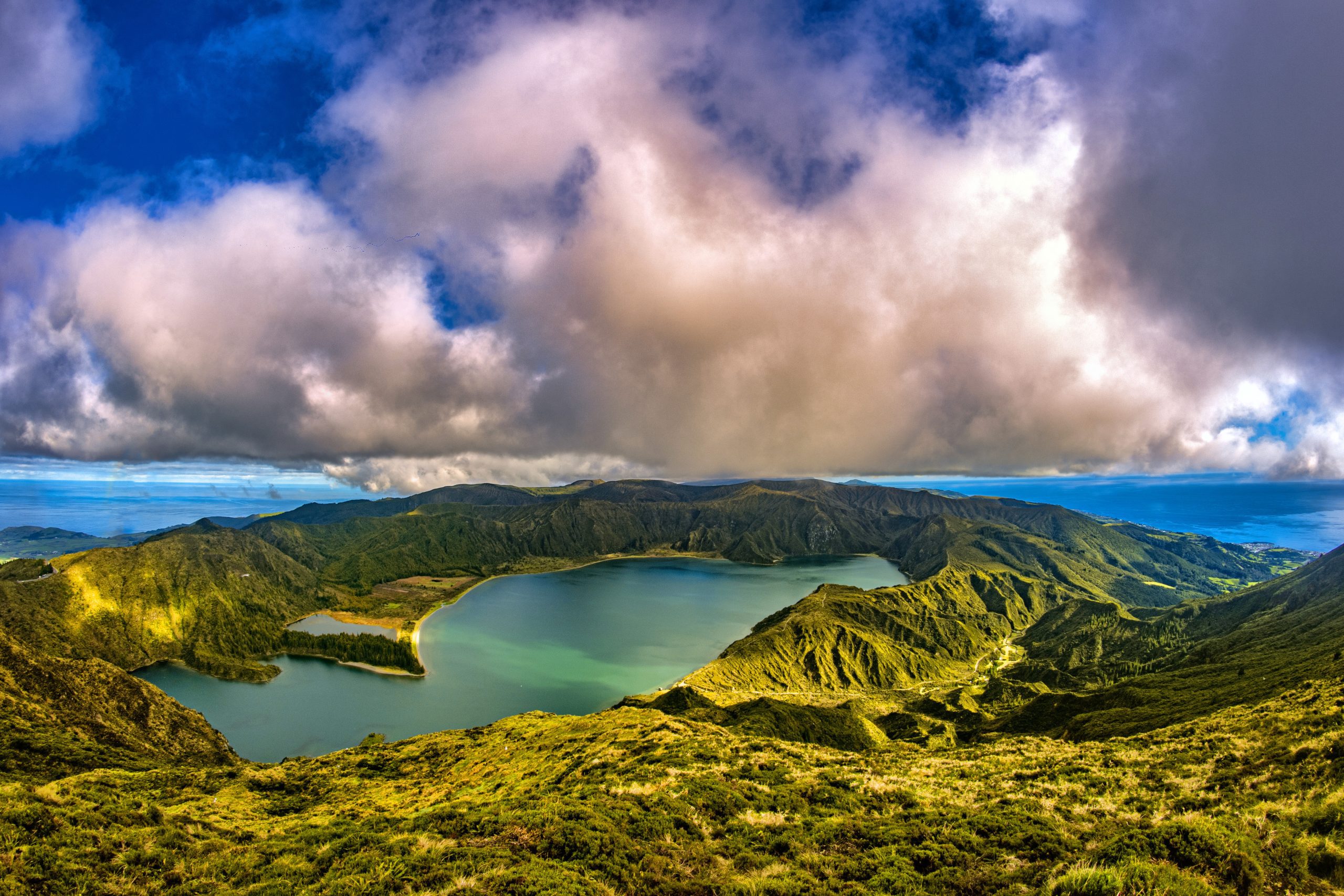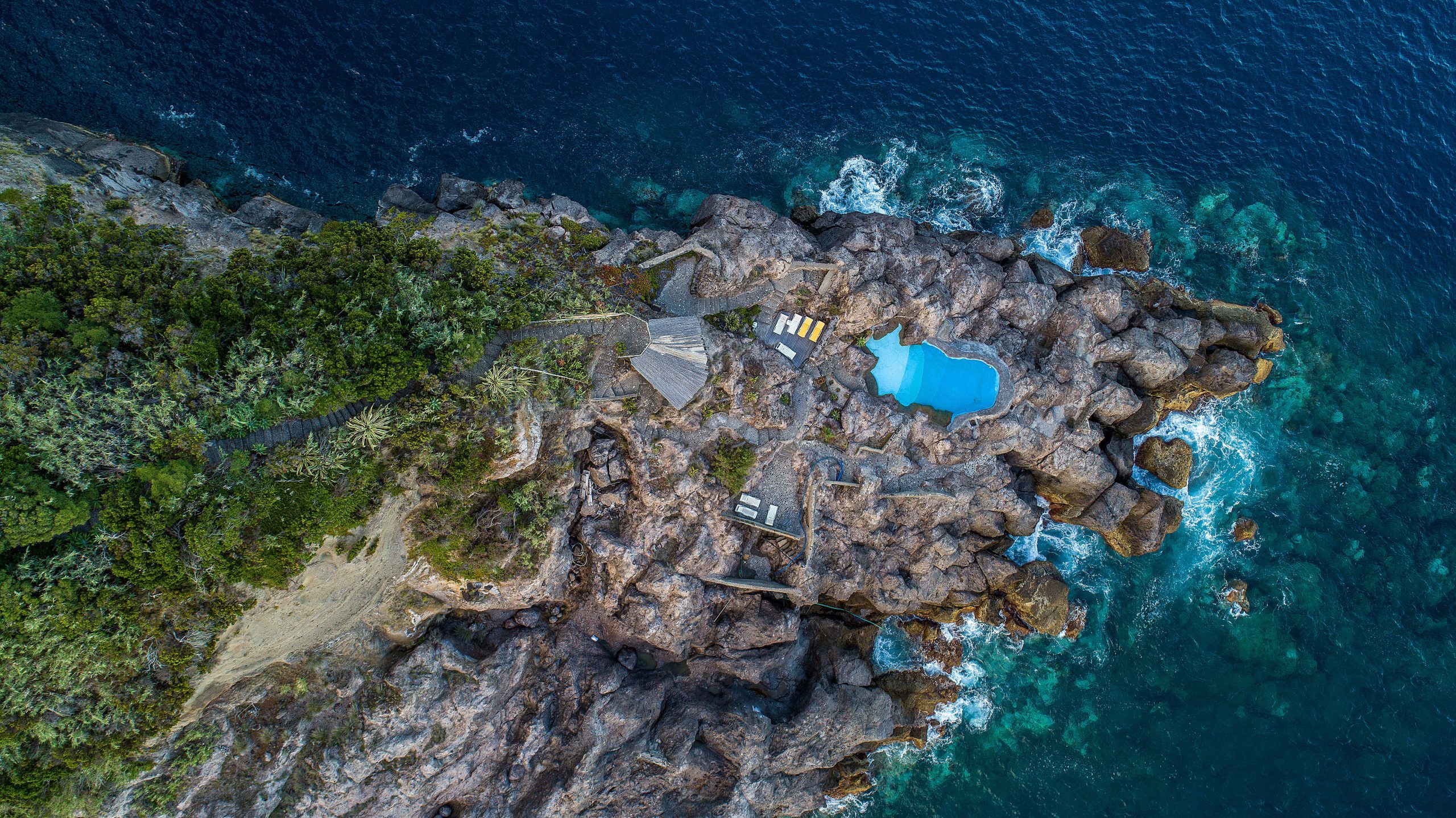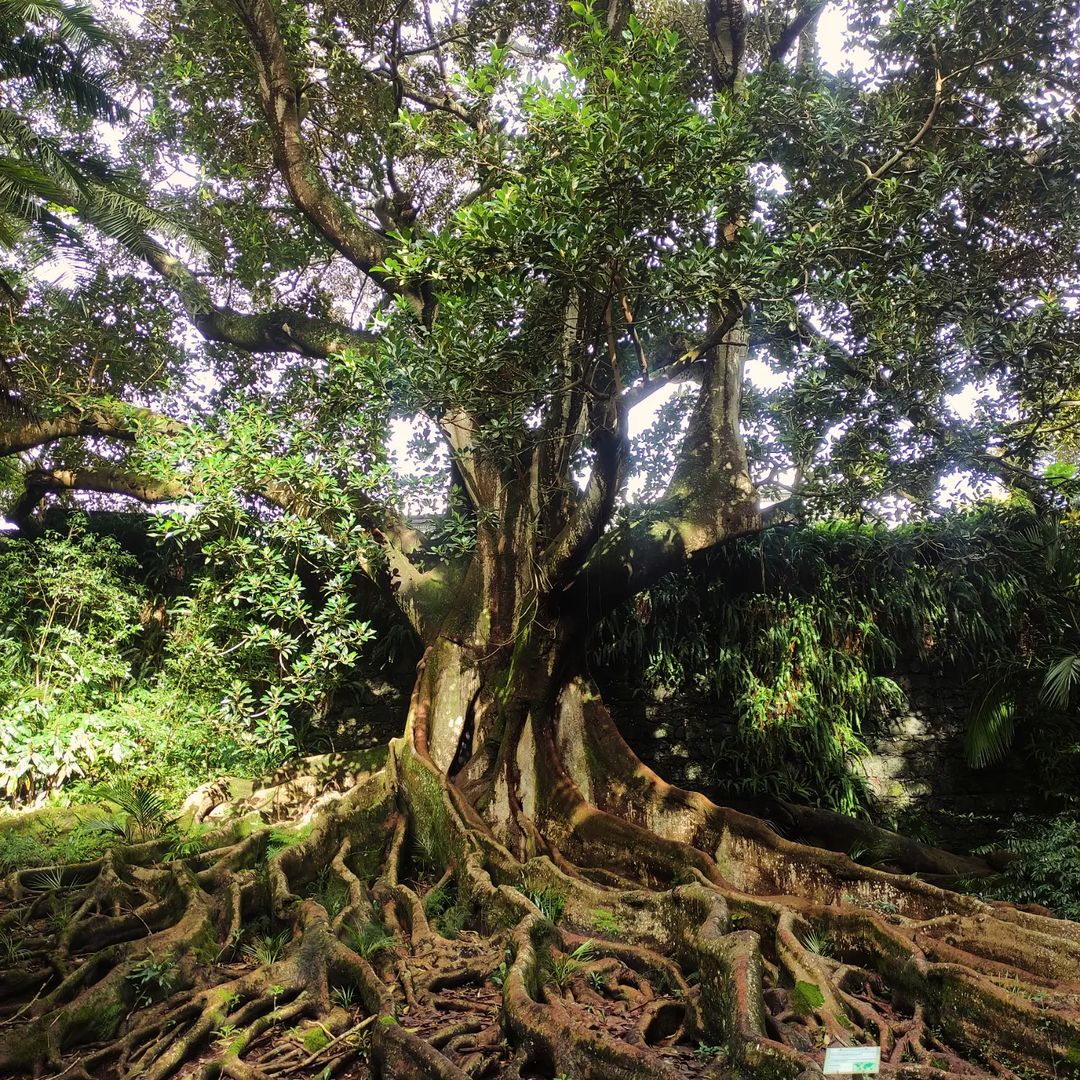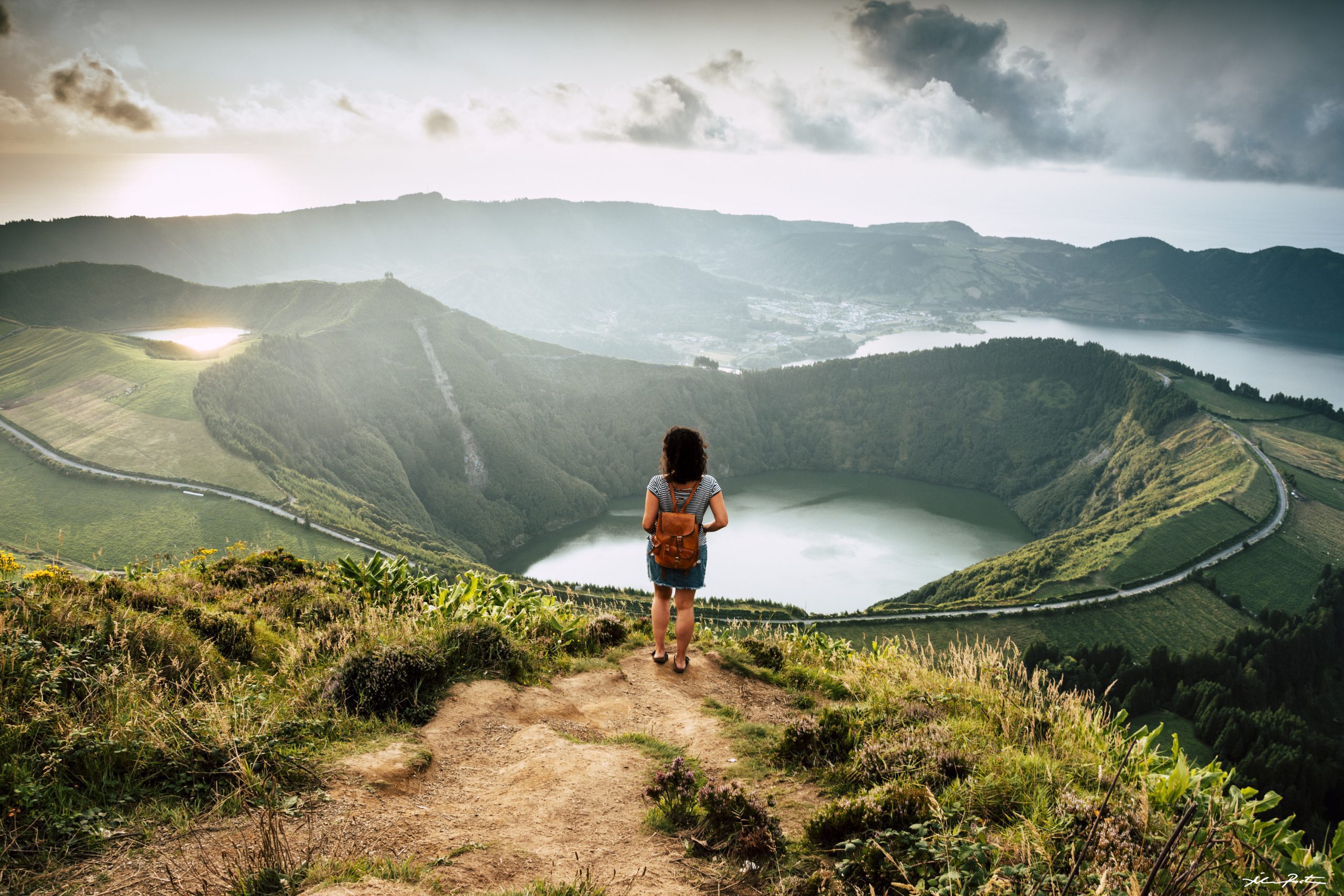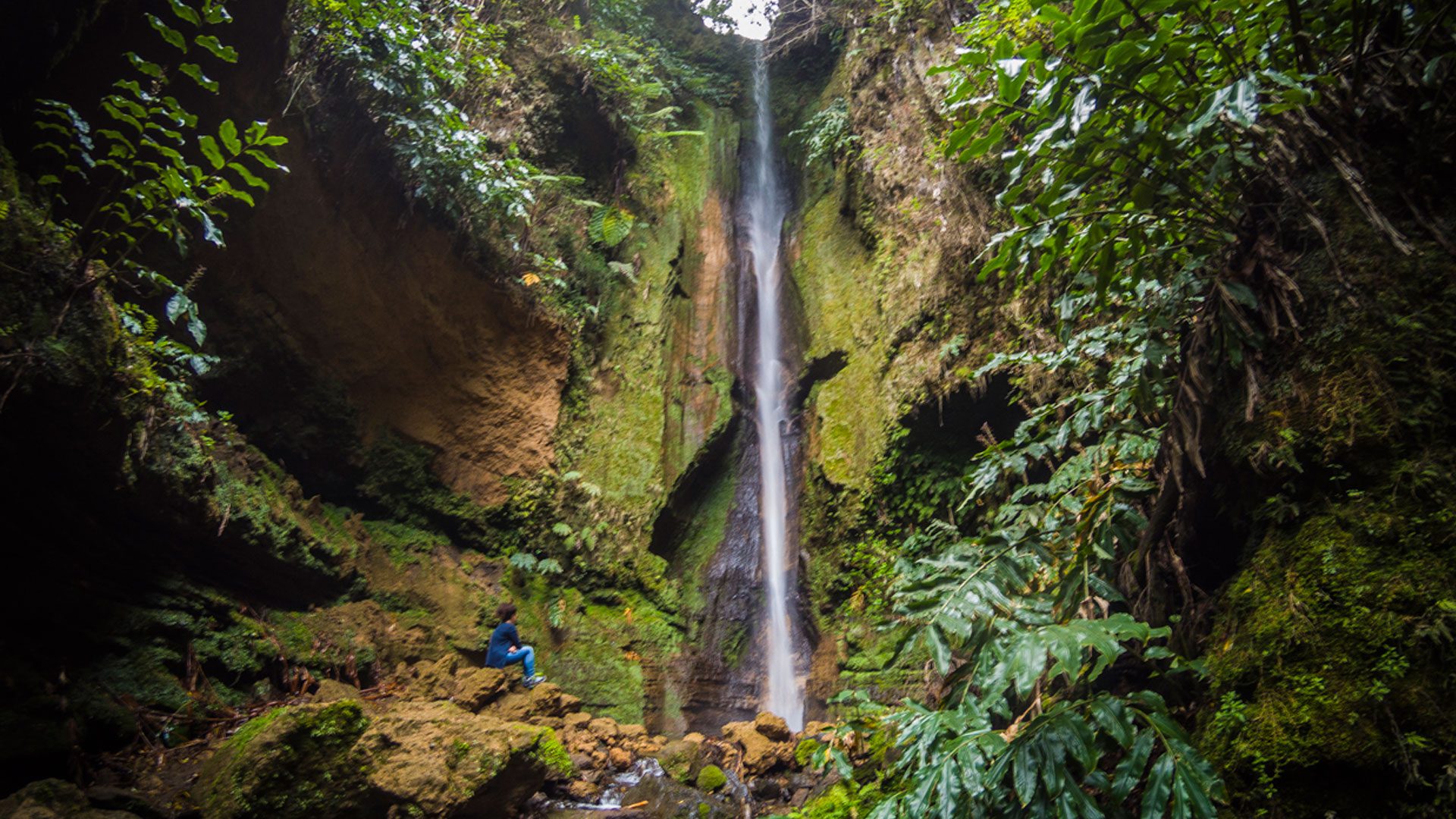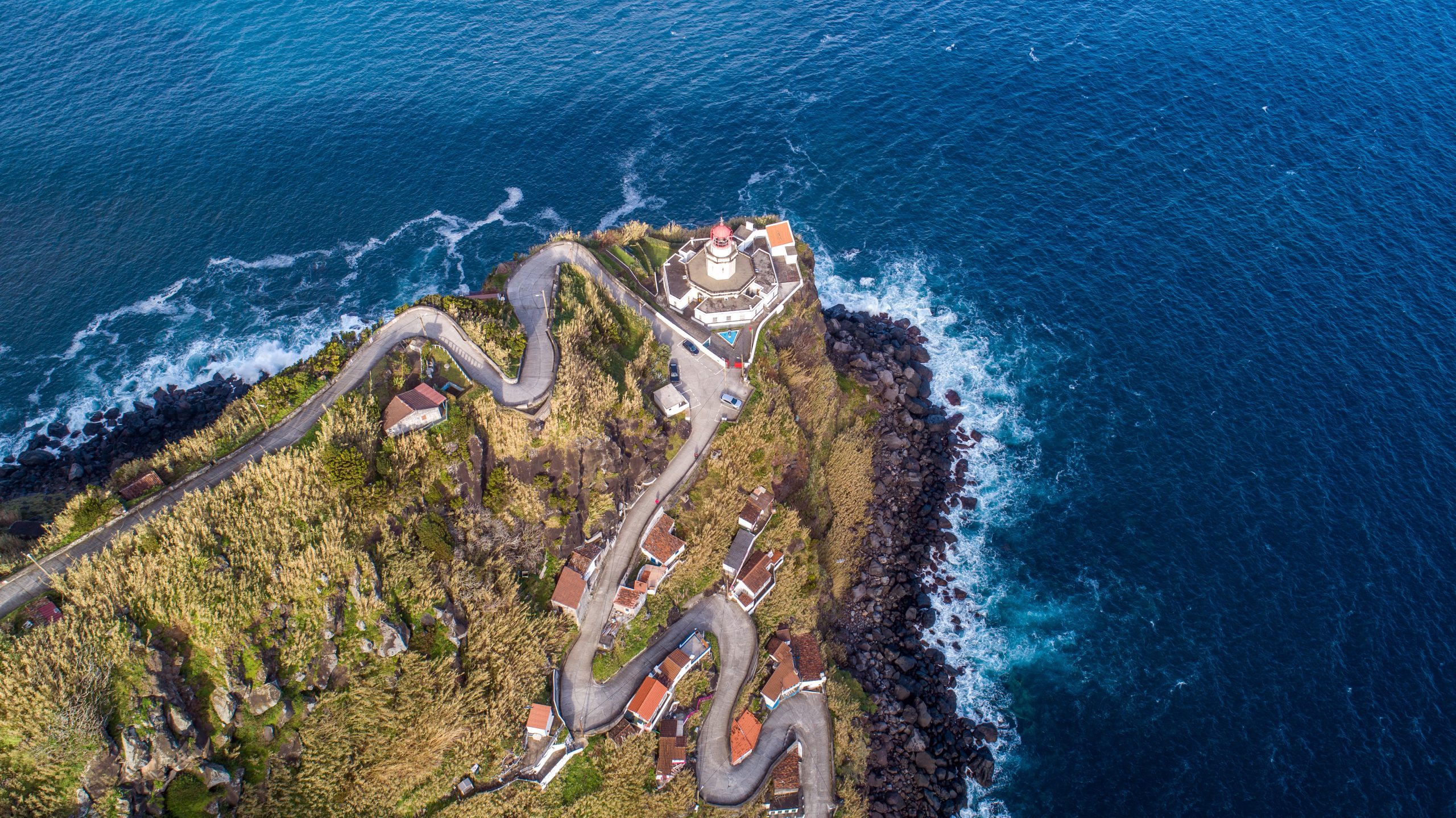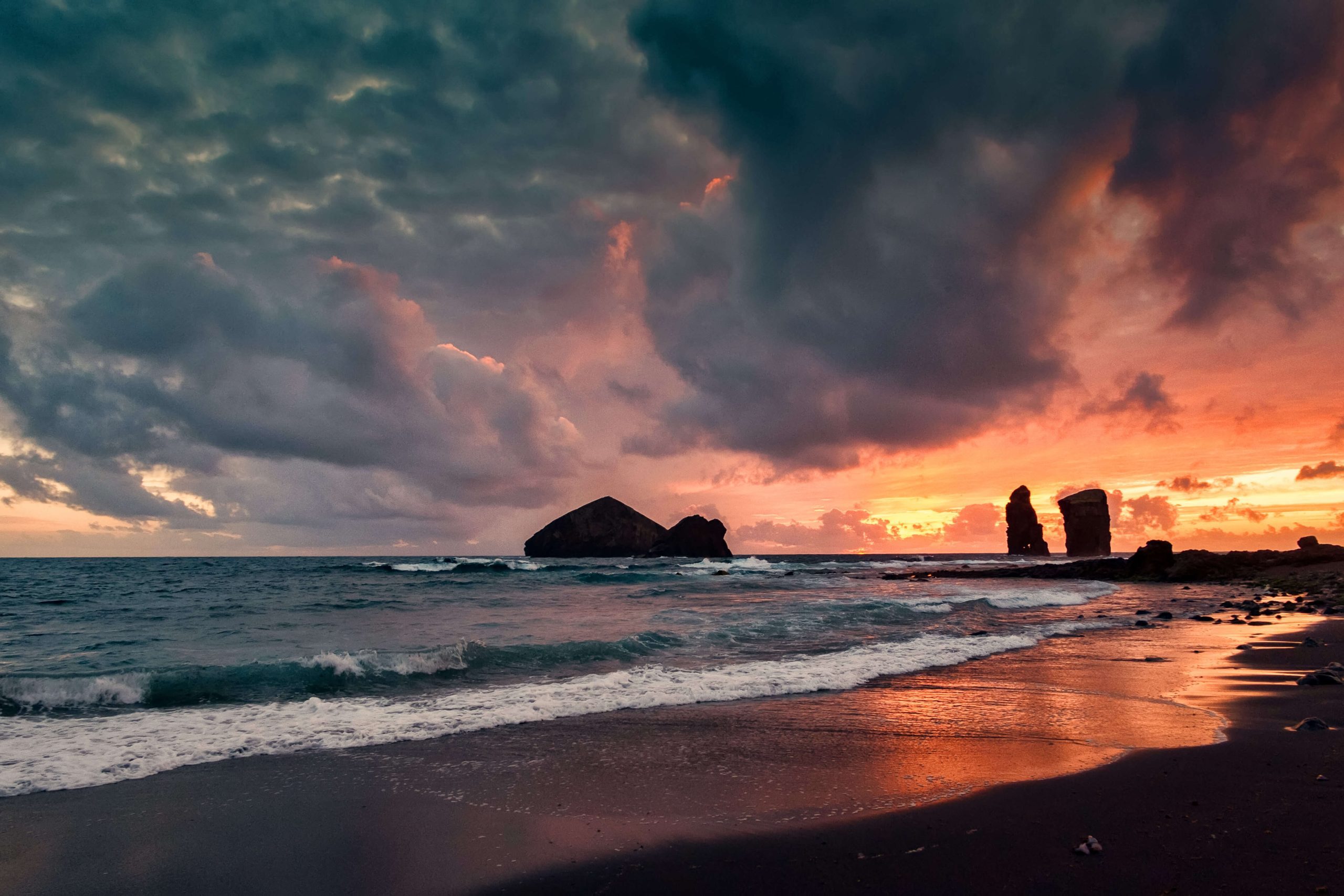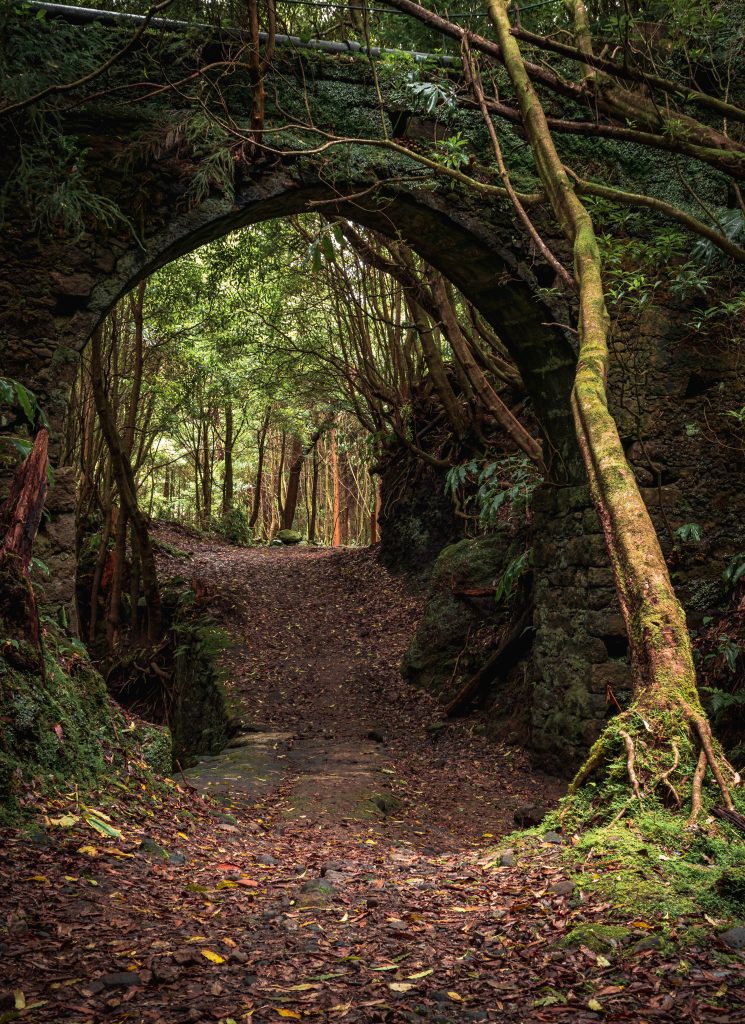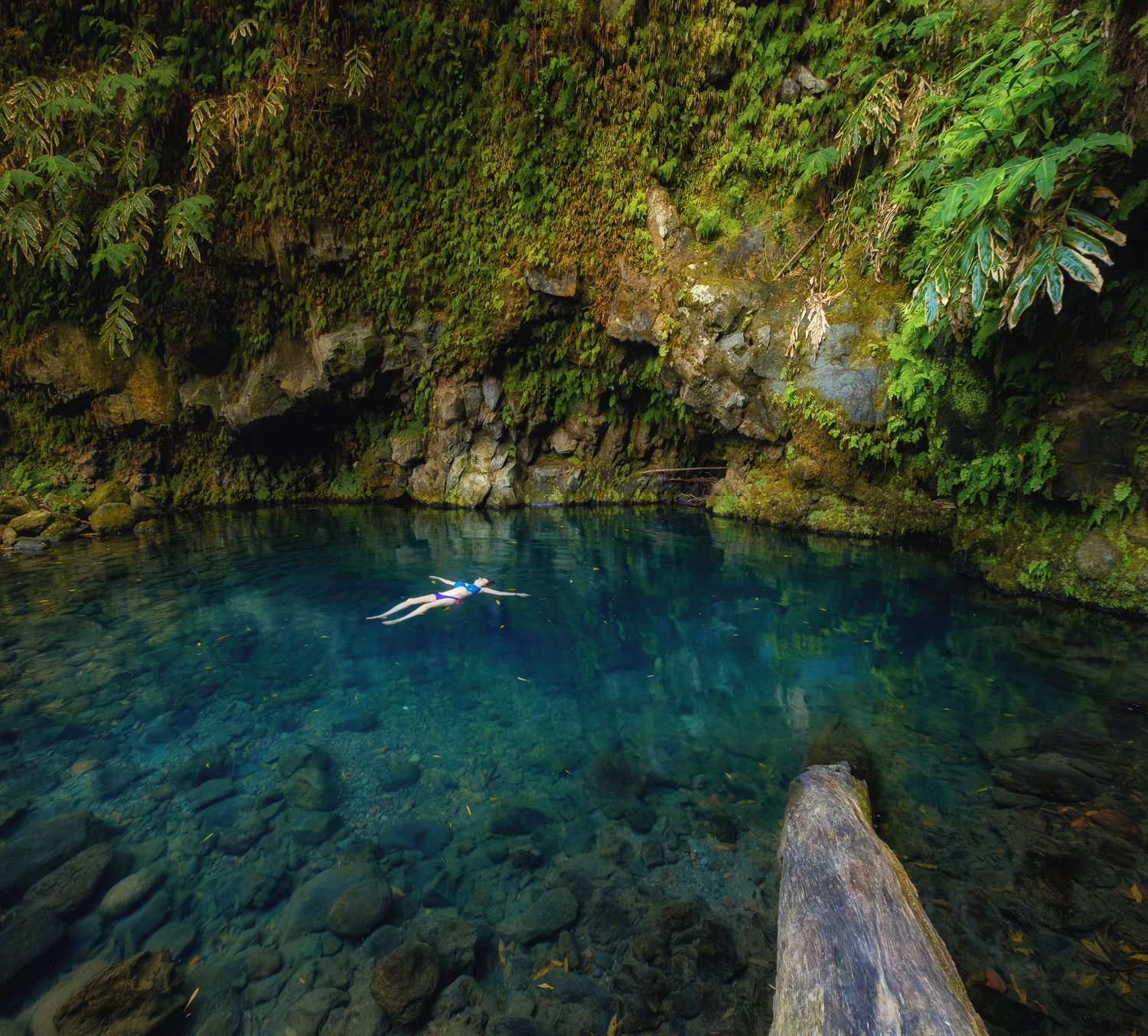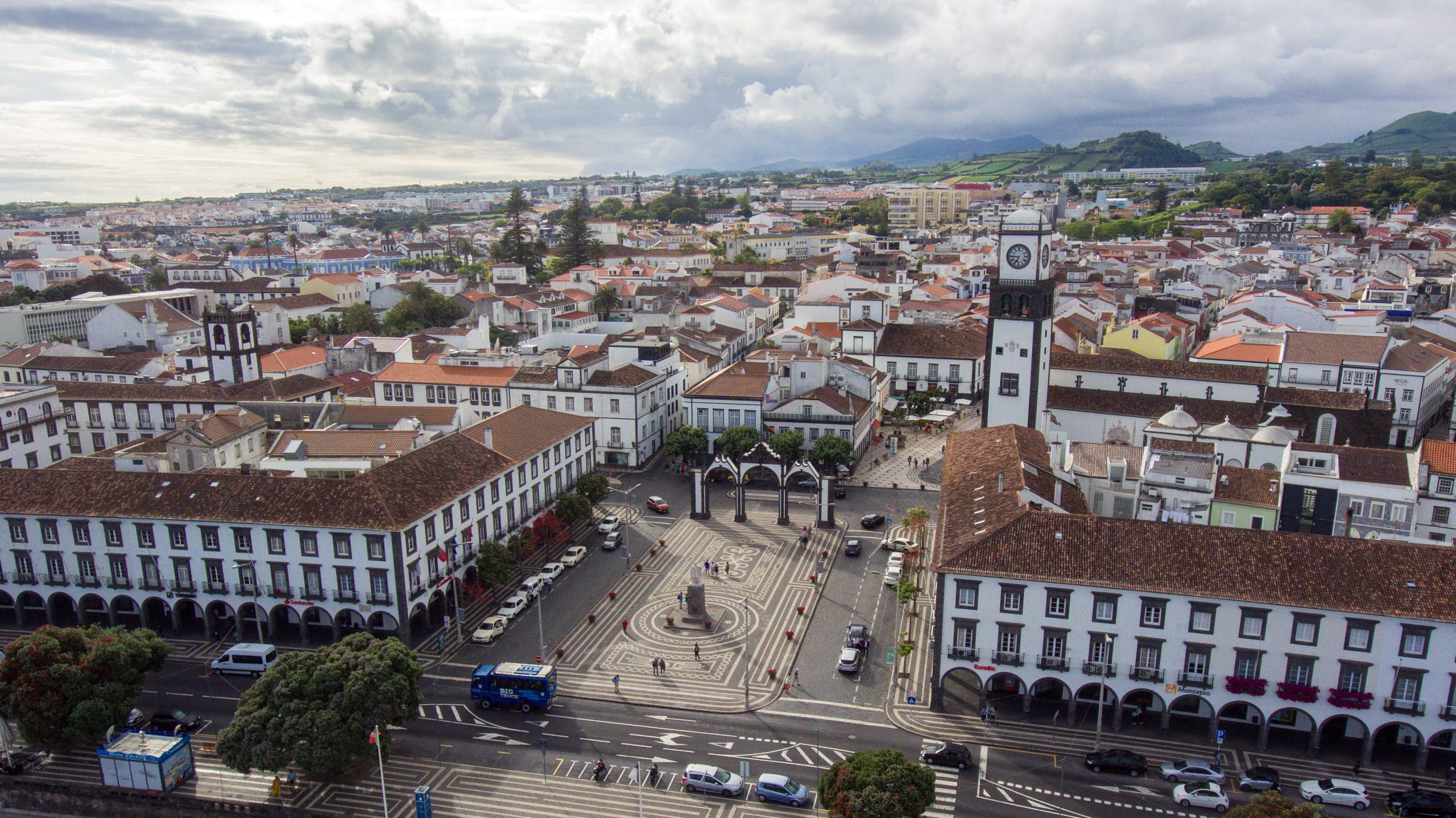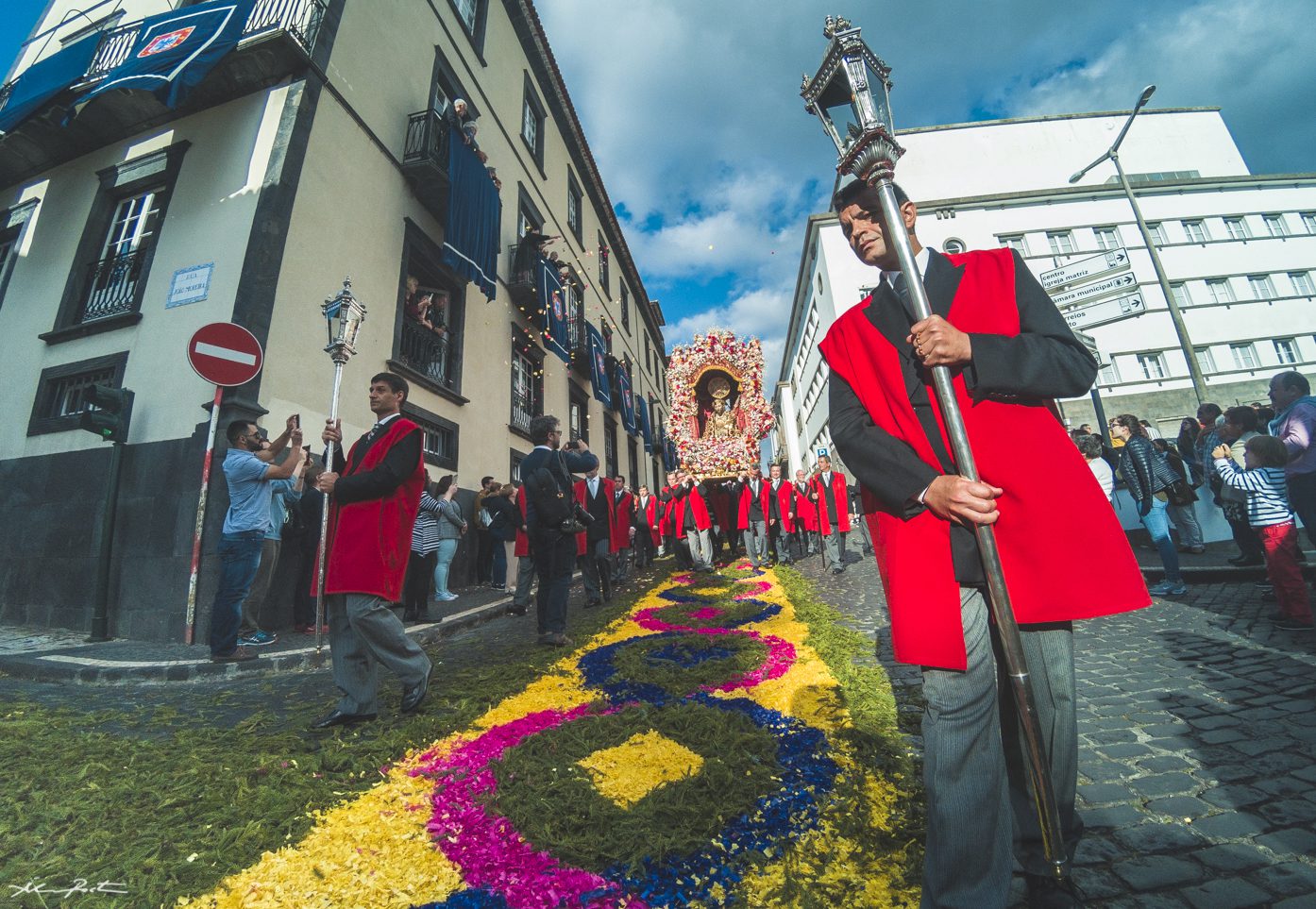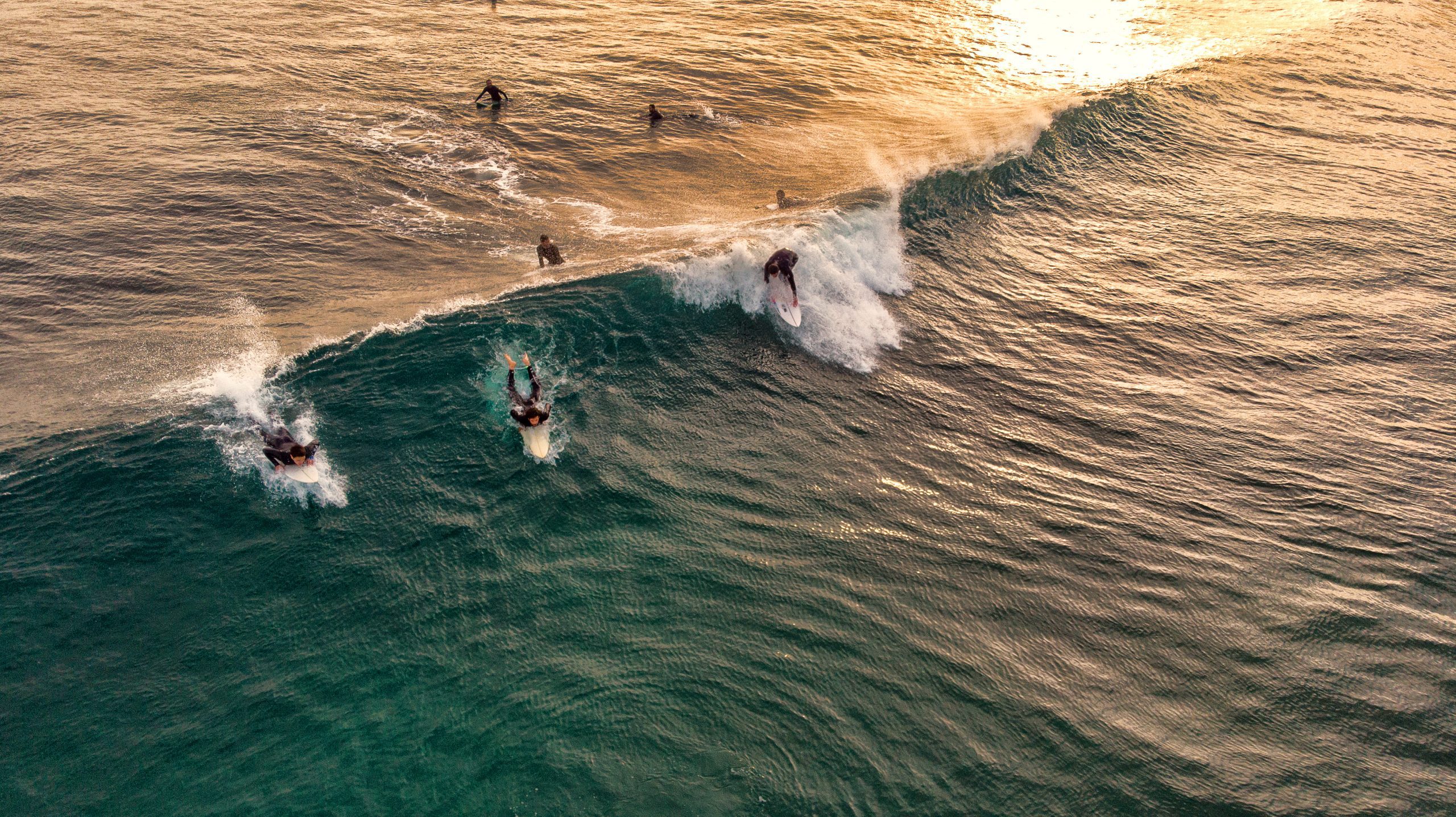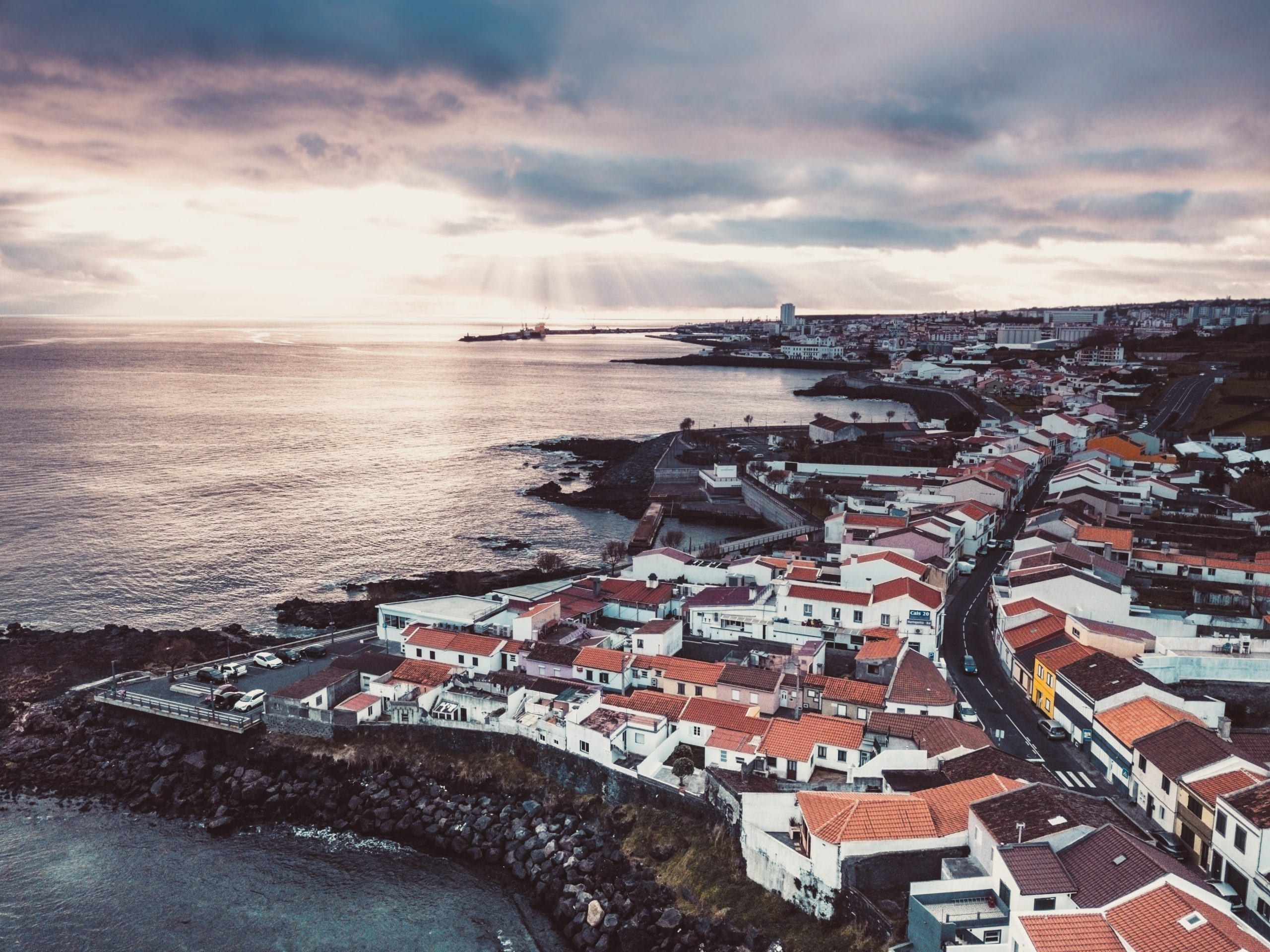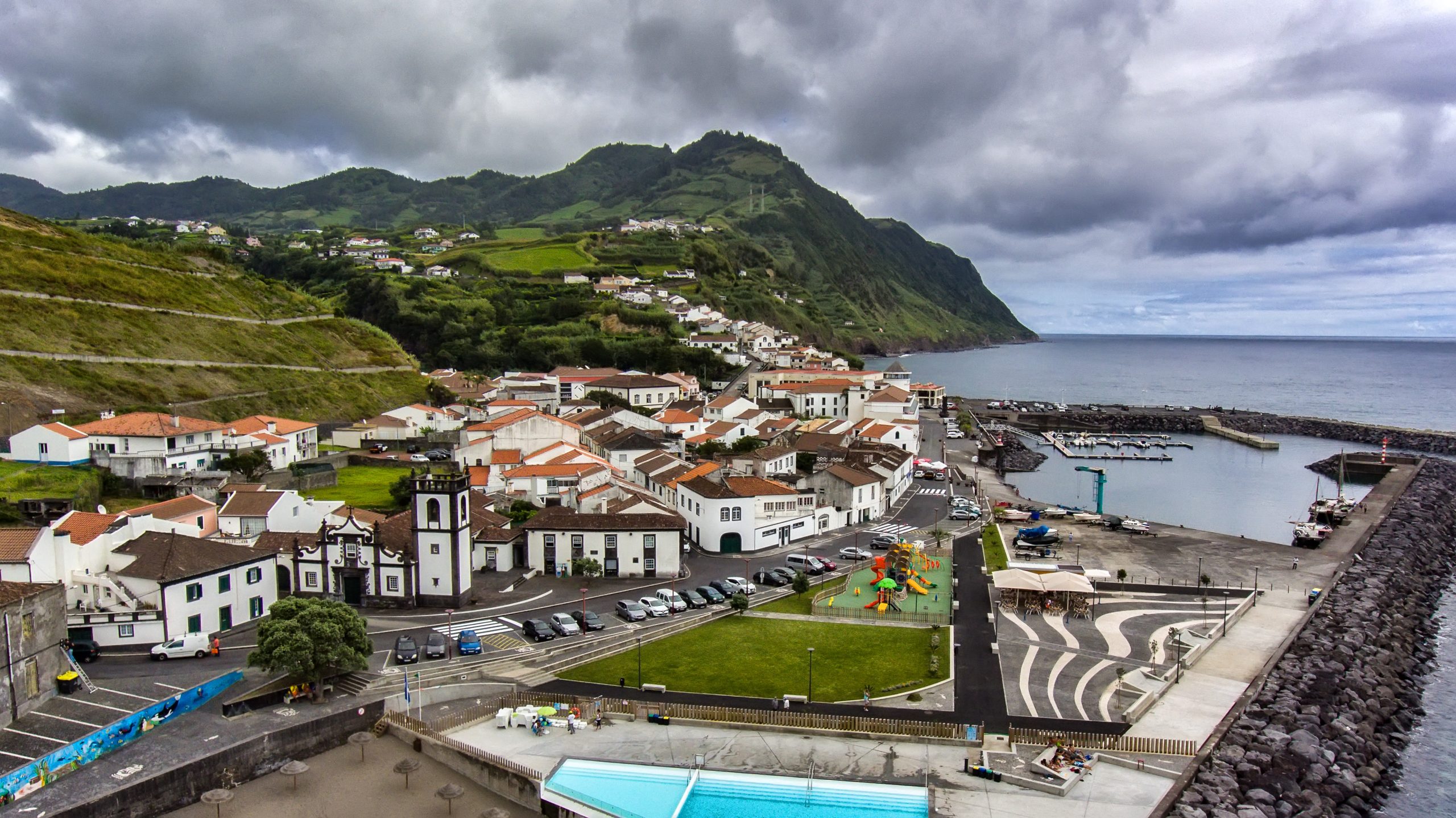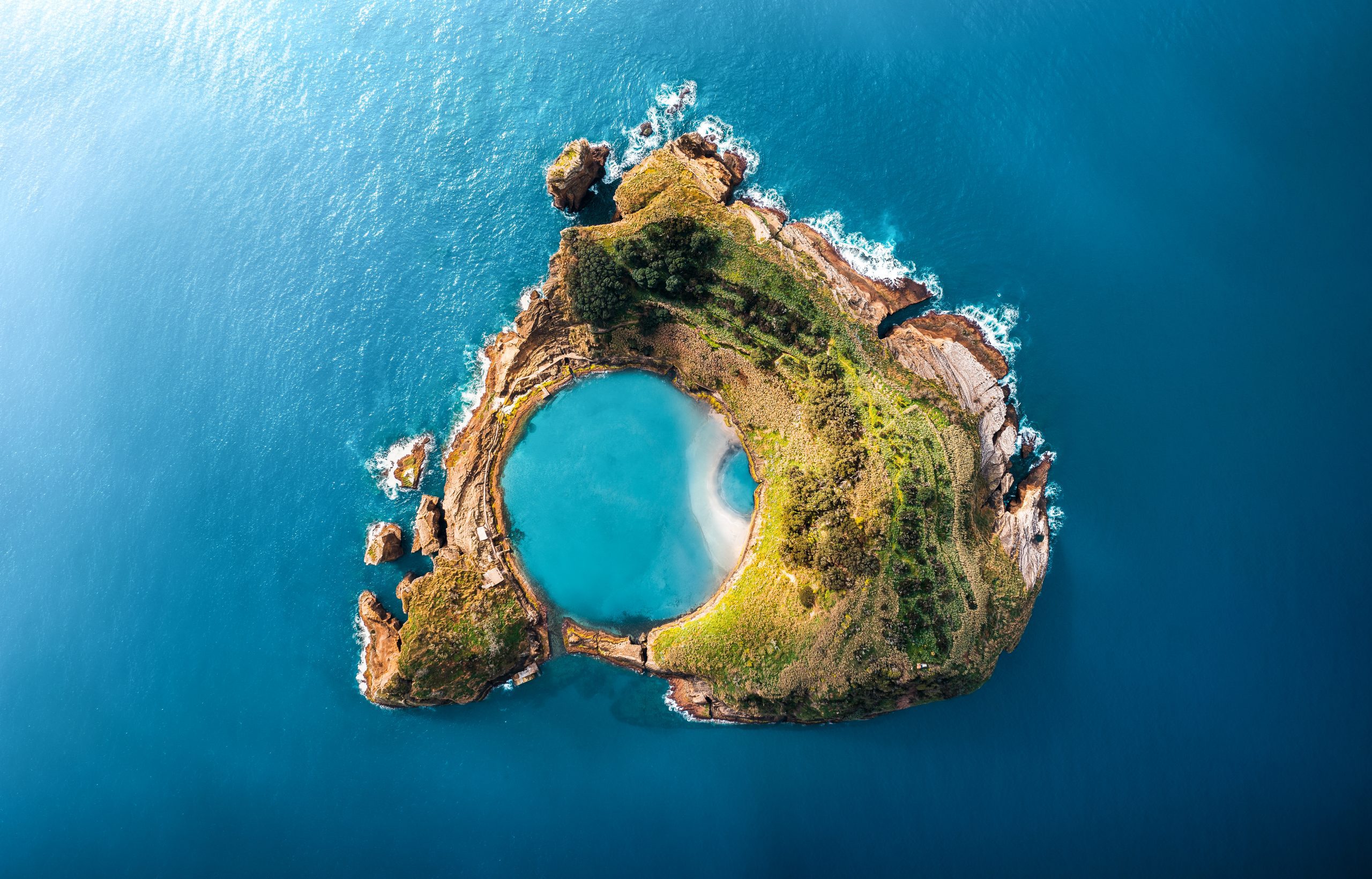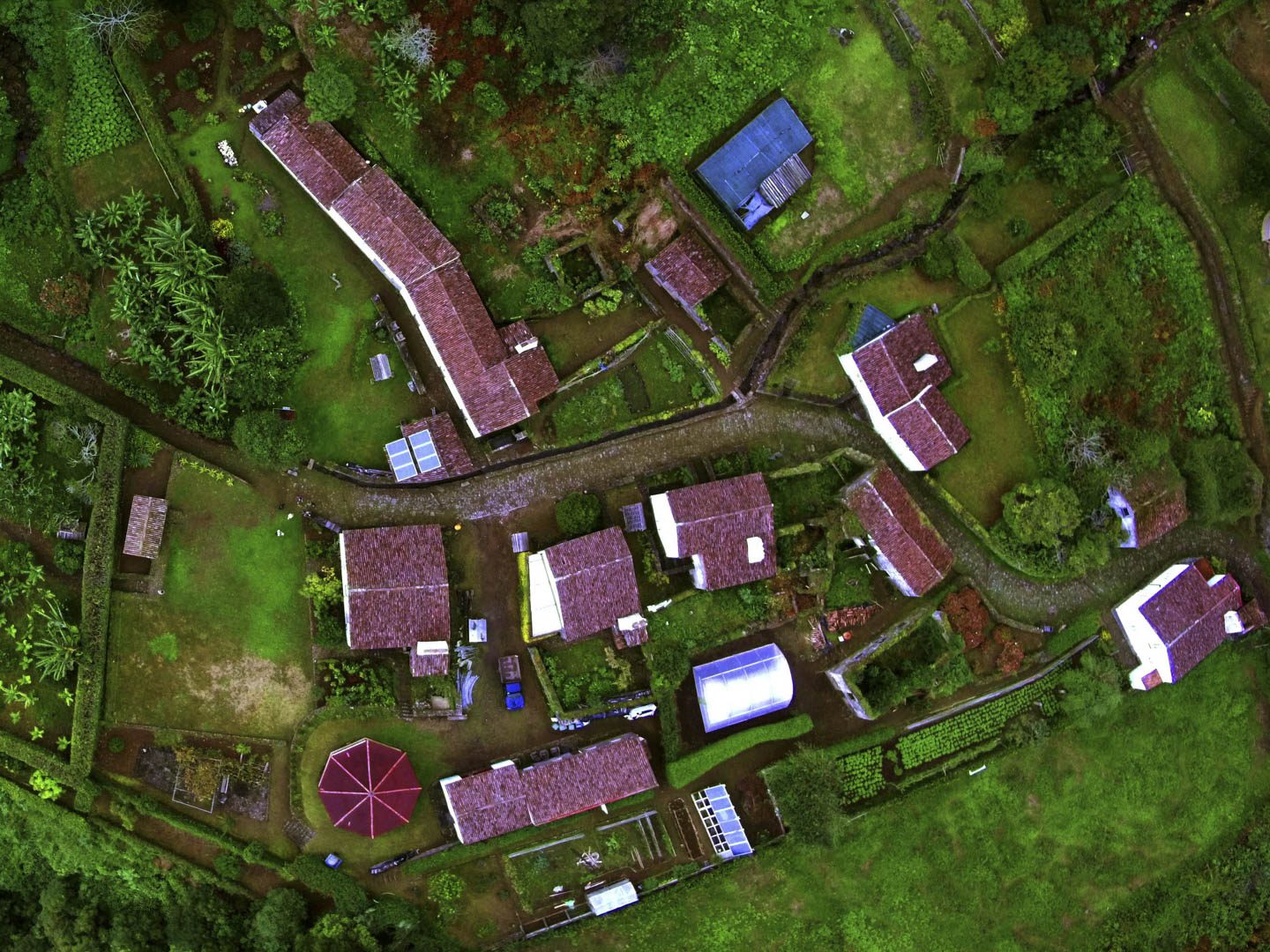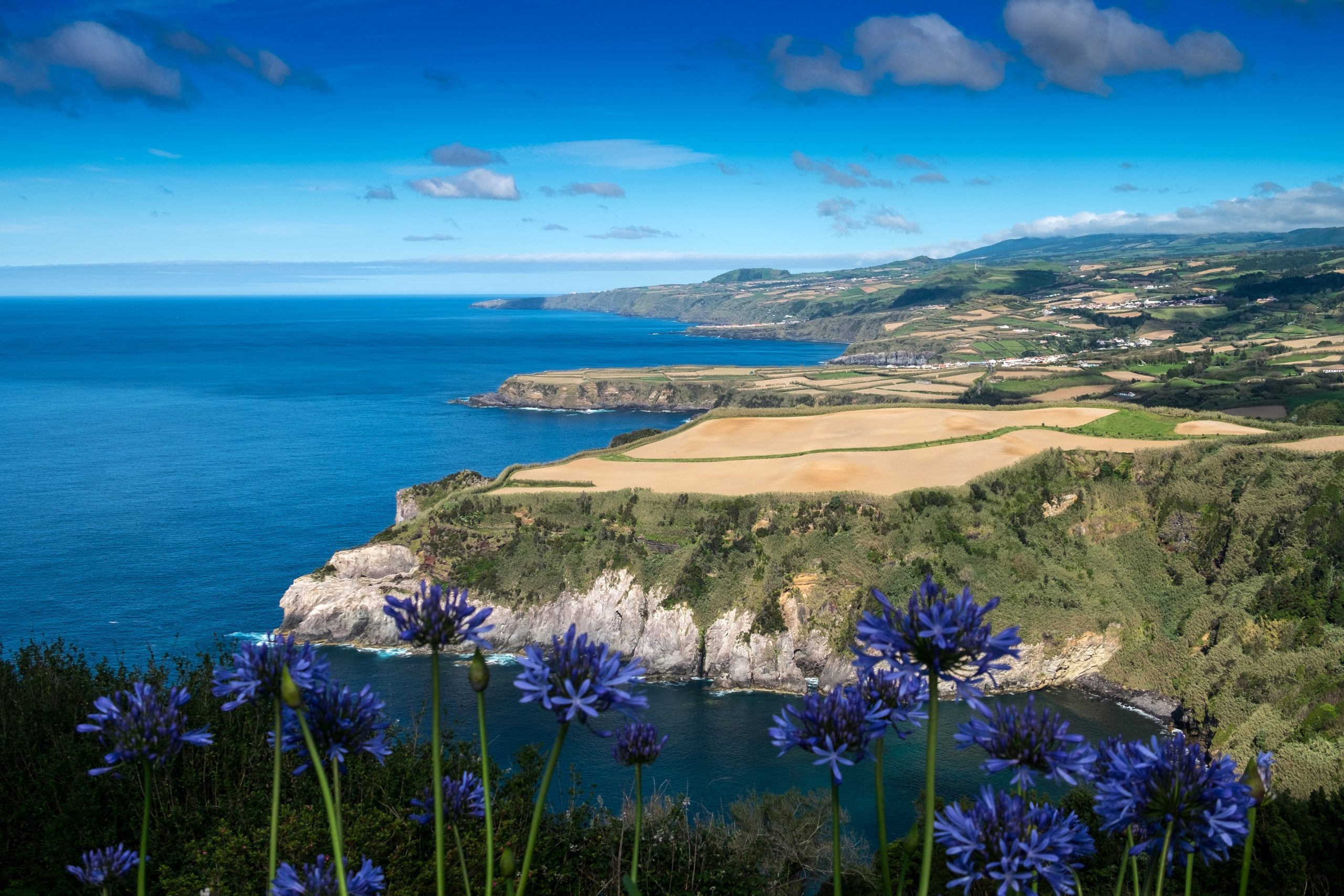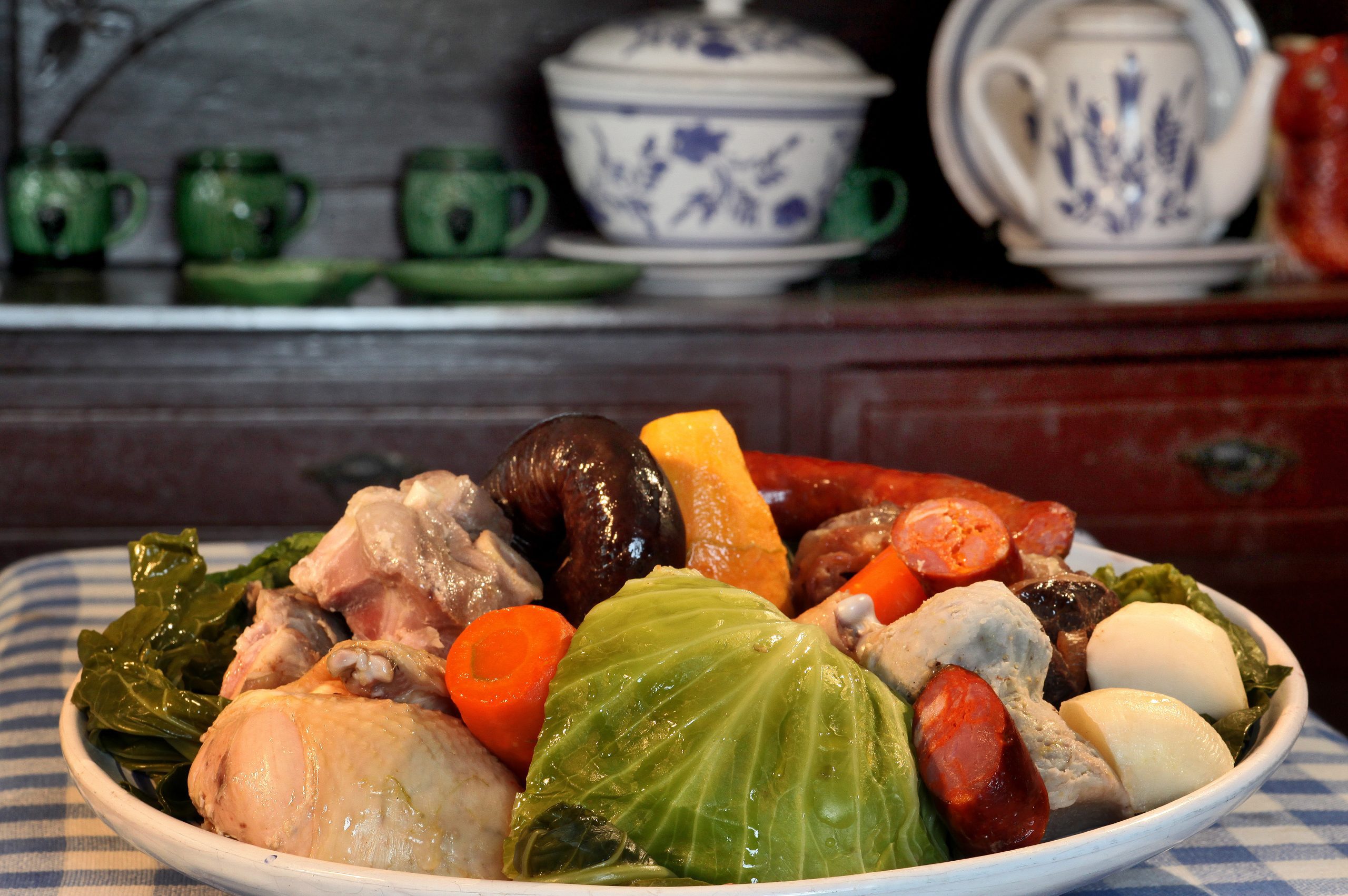Gruta do Carvão (which can be translated to the Charcoal cave) is a unique and fascinating natural wonder that draws visitors from all over the world. This lava tube, formed by volcanic activity over 10,000 years ago, is one of the most impressive geological formations in the Azores and a must-visit attraction for any traveler to the region.
It is the longest lava tube on the island of São Miguel, with an extension of up to 1,912 meters, although some archival documents report that the tube was much longer than the one we know today.
In this article, we will explore the history, geology, and biology of Gruta do Carvão and provide tips for visitors to make the most out of their trip to this incredible natural site.
What is Gruta do Carvão?

Gruta do Carvão is a lava tube, a type of cave formed by the flow of lava. When the lava flows, the outer layer cools down and hardens, while the inner layer continues to flow. As the lava flows through the tube, it leaves behind a hollow space once it solidifies, forming a tunnel-like structure.
Geology & Volcanology
The lava tube of Gruta do Carvão developed within an extensive basaltic flow that spans 2,500 meters. However, it is not a single cave, but rather divided into several sections: Paím (880.2 m), Tobacco Dryers (701.8 m), João do Rego (287.4 m), and José Bensaude (42.7 m). Those sections are cut by collapsed and obstructed areas, making passage impossible between them. The total explorable area is approximately 1,912 meters long.
Gruta do Carvão is situated within the volcanic complex of Picos, an area featuring approximately 250 volcanic cones that are around 50,000 years old.

Did you know?
Old historical reports and explorations indicate that Gruta do Carvão was once 5 kilometers long.
Gruta do Carvão exhibits a diverse range of geological structures characteristic of effusive volcanism. You can see unique rock formations, including lava stalactites, stalagmites, and other lava formations like lava balls, lava bridges establishing a link between two walls, ‘balconies’ – the evidence of the lava flows levels inside the tunnel, and much more!
Additionally, amorphous silica stalactites cause some parts of the ceiling to turn orange due to the presence of minerals such as limonite and Hematite. You will also witness a skylight, a natural opening in the ceiling that allows sunlight to enter. The floor is made of AA lava, an uneven and rough surface, as well as pahoehoe lava (noticeable as small smooth and lightly wavy areas)
History & Geography

This lava tube has been well-known for a long time, thanks to the efforts of researchers and writers. Indeed, it dates back as early as the 16th century, with the historian Gaspar Frutuoso referring to Gruta do Carvão in one of his chronicles. Many physicists and geologists also mentioned it in the 19th and 20th centuries. Gruta do Carvão was even considered the most remarkable volcanic tunnel of the Azores.
Throughout this period, the lava tube served as a home to numerous scientific studies and had multiple applications. For instance, the military thought about the cave as an eventual shelter in case of bombs falling on Ponta Delgada during World War 2. The Tobacco factory also used it as a storage place.
Gruta do Carvão extends up to 2.5 kilometres, from the coast of Santa Clara in Ponta Delgada to the emitting centre of lava flows that formed the cave, next to Serra Gorda in Arrifes. Some parts of Gruta do Carvão were discovered by locals doing work in their gardens, and also during the construction of Ponta Delgada’s airport. The cave only opened its doors to visitors in April of 2007.
Fauna & Flora

Gruta do Carvão is home to a diverse array of life forms. Despite not having any endemic fauna, biological communities are present in Gruta do Carvão. They adapted to the harsh conditions of the caves, characterized by a lack of light and high air humidity.
About the fauna, you can spot many birds, mostly at night, such as passerines, common blackbirds, and common chaffinches. From time to time, it is possible to see dead rabbits because they fall into the cave openings. The lava tube is rich in arthropods (invertebrates), including species such as Chthonius ischnocheles, Eidmanella pallida, and others.
In terms of vegetation, you can see some roots hanging from the cave’s roof. Around the entrances of the lava tube, numerous flora species are present, including Macaronesian holly, Azores laurel, and various ferns, among other varieties. You can also find many small plants and herbs.
Preservation

The first explorations of Gruta do Carvão began in 1994 by the ecological association Amigos dos Açores. They wanted to focus on this cave because they believed it was of obvious relevance to the speleology assets of São Miguel Island. From 1995 to 2006, they had to clean it thoroughly because it was filled with trash, mainly at the entrance points from the ceiling. 22 tons of soil, waste, and debris were removed.
Quick Info
In May of 2005, Gruta do Carvão was finally considered a Regional Natural Monument by the Government of the Azores.
Culture & Festivities
Throughout the year, Gruta do Carvão hosts numerous cultural and artistic events, including live music concerts, art exhibitions, and educational workshops. These events are organized by the Regional Government of the Azores, in collaboration with local cultural and academic institutions. This unique place also hosts alternative events, such as Sound Healing sessions and meditation concerts.
Gruta do Carvão is also a popular venue for school trips and educational tours. Students can learn about the cave’s geology, ecology, and cultural history, and gain real-life learning experiences that are both fun and educational.
What to Do at Gruta do Carvão
It is only possible to visit the Paim section of Gruta do Carvão from the Visitor Center in Ponta Delgada. A local guide is also mandatory to explore the lava tube. Please note that it is better to book your tour in advance. There are two types of visits: short and long.
Do the Short Visit

This visit is of easy access. You will be in a group of up to 15 people, and all participants will be equipped with a helmet. Accompanied by a specialist who will tell you everything about this natural wonder, you will discover about 200 meters of the cave for a duration of about 30 to 40 minutes.
Do the Long Visit

This type of visit requires good physical conditions as you will be navigating through rough landscapes and narrow parts of the cave. The route is approximately 800 meters long, and only up to five people are allowed to go at the same time.
With the more extended visit, you will have the opportunity to discover more about Gruta do Carvão, accompanied by a speleologist. You will be equipped with a helmet, headlight, gloves, and knee pads. Please note that this visit is not suitable for children under 10 years old. You also must be in good physical health.
Buy a Souvenir
At the visitor centre, you can find several pieces of art or souvenirs to purchase and keep this experience in your memories forever, once you return home.
Plan Your Visit To Gruta do Carvão

How to Get to Gruta do Carvão
The departure point for exploring Gruta do Carvão is located right outside the agglomeration of Ponta Delgada, next to the highway. When on the highway R1-1A in the direction of Relva, take the exit towards Paim and follow the brown signs indicating the way towards Gruta do Carvão.
You can walk there if you’re staying in Ponta Delgada, or take a taxi. You can also take a tour with us to explore this wonderful underworld.
What to Bring
To ensure a pleasant and safe visit to Gruta do Carvão, it is advisable to wear comfortable shoes, preferably those with flat and sturdy soles. Hiking shoes are good, but avoid city shoes with heels, for example.
Inside the cave it can be a bit cold sometimes. Don’t forget to bring a jacket or a sweater, but preferably waterproff as some water can drip from the ceiling and skylight openings.
Check all our articles about the weather in the Azores throughout the year 🌤️ ☔️: January | February | March | April | May | June | July | August | September | October | November | December
Where to Eat
If you need somewhere to eat near Gruta do Carvão, click here. In this link, you’ll find the 10 best restaurants on Tripadvisor.
Where to Stay
To make your life easier, we’ve filtered the search by:
Pricing & Operating Hours

Short visit:
- Children up to 6 years old: Free;
- Children from 7 to 14 years old: 5€;
- Adults from 15 to 64 years old: 8€;
- Students and people older than 65: 5€;
- Residents of the Azores: Free;
- Associates of Amigos dos Açores: Free.
Long visit: 20€.
Opening Hours:
- Open daily from 10:00 am to 12:30 pm and 2:00 pm to 6:00 pm.
Book by email (grutadocarvao@amigosdosacores.pt) or by phone (+351 296 284 155 // +351 961 397 080).
For a comprehensive tour of São Miguel Island, contact Futurismo.
Pro Tips

Take some warm clothes with you, but dress in layers for added comfort. As you walk, you get warmer and might want to take off your sweater. Don’t forget to book some weeks in advance, as it tends to fill up quickly during the summertime.
What to Do Around Gruta do Carvão
Explore Ponta Delgada Municipality

The municipality of Ponta Delgada is the most populous in the Azorean archipelago. Considered by many to be one of the best places to live, this town is full of tourist attractions that are well worth a visit. Originally, Ponta Delgada was just a small fishing village. But soon, thanks to its safe bays, it became the most important trading port on the island of São Miguel.
Ponta Delgada was declared a city in 1546 and subsequently became the island’s capital, following the destruction of Vila Franca do Campo by an earthquake in 1522. Today, this cosmopolitan city, with approximately 69,000 inhabitants, attracts visitors from all over the world. Here, you can enjoy the sea breeze, the stunning mountain views, and the delicious local food that is an integral part of the town’s daily life.
Check all our articles about each one of the most relevant points of interest in Ponta Delgada: Gruta do Carvão | Ponta Delgada | Jardim António Borges | Jardim Botânico José do Canto | Pinhal da Paz | Portas da Cidade | Milícias & Pópulo Beaches | Praia de São Roque | Pico Vermelho Windmill | Rocha da Relva | Mercado da Graça | Miradouro Vigia da Baleia
Go On a Whale and Dolphin Watching Trip

The Azores islands are a whale and dolphin paradise! There are approximately 28 different species of cetaceans, with four of them being resident in the area. This means that you can see all of them year-round: Sperm whales, Risso’s dolphins, Bottlenose dolphins, and Common dolphins.
From March to June, you can see some of the biggest animals in the world passing by the archipelago during their migration. Blue whales, Sei whales, and fin whales are pretty impressive to watch.
Would you like to know the best times for whale watching?
Take a look at our whale watching calendar and plan your next adventure! Don’t miss the chance to spot these majestic creatures in Azorean waters. 🐋 🌊
From Ponta Delgada, there are daily tours for whale and dolphin watching. Join Futurismo on a boat excursion to responsibly try to spot those amazing animals. We have marine biologists on board and adhere to strict observation protocols for the well-being of the animals.

Hike Rocha da Relva

Rocha da Relva is a village by the water. To get there, you need to take a trail of approximately 5.5 km, which can take up to 3 hours of walking if you decide to walk the entire route. It is located about 5 minutes away by car from Ponta Delgada and is a nice place to walk, surrounded by nature with a constant view of the Atlantic Ocean. Down at the village, you will see cute typical houses, some street cat,s and even donkeys used to bring stuff up and down the trail for the few people living there.
Walking Around Jardim António Borges

This historic garden, created in 1858, in Ponta Delgada showcases plants from around the world. The highlights include the centennial gigantic trees with roots that reach higher than you, the stone caves scattered throughout the park, and the lookout towers. The garden was private until 1950, and it is now open to the public at no charge. There are ducks at the ponds, and even a little café serving delicious meals.
Complementary Information
Best Season to Visit the Azores
The Azores Archipelago boasts a unique climate that shapes its lush landscapes, making it a splendid year-round destination. With mild temperatures and minimal fluctuations, each season offers something unique. Spring averages 16 °C, summer reaches 21 °C, autumn cools to 18 °C, and winter remains mild at 14 °C.
→ For a detailed breakdown of the weather by month, check the following links 🌤️☔️: January | February | March | April | May | June | July | August | September | October | November | December
How to Get to the Azores
The Azorean Archipelago is easily accessible through numerous flight routes. Lisbon and Porto are the main entry points to the continent, with direct flights available to São Miguel (PDL), Terceira (TER), Faial (HOR), Pico (PIX), and Santa Maria (SMA). To find the best flight, use search engines like eDreams or Skyscanner. These platforms let you compare prices and schedules from multiple airlines in one convenient location.
For more details on how to get to the Azores, take a look at our complete guide. But what if you want to explore beyond your arrival island? We’ve got you covered!
- Azores airports 🛬
- Flights between islands ✈️
- Ferries between islands ⛴️
- Which island to choose? 🏝️
- What airlines fly to the Azores? 🛩️
→ Once you’ve found the perfect route, book your tickets and get ready to experience one of the world’s most stunning island groups!
Travel Essentials
Essential Information for your Azores trip: Azorean Language & Phrases 🗣️ | Currency & Banks 💵 | Credit Cards & Traveler’s Cheques 🏧 | Driving in the Azores 🚗 | Electricity 🔌 | Experiences & Tours 🗺️ | Health & Safety 🩺 | Internet & Wi-Fi Access 🛜 | Phones & Mobile Service 📞 | Post Offices & Buying Stamps ✉️ | Public Holidays 🏖️ | Shopping 🛒 | Time & Daylight 🕒 | Whale Watching Guide 🐳 | Best Island to Visit 🏞️
Useful Tools & Apps
The weather in the Azores can be variable, so it’s helpful to use some apps before visiting the islands. Spotazores provides live camera feeds from the main tourist attractions, allowing you to check the weather and plan your visit. For accurate weather predictions, use Windy or Windguru — they provide the most reliable predictions.
Video
Conclusion
The fantastic natural gem of Gruta do Carvão offers its visitors a unique experience. This lava tube, formed over 10,000 years ago, showcases authentic rock formations and is simply fascinating, whether you are a geology enthusiast, a history buff, or simply someone who appreciates the beauty of Mother Nature.
A visit to Gruta do Carvão is sure to be a highlight of your trip to the Azores, as it holds a significant part in the Azores Geopark. You will gain a better understanding of the volcanic origins of the Atlantic islands. It is one of the most essential volcanic features on the green island.
Gruta do Carvão attracts numerous explorers from around the globe due to its unique characteristics and elements. It’s a great place to visit and a good alternative on rainy days.

